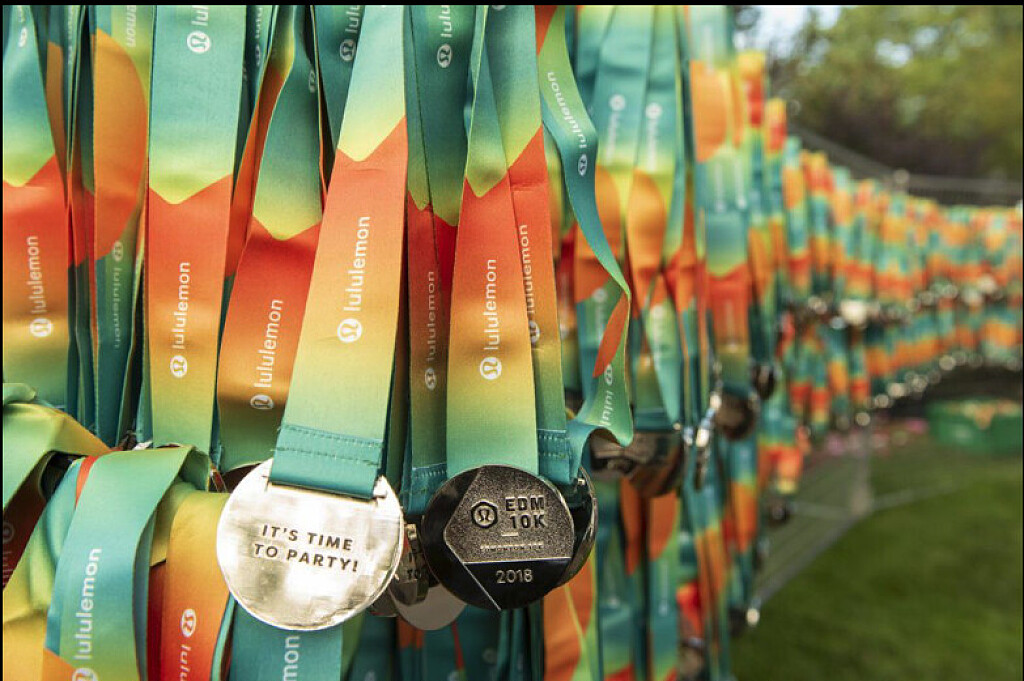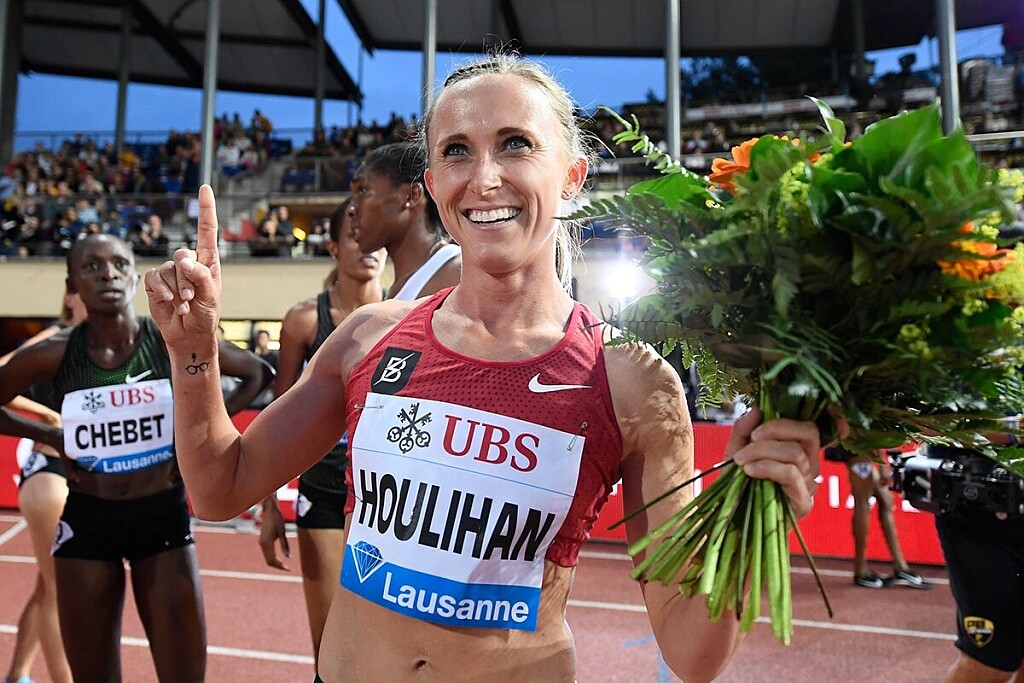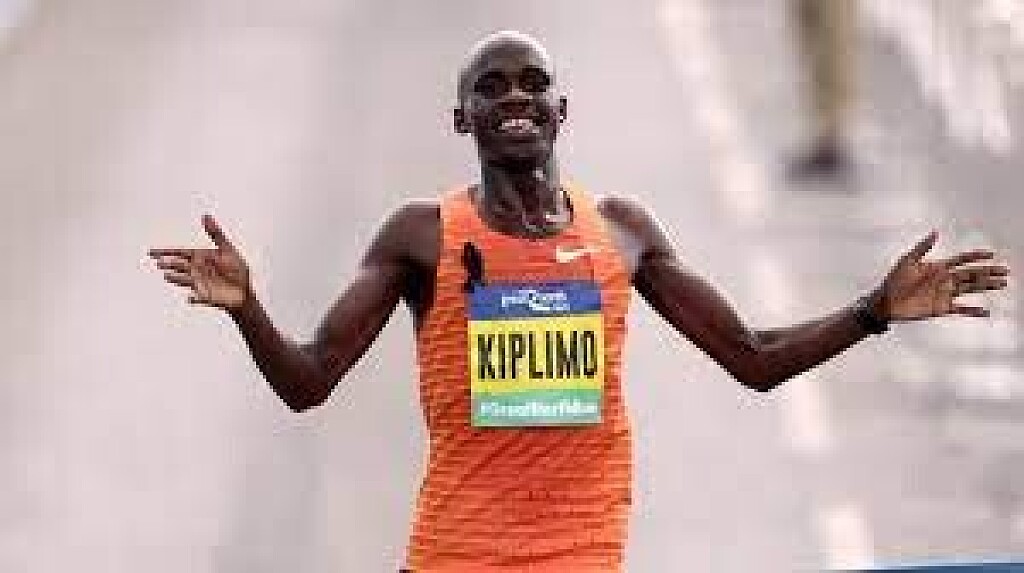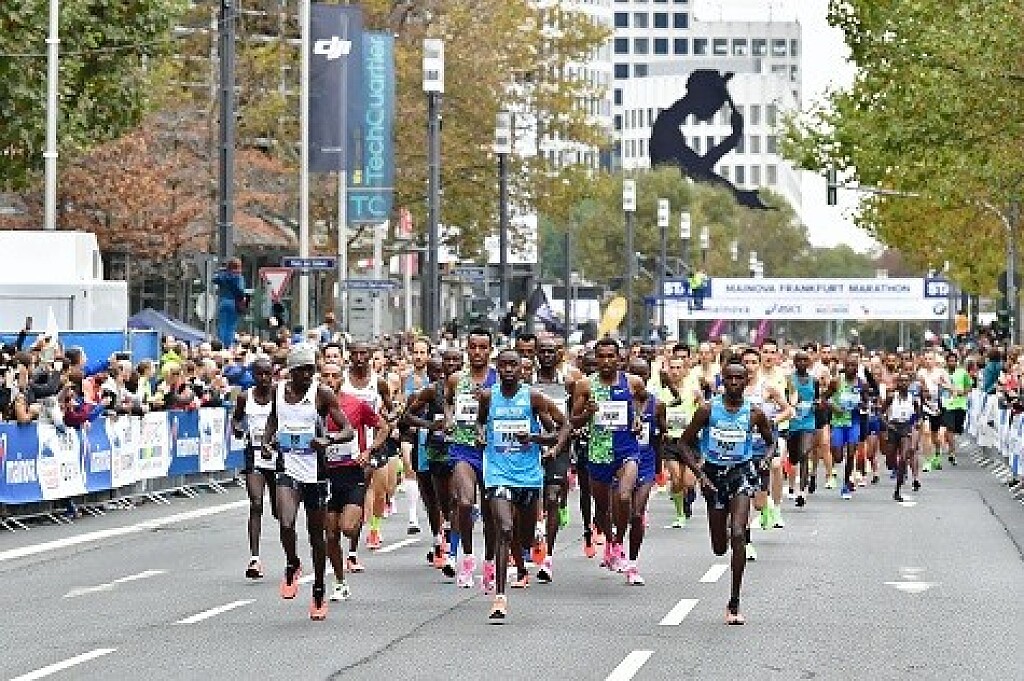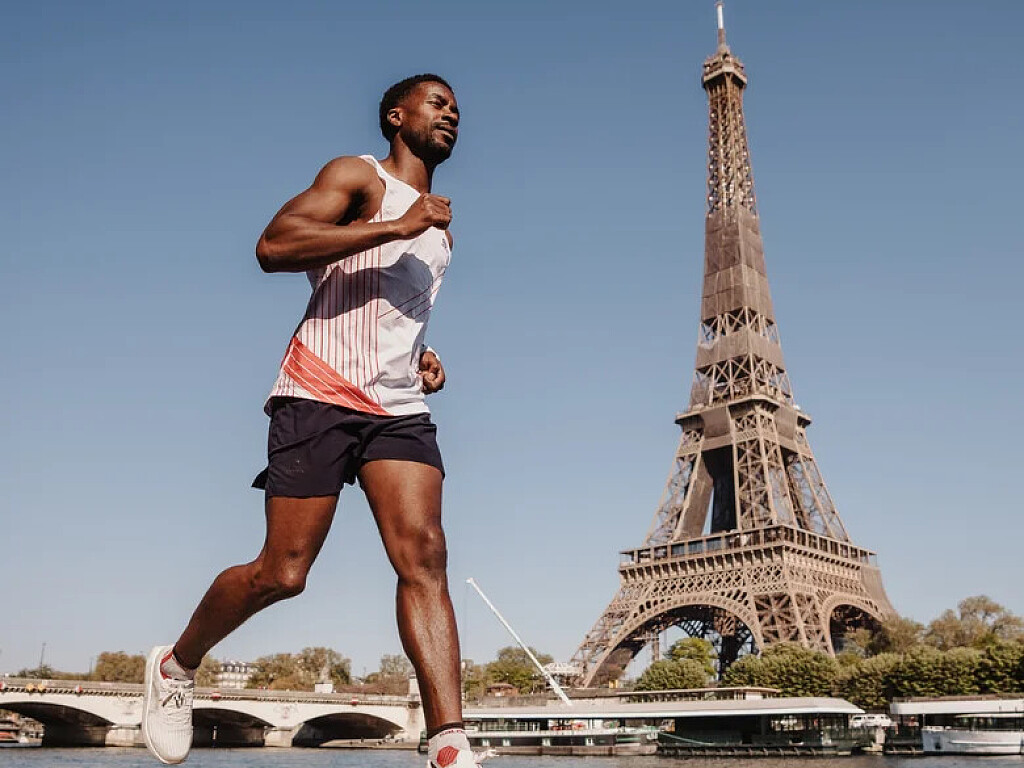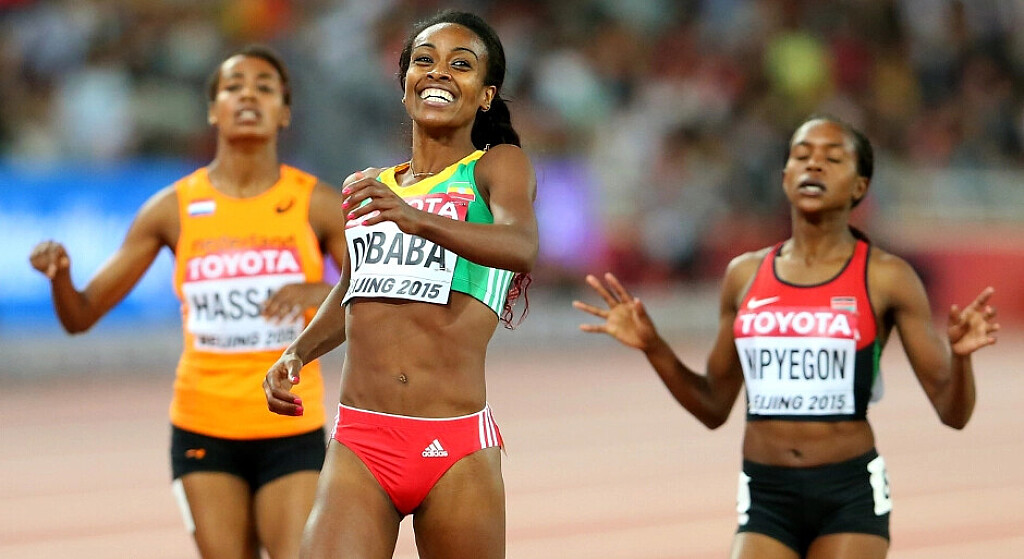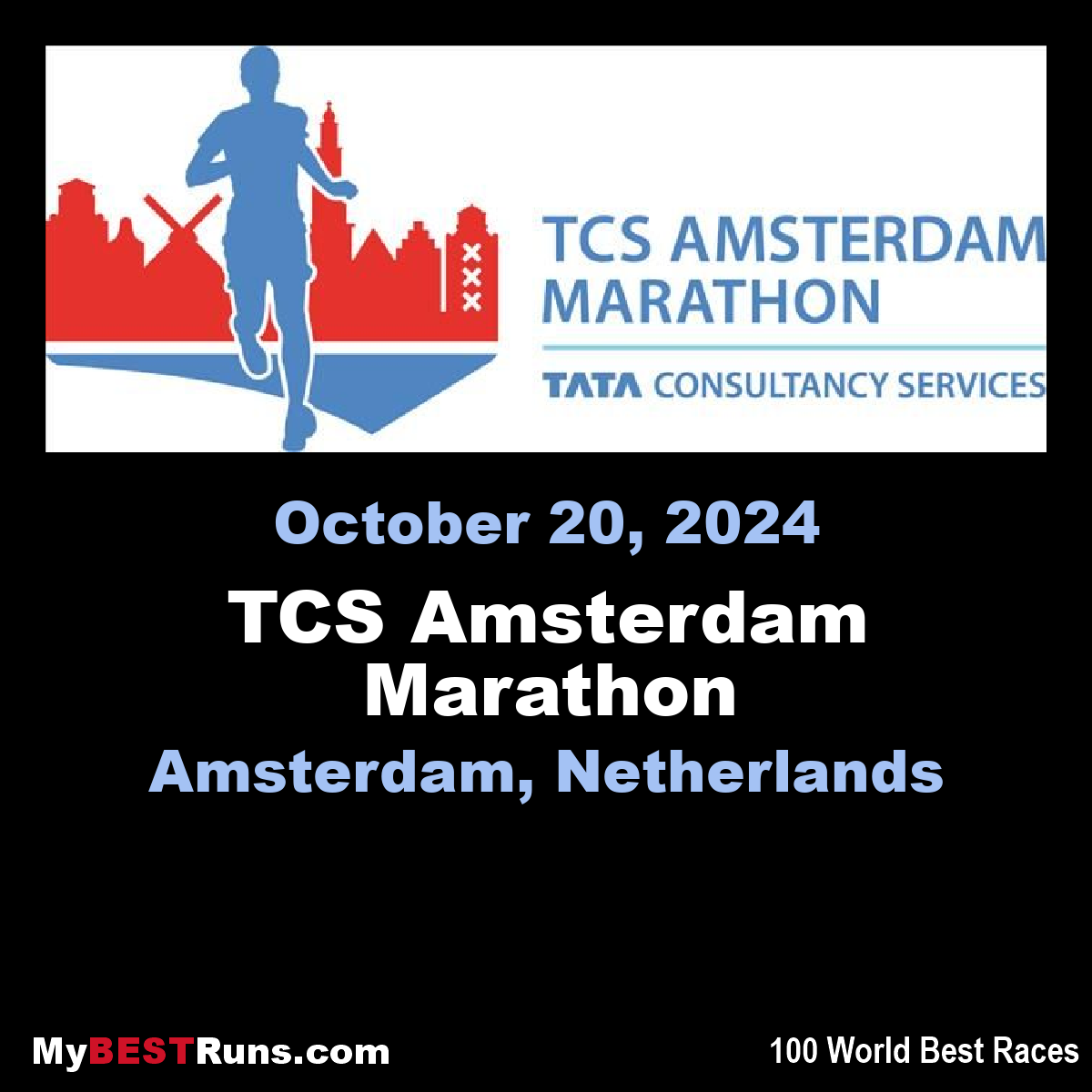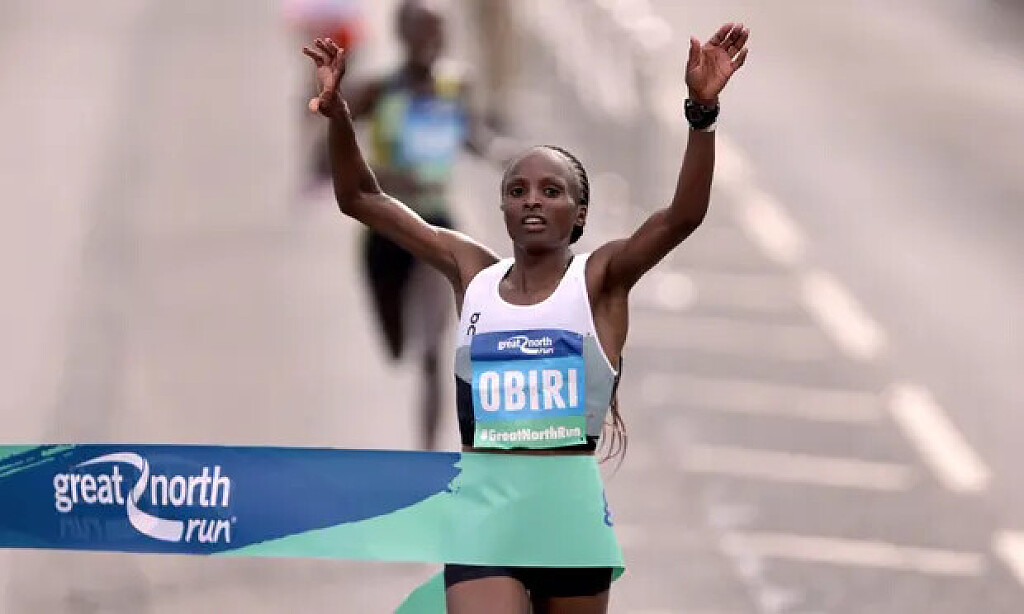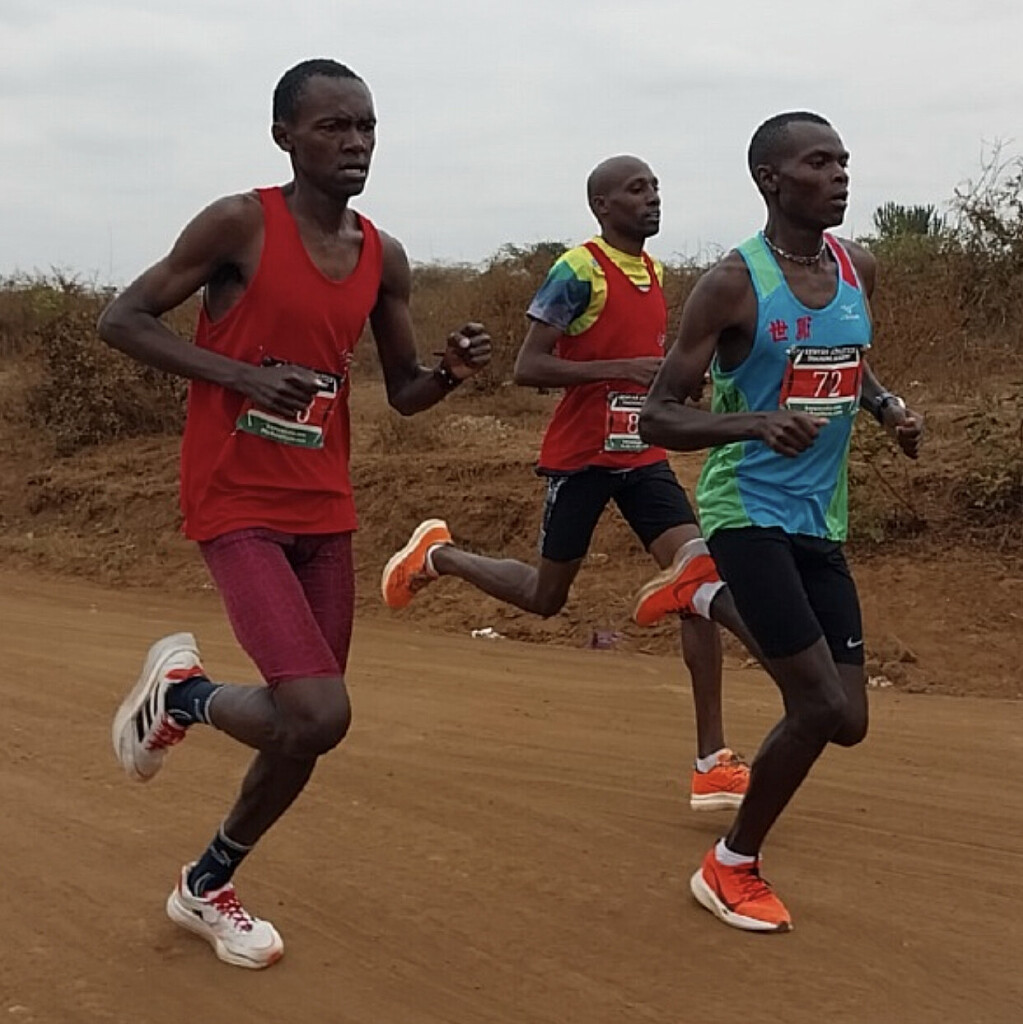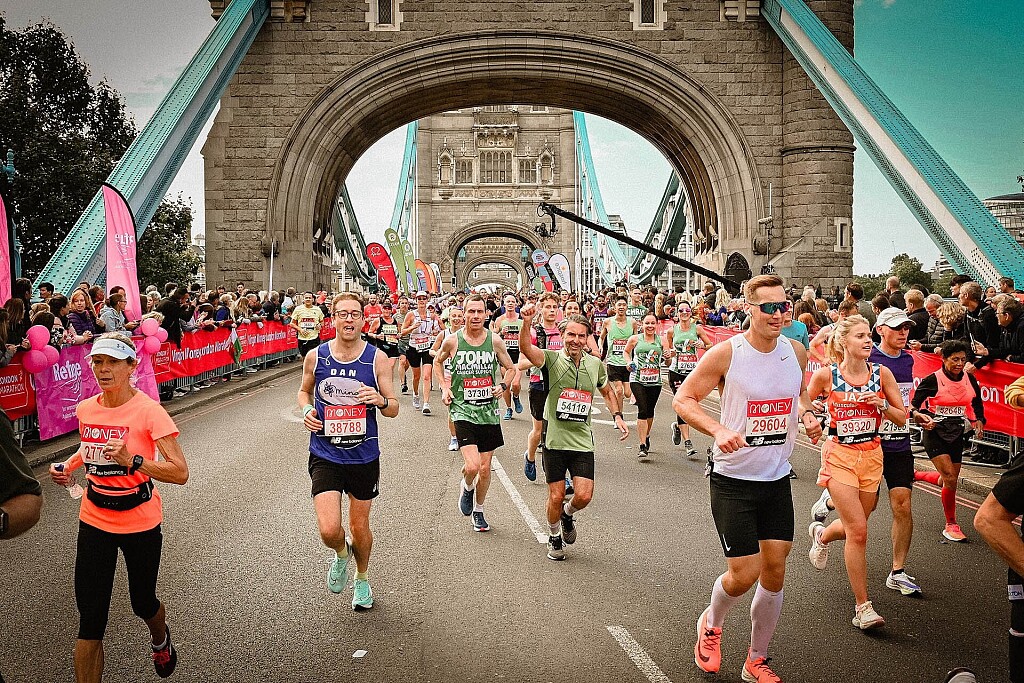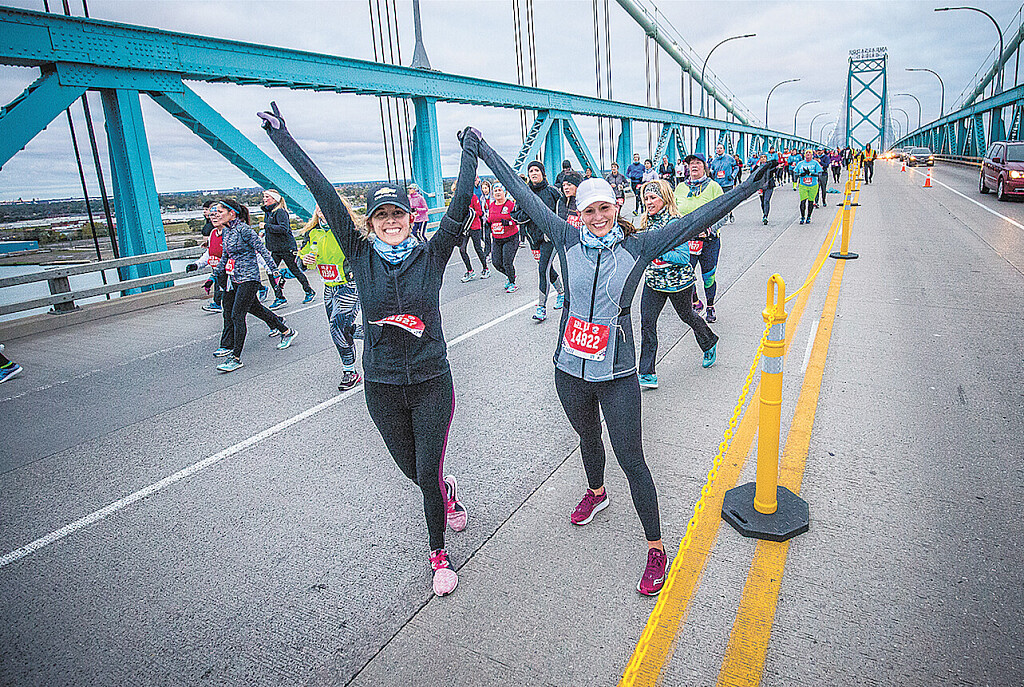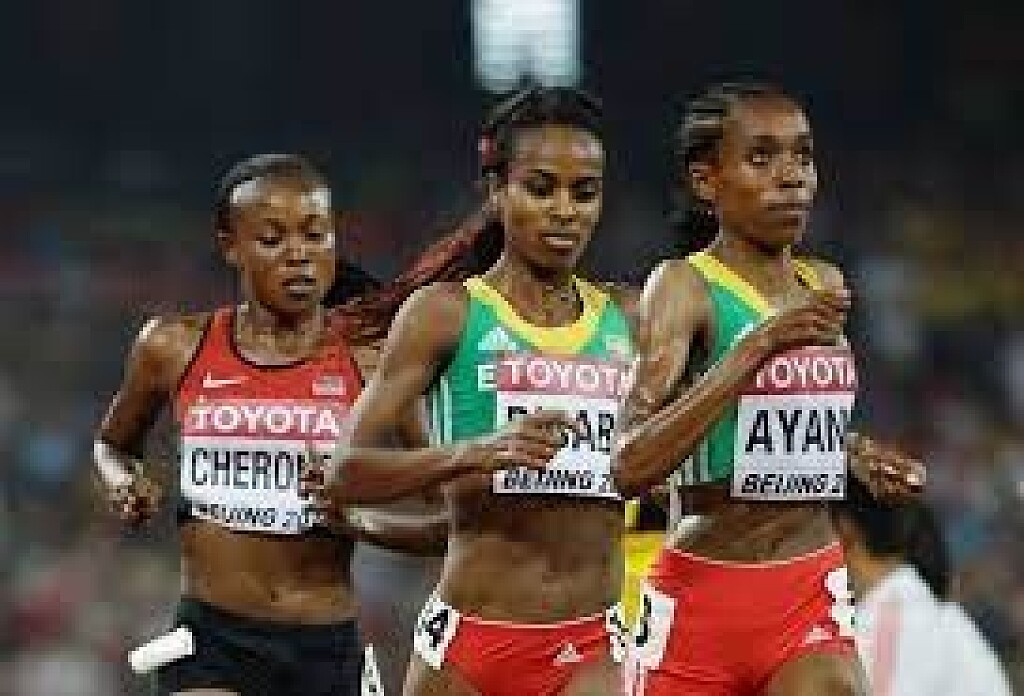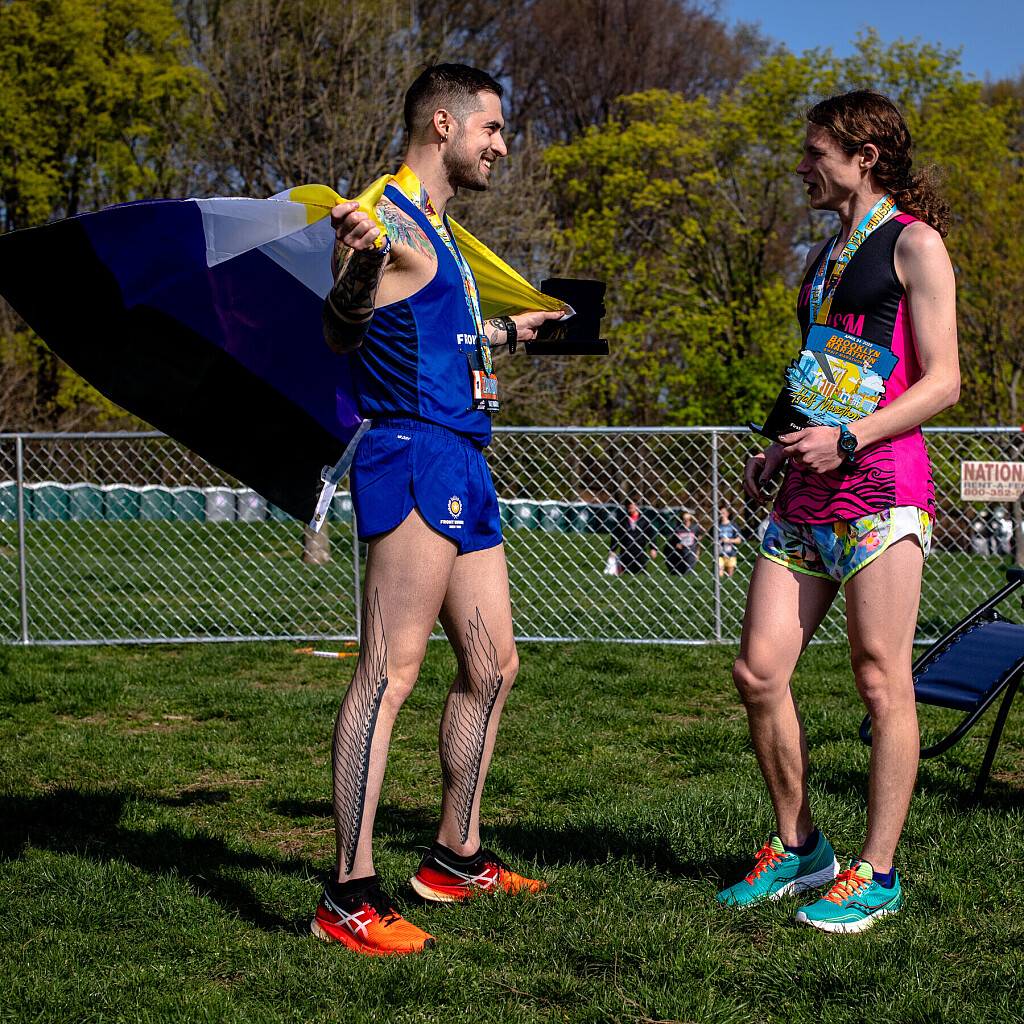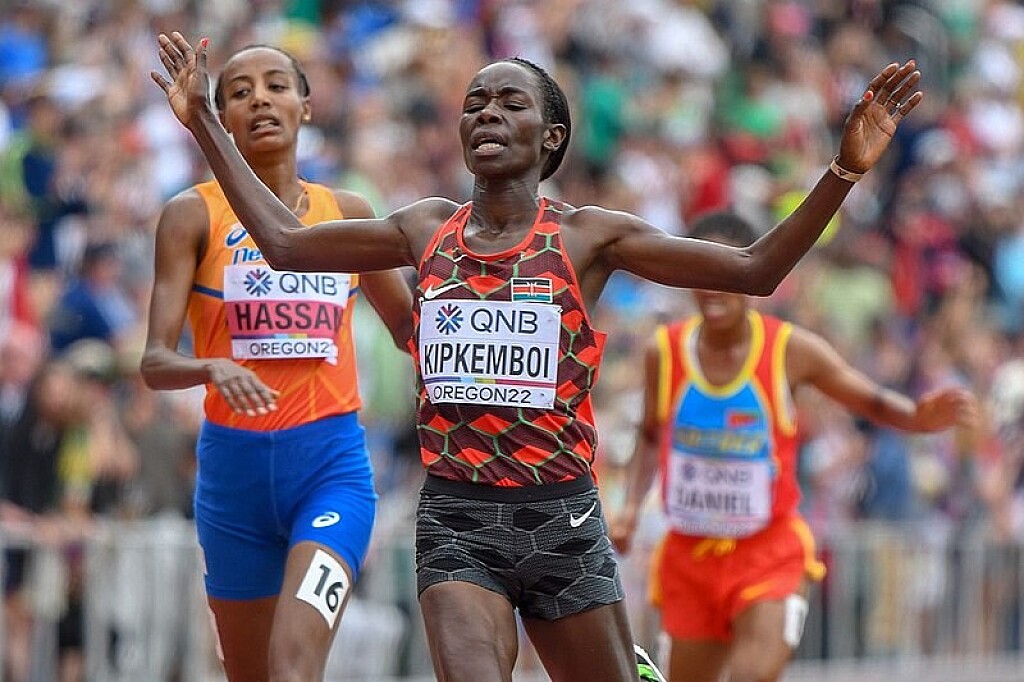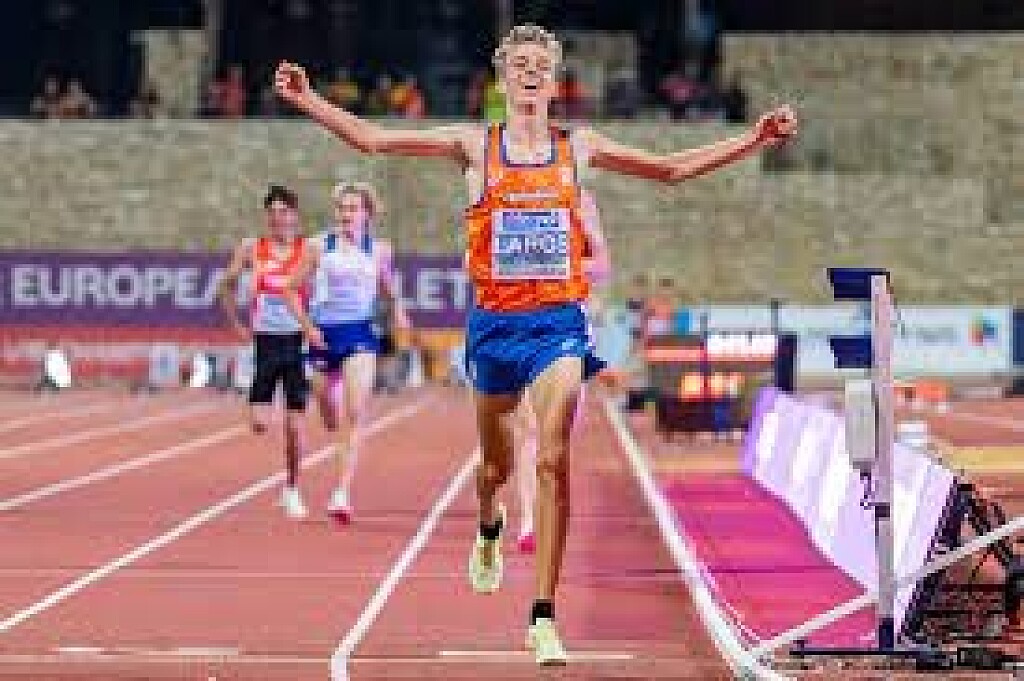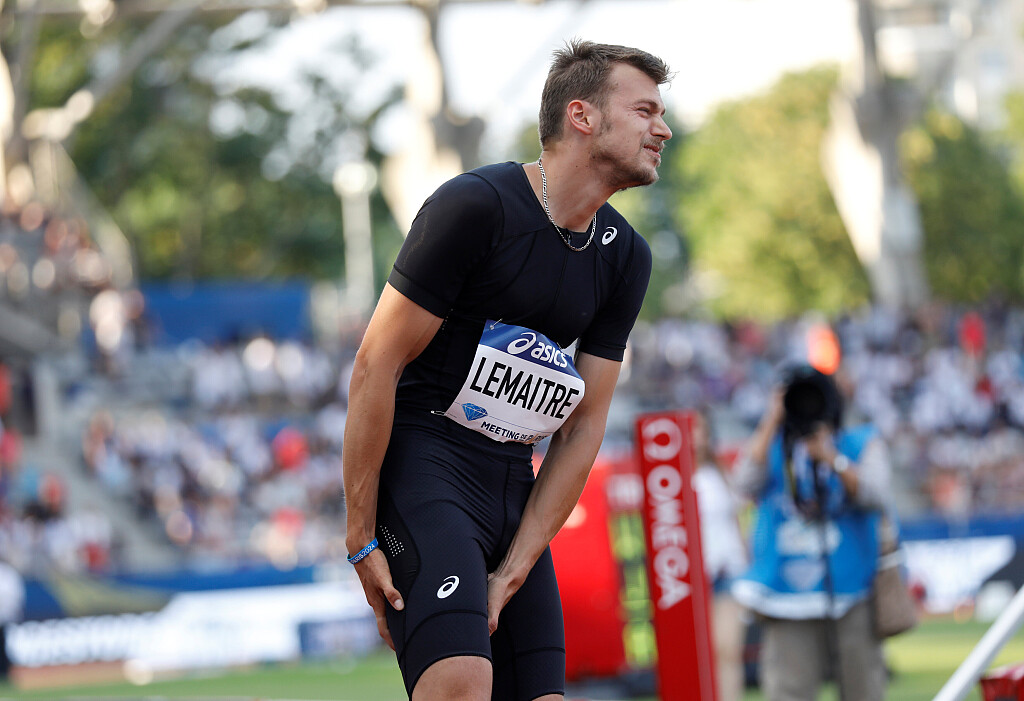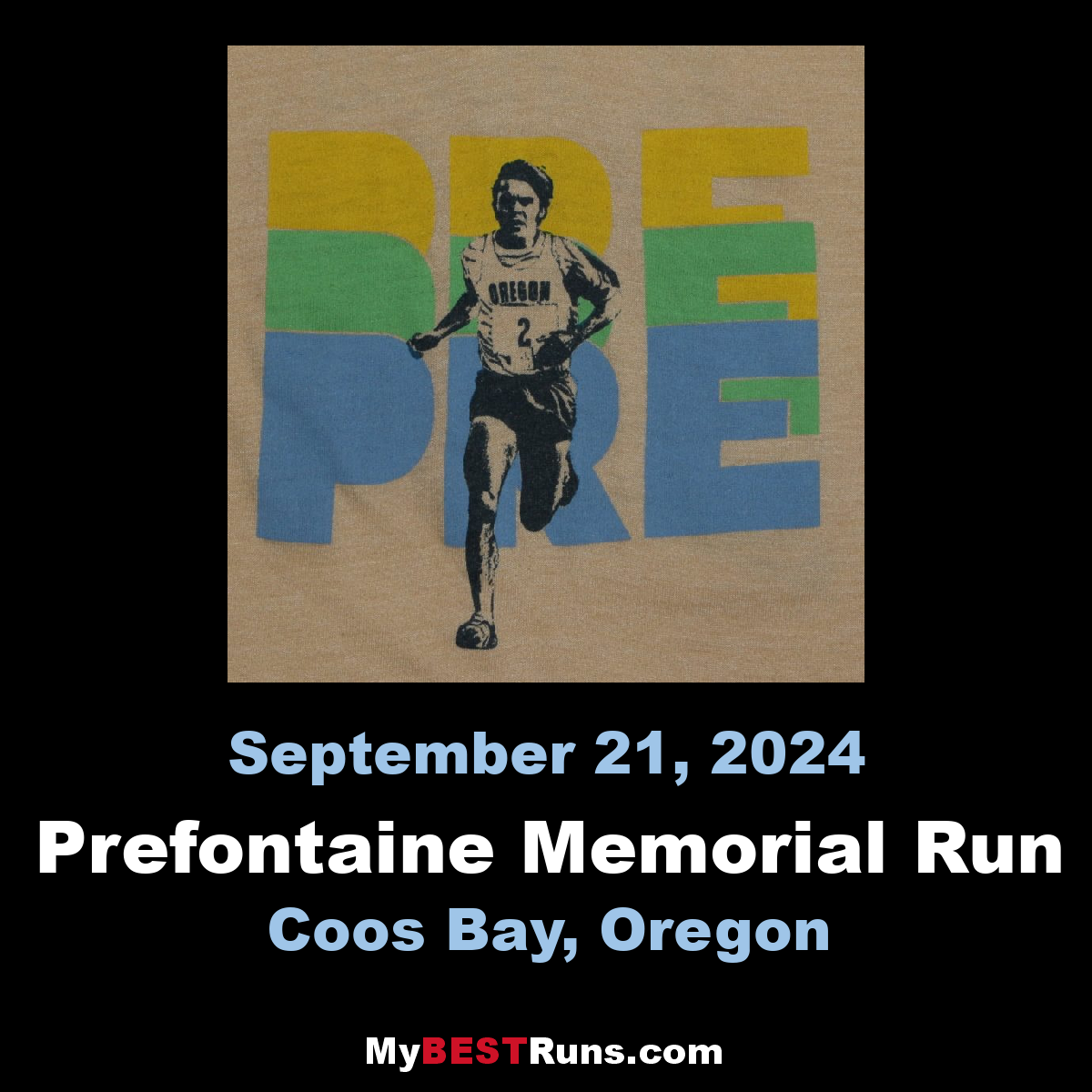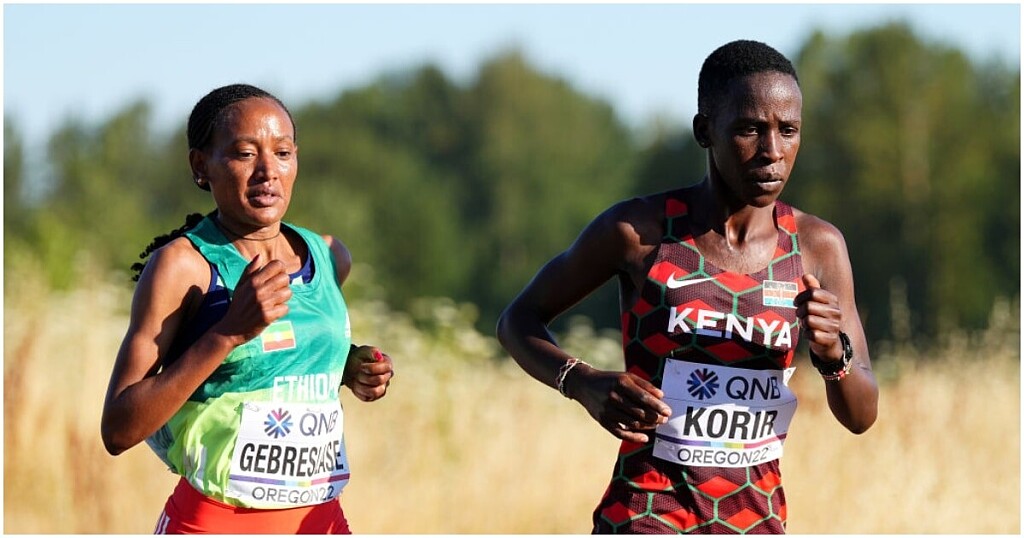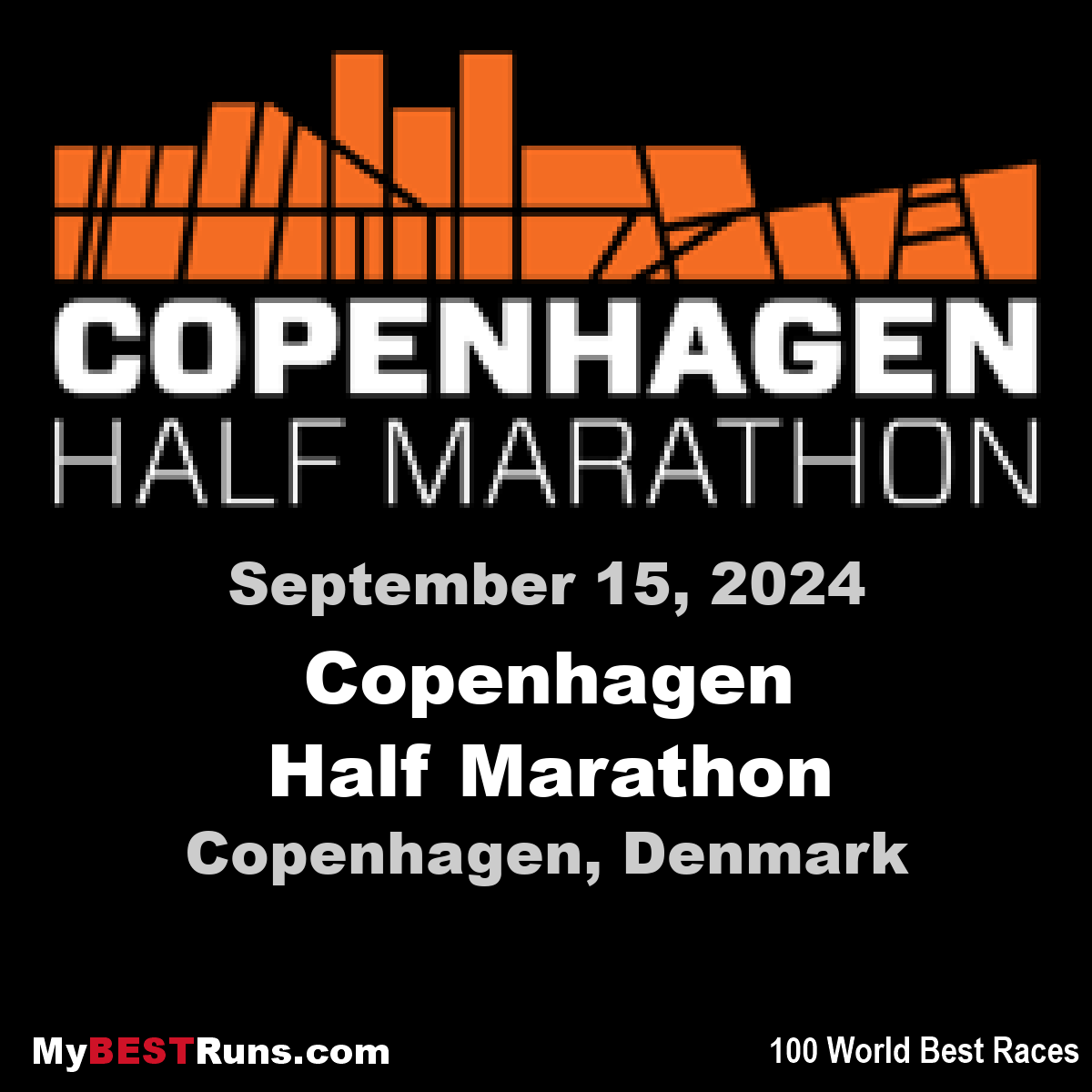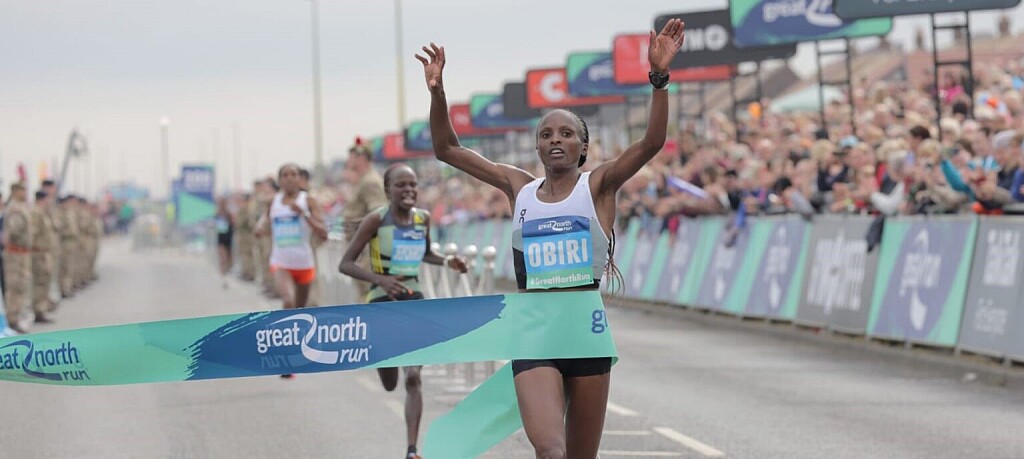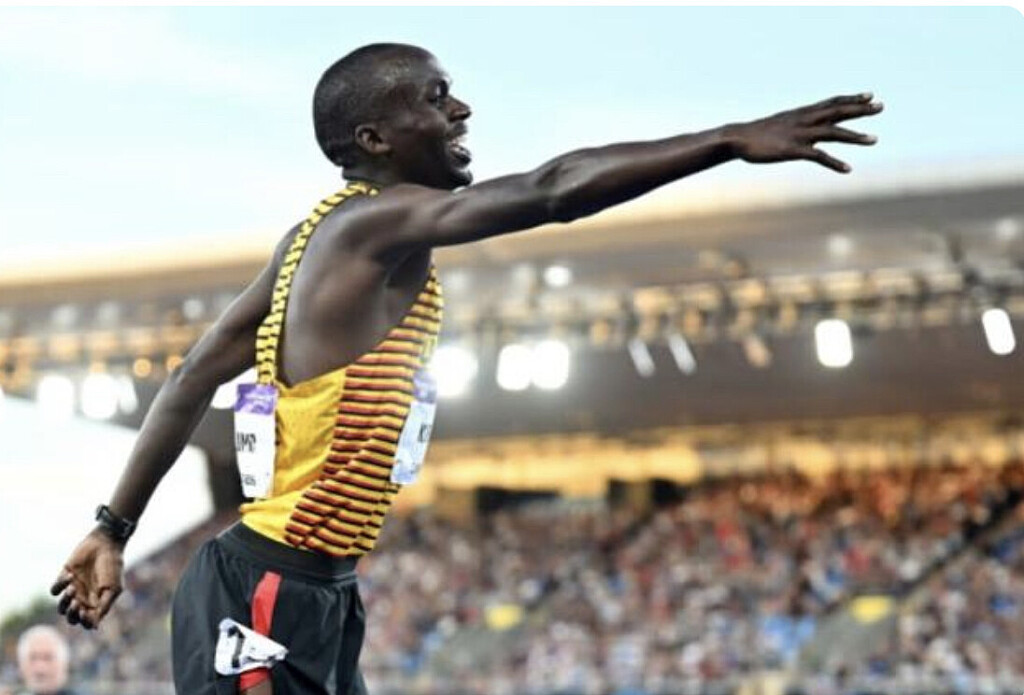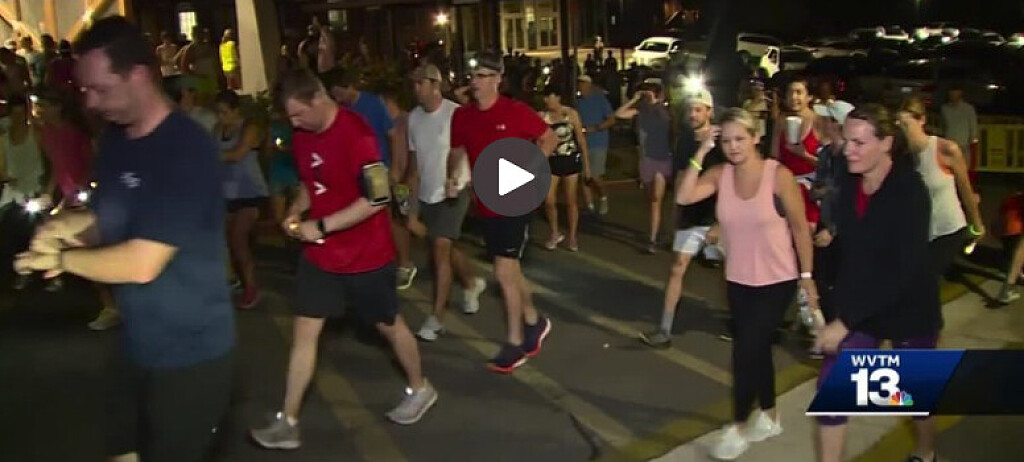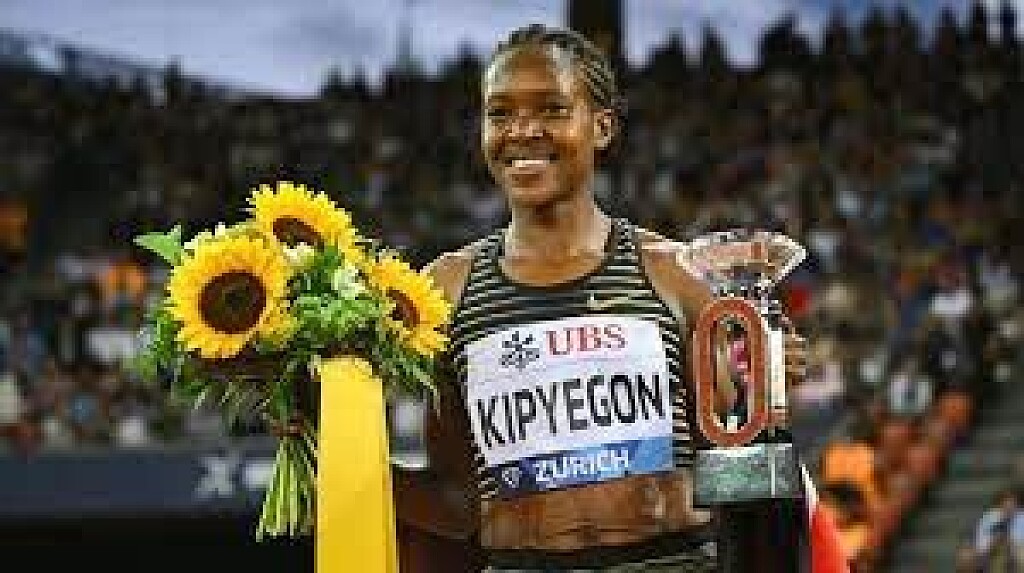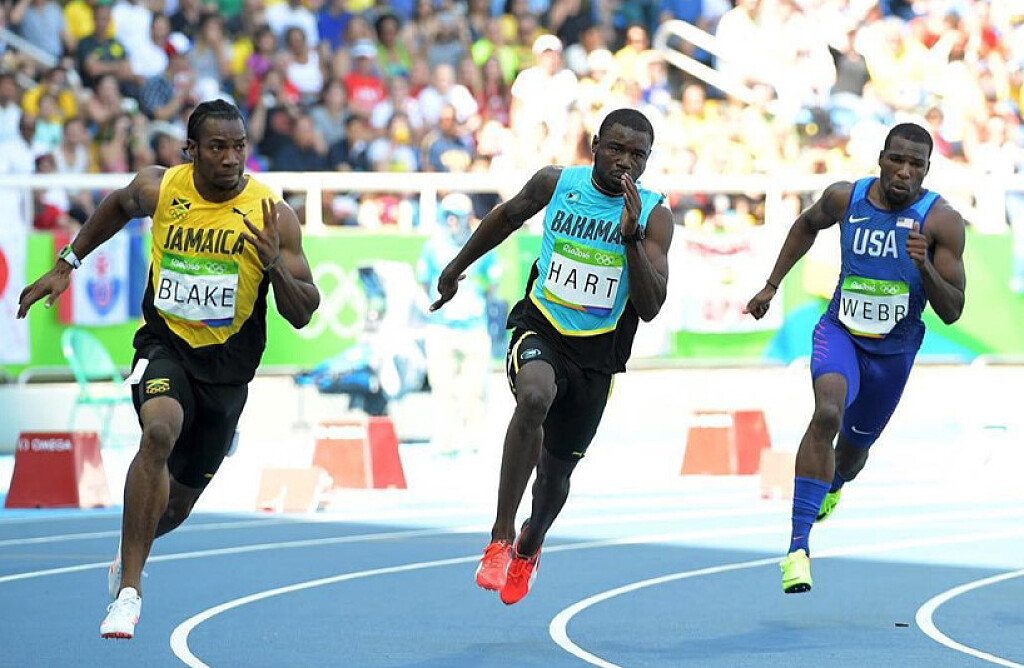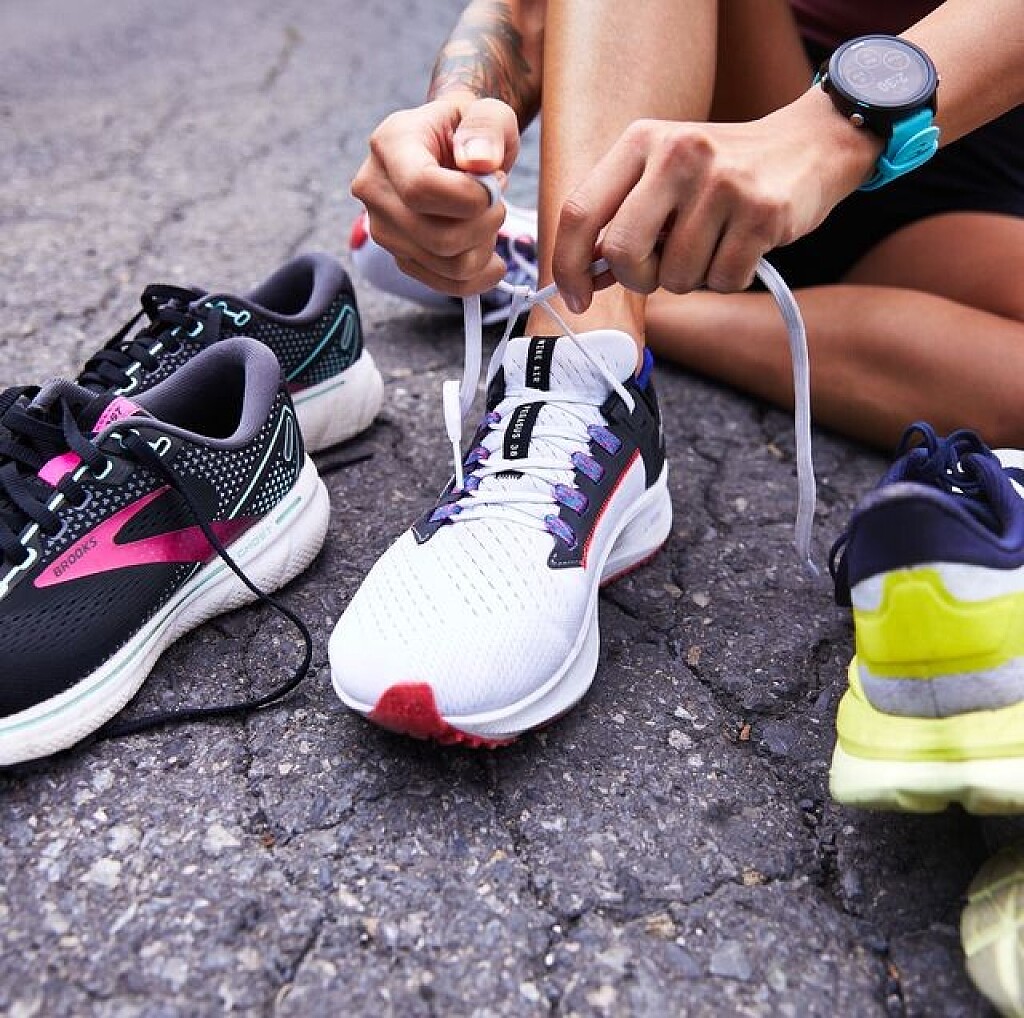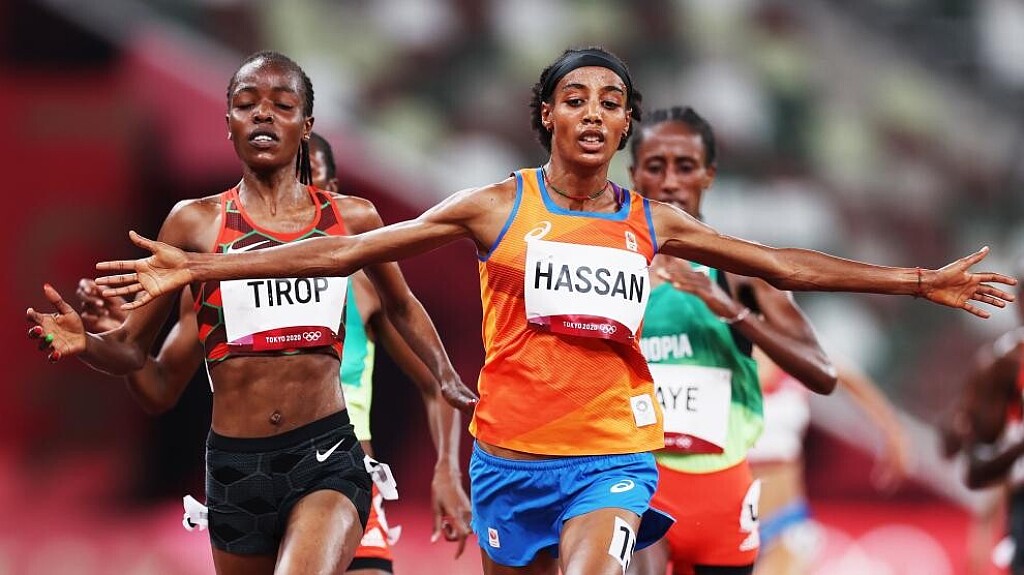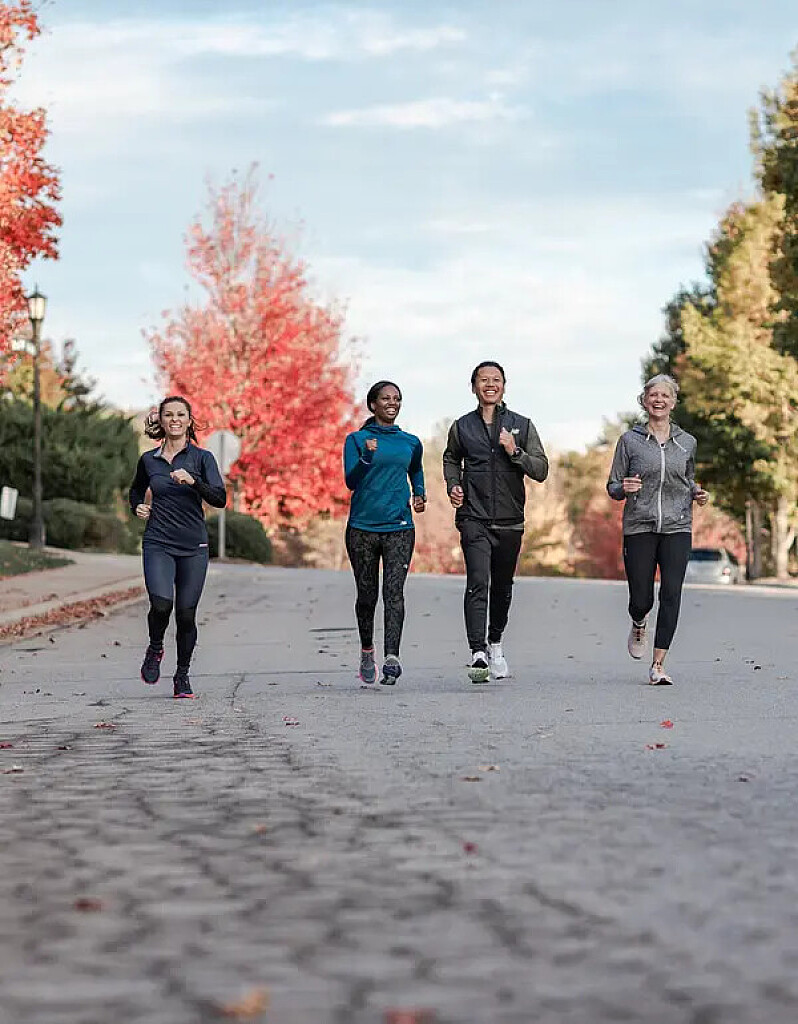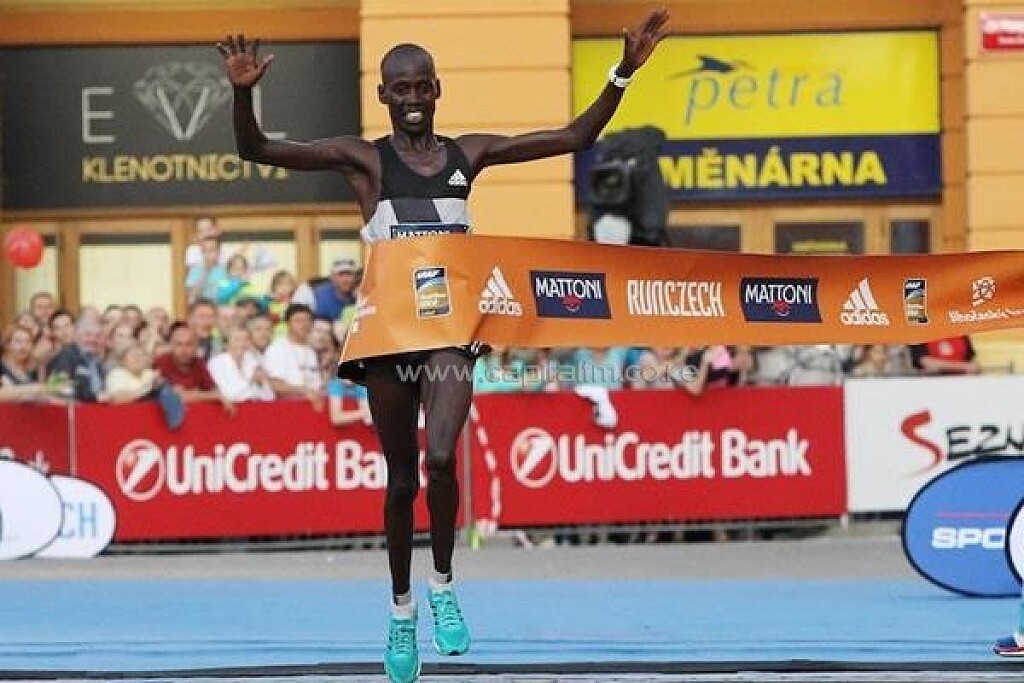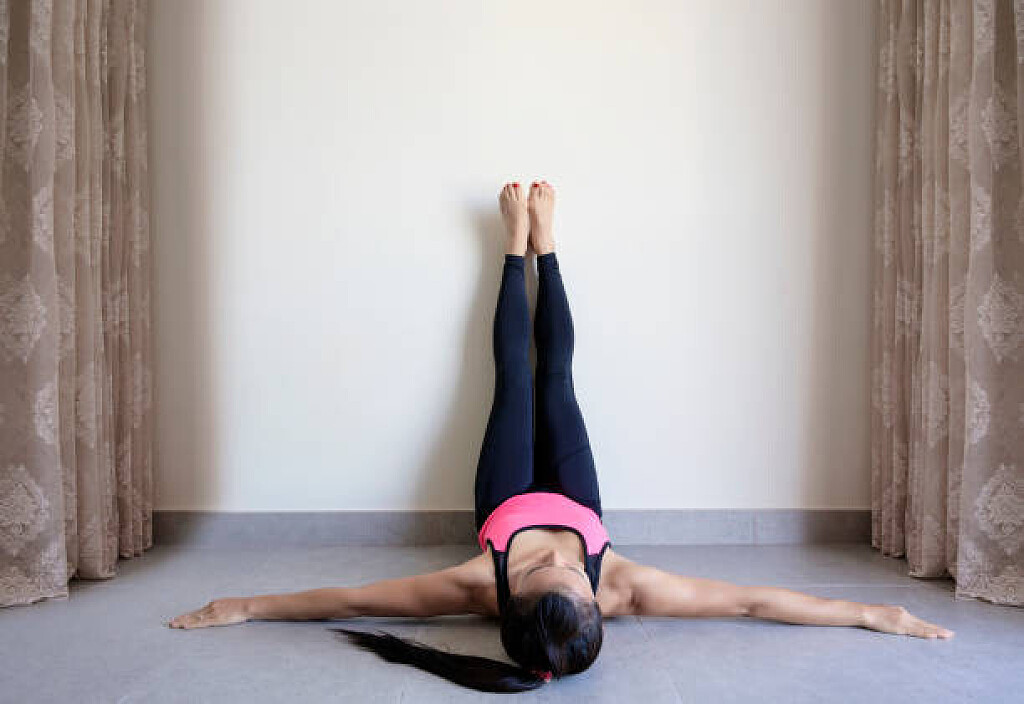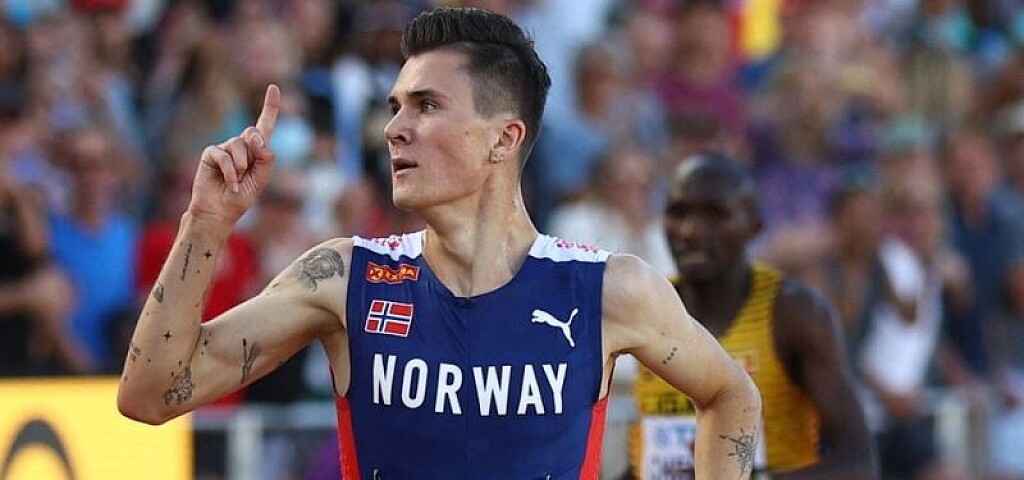Running News Daily
Running News Daily is edited by Bob Anderson in Mountain View, California USA and team in Thika Kenya, La Piedad Mexico, Bend Oregon, Chandler Arizona and Monforte da Beira Portugal. Send your news items to bob@mybestruns.com Advertising opportunities available. Over one million readers and growing. Train the Kenyan Way at KATA Running Retreat Kenya. (Kenyan Athletics Training Academy) in Thika Kenya. Opening in june 2024 KATA Running retreat Portugal. Learn more about Bob Anderson, MBR publisher and KATA director/owner, take a look at A Long Run the movie covering Bob's 50 race challenge.
Index to Daily Posts · Sign Up For Updates · Run The World Feed
Use this lower body strength workout to improve your stride power
When you’re running, your legs and core drive most of your body’s momentum. Strength training can improve your hip mobility and lower body strength, and will make your running more efficient and your stride more powerful.
This workout is designed to improve agility and balance by developing the largest muscles in your hips, glutes and legs. These muscle groups are responsible for stabilizing your entire body during a run, and building them will help you not only run stronger but faster too.

The workout
Try three to five circuits of the exercises below and give yourself 90 seconds to two minutes’ rest between each exercise.

10 reps of single-leg Romanian deadlifts (each side)
The single-leg Romanian deadlift (RDL) involves hinging forward from your hips until your upper body is almost parallel to the floor. As you lean forward, your non-weight bearing leg is extended straight back behind you.
This range of movement develops your hip mobility, hamstring and hip-flexor flexibility.
10 to 15 reps of standing lunge with weights (each side)
Start by standing up straight and step ahead with one foot. Lean forward until your forward knee reaches a 90-degree angle and your rear knee is parallel to the ground. Return to the starting position and repeat with your other leg. Using weights will help build your power and balance (though the exercise can also be done without weights). Start with lighter dumbbells and move up to heavier ones if it feels too easy.
Make sure to keep your back in a neutral position, but don’t flatten the curve of your lower back. You want your knee to stay behind your toes and centred over your foot.
10 to 15 reps of Sumo squats with a medicine ball/weights or weighted item
Stand with your feet wider than shoulder-width apart and your toes pointed slightly out. Hold a dumbbell, medicine ball or a weighted item with your hands in front of your hips.
Push your hips back and squat down, keeping your chest up and knees out. Bring the weight you are bearing down to the floor in between your legs. Then stand back up to the starting position and repeat.
(09/17/2022) ⚡AMPby Marley Dickinson
Maybe races should hand out ribbons, not medals
For new runners, a race finisher medal is a significant symbol of personal development; you trained, you raced, and you finished. And that medal is a reminder of your accomplishment. I like the idea of putting a keepsake around your neck for something you’ve achieved. But after a while, as you run more races, you accumulate so many finisher’s medals that they start to seem like meaningless clutter.
When I began racing 20 years ago, I remember receiving race ribbons for finishing my small local 5K and also at elementary school track and field meets.


Ribbons are lightweight and easy to store. But there’s also so much more that you can do with them. You could create a scrapbook of all your race ribbons. You could sew them into a blanket. Or simply pin them to a corkboard.
I understand runners wanting to keep or frame their finisher’s medal from their first race, first marathon or the Boston Marathon. But most of the time, after asking yourself a year later, “Do I really need this thing?” finisher medals end up being thrown out or donated to charity. Granted, you could always buy one of those garish finisher medal racks to display them to your admirers.
According to PinProPlus, a U.S. supplier of custom promotional products and finisher medals, the cost of one finisher medal depends on the quantity ordered. Prices can range from one dollar to four dollars, depending on the detailing and the size of the order.
Ribbons are a fraction of the cost. To buy 500 custom medals, you’re looking at spending around $400 to $800; according to the website Ribbons Galore, the same number of ribbons would be $150 to $200.
Ribbons are inexpensive and practical, and smaller races need to stop handing out finisher medals that people don’t know what to do with.
(09/17/2022) ⚡AMPby Running Magazine
Steve Prefontaine's Nike Oregon Waffle shoes sell for USD$163,800
A pair of Nike Oregon Waffle shoes worn by distance runner Steve Prefontaine has been sold for USD $163,800 on the auction site, Sothebys.com.This pair of Oregon Waffle sneakers in a men’s size 9.5, including the original laces and blue insoles, was worn and owned by Prefontaine. The sneaker is finished in a nylon upper in the University of Oregon’s signature yellow and green colourway. Prefontaine is widely considered the greatest U.S. runner of all time.
The waffle pattern was developed by Oregon track and field coach and Nike co-founder Bill Bowerman.

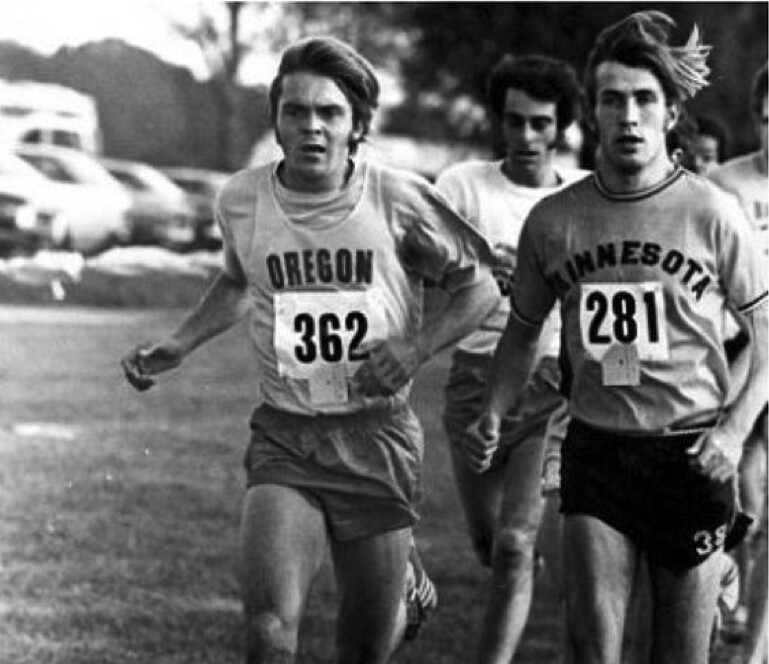
These are the first pair of Pre’s shoes to be publicly sold, which is notable considering the lasting impact he had on Nike, the most iconic sneaker company in the world: Nike.
Prefontaine was the first runner signed by Nike and jump-started the brand as a running shoe company.The auction for the shoe opened on Sept. 6, and the bidding began at $100,000.
From 1969 through the mid-1970s, Pre dominated the sport, setting eight NCAA records during his time at the University of Oregon and competing in the 5,000m at the 1972 Olympics in Munich. In 1975, Prefontaine died in a car accident in Eugene, Ore.
The winner of the auction will now get to hold on to a unique piece of running history. Each year, Prefontaine’s career and life are celebrated at the Prefontaine Classic, a world-class Diamond League track event held at Hayward Field in Eugene, in his honour.
(09/17/2022) ⚡AMPby Running Magazine
An Olympian, a burrito, a failed drug test: Former ASU runner Shelby Houlihan looks to rebound after doping ban
On a cloudy, characteristically cool December night in Beaverton, Oregon, Shelby Houlihan, the American record holder in the 1,500 and 5,000 meters, accompanied Courtney Frerichs, the Olympic silver medalist in the steeplechase, and Frerichs’ sister, Lindsey, to an authentic Mexican food truck near her home.
The three ordered carne asada burritos and returned to Houlihan’s house to eat and watch “The Bachelorette.”

The next morning, on Dec. 15, 2020, the former Arizona State standout was given a random drug test. Weeks later, in mid-January, Houlihan was notified in an email from the Athletics Integrity Unit (AIU) that her urine sample revealed the presence of 19-norandrosterone (19-NA), a metabolite produced by the substance nandrolone – an anabolic steroid prohibited by the World Anti-Doping Agency (WADA).
She was issued a provisional suspension, which set off a cascade of events that led to a four-year ban, knocked her out of the U.S. Olympic Trials leading up to the Tokyo Olympics and will bar her from competing until January 2025 when she will be almost 32.
It is, Houlihan said, “an athlete’s worst nightmare.”
Houlihan, 29, has lost the financial support of Nike. She also saw former teammate Gabriela DeBues-Stafford leave the club rather than risk sanctions because of the Bowerman Track Club continued relationship with Houlihan.
Houlihan said her initial response to the positive test was “shock and disbelief.” She wondered, “How am I going to explain (the presence of a banned substance) when I don’t even know where it came from myself?”
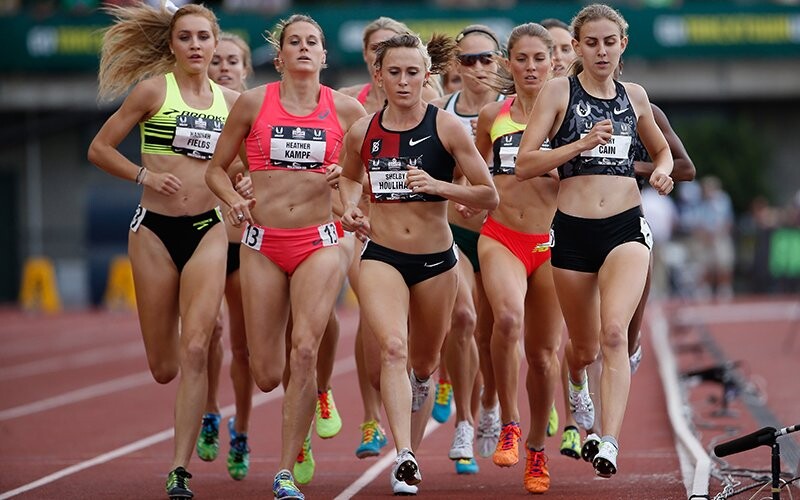
Houlihan was at a high-altitude training camp in Flagstaff when she received the email.
“I opened up my phone to an email that was urgent, confidential and … it was this lab report of scientific words that I could not read,” Houlihan told Cronkite News.
The Sioux City, Iowa, native said she read the email over about 10 times and had to Google which substance triggered the positive test, because she had never heard of nandrolone.
Then she called Jerry Schumacher, her coach at BTC, the professional Nike club that Houlihan had trained with since graduating from ASU in 2015.
“I’m just sobbing and trying to tell him what’s going on, but crying too hard,” Houlihan said.
The long road
Today, Houlihan lives alone in Portland and said she has relied on her former BTC teammates, her boyfriend and her family for support. She does odd jobs, including food delivery, and continues to train with the hope of returning to competition at an elite level.
It is not a situation she envisioned growing up in Sioux City, Iowa, surrounded by runners, including her mother, Connie, and her uncle, Bob Prince, who competed in college.
After winning several state titles at Sioux City East High School, Houlihan continued her success at Arizona State, where she won the NCAA 1,500 meters in 2014 and finished as a 12-time All-American, the second-most in program history.
She holds five school records: the outdoor 800 and 1,500 meters, and the indoor 800, mile and 3,000.
That success set the stage for 2016 Summer Olympics, where she finished 11th in the 5,000 meters and was the highest-placing U.S. runner in the race.
She also finished fourth in the 1,500 meters and set the American record at the 2019 World Outdoor Championships.
More Olympic success felt inevitable.
Shock and disbelief
Elise Cranny, a close friend and former Bowerman teammate of Houlihan’s, remembers that news of the positive test “didn’t really sink in” at first.
“I came back to the house, and I was like, ‘Man, something is very off … something is not right,’” said Cranny, who was living with Houlihan during the camp. “I think the initial reaction from everyone was disbelief, and like, ‘Oh, this is something that’s going to get figured out’ because it’s seriously wrong.”
Schumacher and Houlihan called attorney Paul Greene to “just try to figure out a game plan” and investigate further what could have happened.
The first step was a pregnancy test because nandrolone can be found in pregnant women. After she determined she wasn’t pregnant, Houlihan compiled a log of everything she ate the week before the test. She scoured text messages, bank statements, food receipts and iPhone locations to determine everything she had consumed.
“I was able to piece it together pretty well,” Houlihan said. “And then, ultimately, we just felt like the food truck the night before had to be the most likely source.”
Houlihan wouldn’t name the establishment that served her the burrito because she doesn’t “want to mess with any lawsuit.” However, she isn’t blaming the food truck.
“I don’t think they did anything wrong,” Houlihan said. “I think it just kind of happened.”
While Houlihan and her BTC teammates frequently ate at that food truck, she recalls that she received her order more quickly than usual, and the foil-wrapped burrito was unlabeled.
Houlihan believes she may have been mistakenly given a burrito containing offal (pig organ meat), which can contain nandrolone.
She remembers the meat in the burrito being finely chopped and that grease pooled in the foil. She said it seemed more rich than the burritos she had eaten there before, so much so that she was unable to finish it despite being very hungry after eating little else that day.
“We knew (nandrolone) can be found in pig offal, and we knew that I ate at a food truck that served pig offal 10 hours before (the test),” she said. “And we knew that when you ingest it, it can be at its highest levels 10 hours after ingestion, and that’s the exact kind of time frame that I had eaten that.
“And so as unlikely as all of those things were, it just seemed like the only thing that we could say, ‘All right, this makes some sense,’ and that’s really the only thing that we had to go on.”
Houlihan was the only one among the three who ate at the food truck who was tested.
A search for answers
She provided a hair sample that was examined by a toxicologist and it showed no trace of nandrolone. She also passed a polygraph examination that concluded she was not lying when asked if, at any time, she knowingly or intentionally ingested nandrolone.
Houlihan’s urine tests taken Nov. 22, 2020, Jan. 23, 2021, and Feb. 4, 2021– before and after the positive test – all were negative. She also had her vitamins and supplements analyzed by a lab.
The previous urine tests and the lab report convinced Houlihan that it’s unlikely the positive result was triggered by a supplement or vitamin she was taking. She is still being randomly tested and all of her ensuing tests have come back clean.
She believes that given “the information that we have right now, (the burrito) is the only thing that kind of makes any type of logical sense.”
Houlihan hired a private investigator to trace its sources of meat, but the effort was unsuccessful.
The private investigator found that the food truck owner purchased 30 pounds of pork stomach in a frozen batch from Iowa Beef Processors in September of 2020. However, the owner had no box or label from the meat used in December that could be traced to its processing plant.
And the investigator couldn’t determine whether the owner used pork from a castrated or uncastrated boar. Houlihan’s attorney argued it must have been uncastrated boar meat that triggered her positive test.
When the AIU officially charged Houlihan four months later, the U.S. Olympic Trials, scheduled for June 18-27, were fast approaching. Houlihan decided to go straight to the Swiss-based Court of Arbitration for Sport (CAS) to avoid missing the trials.
The CAS rejected Houlihan’s explanation of what happened and banned her from the sport for four years on June 11, 2021.
Houlihan’s ban lasts until Jan. 13, 2025. She missed last summer’s Tokyo Olympics, the 2022 World Athletics Championships in Oregon, and she’ll miss next year’s World Athletics Championships in Budapest and the 2024 Paris Olympics.
The CAS’s three-member panel found that Houlihan’s “explanation that the 19-NA in her sample resulted from her consumption of the meat of an uncastrated boar simply cannot be accepted. The explanation presupposes a cascade of factual and scientific improbabilities, which means that its composite probability is (very) close to zero.”
Lacking evidence
The panel said that Houlihan failed to prove that the burrito she ate contained boar offal.
“First, the athlete would have had to have been served pork at the food truck despite ordering beef,” the court said. “Second, the pork consumed would not have been ‘normal’ pork product ordered by the food truck, but uncastrated boar. Third, uncastrated boar enters the food chain through completely different channels than pork.”
The panel said that the polygraph result and Houlihan’s hair sample were not “sufficient for the Athlete to rebut the presumption that the ADRV (anti-doping rule violation) was intentional.”
The court also said the concentration of nandrolone in Houlihan’s urine was “2-3 times higher than the highest values reported in the scientific literature after the ingestion of much more significant quantities of meat of mature (uncastrated) boar.”
On June 14, 2021, Houlihan publicly announced she tested positive for nandrolone and would not be competing at the upcoming Olympic Trials. Because Houlihan hadn’t been racing, many thought she was battling injuries instead of serving a provisional suspension.
“And at the end of the day, the panel didn’t think it was probable enough, which is unfortunate,” Houlihan said. “But yeah, I mean, that’s the only thing that we really have as an explanation. I hope at some point, maybe some more information pops up, and maybe it’s something else entirely. I don’t know. But it would be great to have an answer at some point.”
In May, Houlihan appealed the suspension to the Swiss Federal Tribunal.
She lost. It was her last opportunity.
The hardest part to watch, Crany said, “is her getting renewed hope through the appeal process or through different things, and then seeing her kind of have that life back in her eyes again, just for it to come crashing down.”
At one point, Houlihan was offered a reduced sentence – a three-year ban instead of four years – if she admitted guilt.
She refused.
“I never even considered that to be an option, because I knew I didn’t take (nandrolone) intentionally,” Houlihan said. “And I wasn’t going to admit to something that I didn’t do. At least I fought for myself and tried to do the right thing. But taking accountability for something that I didn’t do, it’s definitely not on the table for me.”
Houlihan thinks the system is flawed because the doping agency never had to prove she took a banned substance.
“There was obviously something in my system and I understand that I have a responsibility for what’s in my body,” Houlihan said. “But I think knowing that I never intentionally put it there and (I’m) still having to serve a four-year ban is definitely a flaw in the system. I don’t feel like they did their due diligence in trying to figure out what the truth was. It was just at the end of the day I couldn’t, beyond a reasonable doubt, prove where it came from.”
Houlihan said she believes the burden of proof should be shifted and “split 50-50 between the doping agency and the athlete.” While she believes that she should have to prove what triggered the positive test, she also believes the doping agency should have to prove that she intentionally cheated.
“Just even the playing field a little bit,” Houlihan said. “If you’ve ingested something, it’s almost impossible to try to figure out where that is. Because you’re getting notified a month or two later, I don’t have the source anymore. So it’s just a really impossible task to try to figure out. And I think it’s pretty flawed that if you can’t figure it out, it’s just an automatic four-year ban, and you’re treated like a doper.”
A new normal
Houlihan’s life today includes strong family and friend support.
Cranny said she had a lot of conversations with BTC teammates to make sure Houlihan felt supported.
“What you initially think of is her mental health and someone’s life being completely ripped out from under them and not being able to do what you love to do and what she feels like she’s been born and made to do,” Cranny said. “In the beginning, you worry about her being by herself, and making sure that she has people around her and she feels supported.”
Shelby’s mother, Connie Houlihan, who lives in Phoenix, said she is worried about the mental toll on her daughter.
“You’re afraid of suicide,” Connie Houlihan said. “You know, everything’s a possibility … with depression and with something that critical that they took away from her. You don’t know. Of course, you’re scared to death.”
Connie said a couple of Shelby’s sisters went to be with Shelby right away because they didn’t want her alone. Shelby wouldn’t let her parents come visit, however, because, Connie said, “she was so overcome.”
“I think, if we would have flown there right away, she would have … this is the way she explained it to me, ‘That it would have made it all too real.’
“She was really struggling dealing with it,” Connie said. “She was crying all the time. But I think that was the hardest part for us that we couldn’t just jump on a plane and go and be with her because we respected her decision.”
Chloe Houlihan, one of Shelby’s five sisters, said her sister remained “very resilient through everything.” She said she has tried to be someone Shelby “can talk to when she’s kind of struggling.”
Shelby no longer trains with her BTC teammates, something which Chloe said has been difficult and “a little bit isolating” for her sister.
Until May, Houlihan was paying Schumacher to coach her as an independent athlete, but she confirmed she’s now training entirely by herself – using six years of past training logs as a reference.
“We just felt it was best to maybe cut ties for a little bit,” Houlihan said. “I think there was just a lot of publicity going on around me and him still working together. There was just a lot of scrutiny, I think.”
Some of that publicity and scrutiny was fueled by DeBues-Stafford’s decision to leave BTC because of Houlihan.
A two-time Canadian Olympian who placed fifth in the 1,500 at the Tokyo Olympics, DeBues-Stafford announced in April she left BTC due to Houlihan’s continued ban involvement with BTC at the time.
“Fundamentally, I left the Bowerman Track Club because, despite my best efforts, I was unable to verify that the club was not in violation of World Athletics anti-doping regulations,” DeBues-Stafford said in an interview conducted via email.
DeBues-Stafford was concerned that Houlihan was working out “under the guidance of” the three BTC coaches (Schumacher, Shalane Flanagan and Pascal Dobert) at the same location and times that other BTC athletes were working out while under the supervision of the same coaches.
“While we never did a rep together, there was still what felt to me like an unnecessarily risky proximity between both men’s and women’s teams and an athlete serving a ban,” DeBues-Stafford said.
According to DeBues-Stafford, Houlihan would also use the private gym – built at Schumacher’s residence for BTC athletes to use – at the same time BTC athletes were there under staff supervision.
“Shelby would drive to the Nike campus up to four times a week at the team’s regular time and the starting point for our regular daily runs together so she could run with us,” DeBues-Stafford said. “If she arrived before us, she would wait for BTC athletes at the meeting spot to see if any BTC athletes arrived so she could run with us. These sometimes included long runs. She also ran with the team on a regular basis at altitude camp in Flagstaff.”
Houlihan said she and her attorney inquired about the rules of her ban and were told that she couldn’t go to any practices or work out with anyone on the team, but if she happened to bump into them and they were running at the same place, then she could run with them.
“My attempts to discuss my concerns with team staff were rebuffed, as were the earlier and more sustained efforts of other teammates,” DeBues-Stafford said.
BTC did not receive independent legal advice on the issue, DeBues-Stafford said. She also said Houlihan shared accommodations with a full-time member of BTC staff during the Flagstaff camp, and those accommodations were used for organized BTC athlete support activities.
“When I asked if Shelby’s lawyer had explicitly asked the AIU about her using the same gym as BTC and about how to handle the altitude trip, I did not get a clear response,” DeBues-Stafford said.
DeBues-Stafford said she “independently sought answers,” and reached out to an anti-doping organization to verify that BTC’s collective behavior was within the rules and that there was no liability on anyone other than Houlihan.
According to DeBues-Stafford, “the anti-doping organization could not guarantee that the actions of BTC and Shelby did not constitute a violation, and could not guarantee that other athletes and support staff couldn’t face repercussions either.”
She said the anti-doping agency cited two rules in the World Anti-Doping code and advised her to leave BTC and submit an official anonymous tip to the AIU.
A trying time
While Schumacher and some of Houlihan’s other teammates knew about her positive test in January of 2021, DeBues-Stafford did not learn about Houlihan’s positive test until a couple of days before the team publicly announced the ban about six months later.
“Learning this news in mid-June almost derailed my Olympics,” DeBues-Stafford wrote in an Instagram post in April. “It was a small miracle that I showed up in Tokyo in shape to run sub-four (minutes) twice in 48 hours and place fifth.”
Houlihan said she was “surprised” and felt “blindsided and hurt and confused” by DeBues-Stafford’s social media posts because DeBues-Stafford had not told her about her concerns.
“I never knew that that was a problem for her,” Houlihan said. “And I’m not sure why she didn’t reach out to me. I reached out to her after I read her posts.”
Houlihan said she apologized to DeBues-Stafford for being affected by her situation.
“I think she just felt like she didn’t want to add to what I was going through by bringing it to me, which I don’t agree with, personally,” Houlihan said. “I felt like I would have rather had that conversation with her and I would have been more than glad to try to help that situation for her in any way, instead of what ended up happening. I think that was a lot worse – what ended up happening – than her just coming and talking to me about it.”
DeBues-Stafford has since moved to Victoria, B.C. and is now coached by Trent and Hilary Stellingwerff.
“When I told Jerry (Schumacher) I was leaving BTC due to the lack of separation between Shelby and the group, he asked if I really wanted to leave, given he was thinking of possibly no longer coaching Shelby if she lost her appeal at the Swiss Federal Tribunal,” Debues-Stafford said.
Debues-Stafford said Houlihan was still driving to the Nike campus and running with BTC when Debues-Stafford left Portland on March 31.
“Growing fear over the team potentially breaking rules, coupled with frustration at the lack of action by the team left me in an awful and unsustainable headspace,” DeBues-Stafford said. “I left altitude camp early at the end of February to get some breathing space and made my decision to leave the team.”
A powerful influence
Cranny said she misses running with Houlihan and credits her for pushing her to succeed.
“I think of her all the time when I’m racing now,” Cranny said. “She’s a huge reason why I feel like I am where I am right now in my own running. She just really opened my eyes to the importance of not limiting yourself and putting yourself in it.”
Although BTC could look a lot different, Houlihan would still like to eventually come back to the group once her ban is up.
“I definitely would like to rejoin Bowerman,” Houlihan said. “That’s like my family, basically. I’ve been a part of that group since I went pro in 2015 and I know those athletes so well. And I know that that training environment is great for me.”
Cranny also wants Houlihan to rejoin BTC and said she can’t picture her former teammate anywhere else
“It feels like this is her family,” Cranny said. “I feel like everyone here is really supportive of her, really close friends with her. So I hope (she rejoins BTC). That’s something that we’ve definitely talked about as a team is wanting to work out with her again once the ban is up.”
When asked if she thinks she can still compete at the elite level once the ban is up, Houlihan said, “I guess that’s one thing that we’re just gonna have to find out.”
Houlihan is no longer a member of BTC nor being paid by Nike. She spent $250,000 in legal fees fighting her ban without any financial support from the Beaverton-based shoe and apparel giant.
“They said that they support me, and they believe in me, but as far as financially, I haven’t really received any support from them in that way,” Houlihan said.
Houlihan lost her six-figure professional contract with Nike and hasn’t had a paycheck in over a year. Her Nike deal also gave her the opportunity to earn performance-based bonuses on top of her base compensation, income that is also gone.
Houlihan’s mom called the entire process “an injustice” and said it wouldn’t make sense for her daughter to jeopardize her Nike contract by doping.
“Why would somebody with a contract that she had and the money that she was making, why would she cheat?” Connie said. “She had a contract (with Nike) through the (Tokyo and Paris) Olympics like, why would you cheat?”
Houlihan said Nike hasn’t offered her a job, either.
“I’ve been doing some food delivery things like DoorDash and stuff, just to try to make a little money on the side, but yeah, just trying to get by.”
Houlihan continues to train but admits it is difficult.“It’s been really challenging, to be honest,” Houlihan said.
As she trains alone, without her former coaches and teammates for support and motivation, Houlihan said she sometimes stops halfway through a workout or doesn’t always finish it at all. She finds it more difficult to hit her targeted times.
“I think it’s easy to do that when I’m having a great time and I’m having fun, and I’m finding joy in running,” Houlihan said. “But a lot of the things that make it fun aren’t really there for me right now.”
(09/16/2022) ⚡AMPby David Veenstra (Cronkite News)
World record holder Jacob Kiplimo to run Vedanta Delhi Half Marathon
Ugandan star hopes for “fastest half marathon ever seen on Indian soil”.
Jacob Kiplimo, only 21, is the reigning world half marathon champion and last year ran the phenomenal world record time of 57:31.
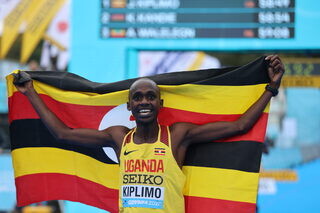
The young Ugandan star has already had an outstanding 2022, winning both the RAK Half Marathon in Ras Al Khaimah (UAE) in February in a world-leading 57:56 and then the Great North Run half marathon last Sunday. During the summer, Kiplimo focused on the track and won a World Athletics Championships 10,000m bronze medal and then a memorable 5000m/10,000m double at the Commonwealth Games last month.
Ethiopia’s Amdework Walelegn improved the Delhi course record to 58:53 in 2020 but Kiplimo believes he can run the fastest half marathon ever seen on Indian soil during his first visit to the country next month. “I have been told that the Vedanta Delhi Half Marathon course is a quick one and the record suggests that you can run fast times there. I am in good shape, and I will focus on preparing specifically for the race over the next few weeks,” said Kiplimo.
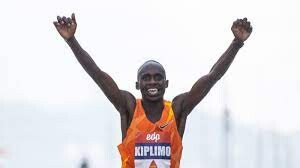
The 17th edition of this race has a new title sponsor, with the race promoters Procam International joining forces with India’s leading natural resources conglomerate, Vedanta Limited. With transformation for a sustainable future at the heart of Vedanta’s business operations, its commitment to giving back to society has been a part of the company’s core ethos. Both Vedanta and the Delhi Half Marathon are striving to be catalysts for change in society so it is a partnership that will be mutually beneficial to their joint aims.
“On behalf of the Vedanta family, I feel honored to welcome the current world half marathon and world record holder Jacob Kiplimo to the Vedanta Delhi Half Marathon 2022. When Jacob became world champion at such a young age, his story become an inspiration for many. I am sure that his participation here will motivate thousands more to take to part and run for causes that deeply touch us all,” said Priya Agarwal Hebbar, Non-Executive Director, Vedanta Limited.
The race has a prize fund of USD 268,000, and the international elite field will have its sights on the first prize of USD 27,000 for both men and women. “We are thrilled to be able to welcome Jacob Kiplimo to India for the very first time and to headline this year’s Vedanta Delhi Half Marathon. It is a reflection of the event’s stature that it annually draws some of the biggest names in distance running,” said Vivek Singh, Joint Managing Director, Procam International.
“As one of the leading half marathons in the world, I’m excited that we are back on the international calendar, bigger and better. It’s our privilege to welcome Vedanta as the title sponsor, as we look to build on our shared objective of strengthening the legacy of this event as a stimulus for empowerment and change,” he added.
(09/15/2022) ⚡AMPVedanta Delhi Half Marathon
The Airtel Delhi Half Marathon is a haven for runners, creating an experience, that our citizens had never envisaged. The streets of Delhi converted to a world-class running track. Clean, sanitized road for 21.09 kms, exhaustive medical support system on the route, timing chip for runners, qualified personnel to ensure smooth conduct of the event across departments. The race...
more...High Class Elite Field marks Frankfurt’s Return
The Mainova Frankfurt Marathon will take place on October 30 for the first time since 2019. Among the men’s elite are three contenders with personal bests of under 2:06 which points to a high-quality race in prospect. The Ethiopian Betesfa Getahun is the fastest runner in the field at present with a best of 2:05:28. Also on the start line will be the German runner Filimon Abraham from theTelis Finanz Regensburg club. The organisers of the race, which will end in its traditional, spectacular fashion in Frankfurt’s Festhalle, expect to have around 12,000 marathon runners for the 39th edition of the event. The race is an Elite Label Road Race, a distinction awarded by World Athletics, the world governing body of athletics. Entries are still available at www.frankfurt-marathon.com
“We are delighted that the Mainova Frankfurt Marathon is back after a two-year interruption because of the Corona Pandemic – with strong elite fields, a big number of mass runners and all the emotions which we have experienced in the past,” says the Race Director Jo Schindler. “We’ll experience the Mainova Frankfurt Marathon just as it’s always been: a big start and thrilling run-in to the finish in the Festhalle in front of thousands of spectators. Our aim is to create a unique running experience for mass and elite competitors alike and to see many beaming faces at the end of race day.”
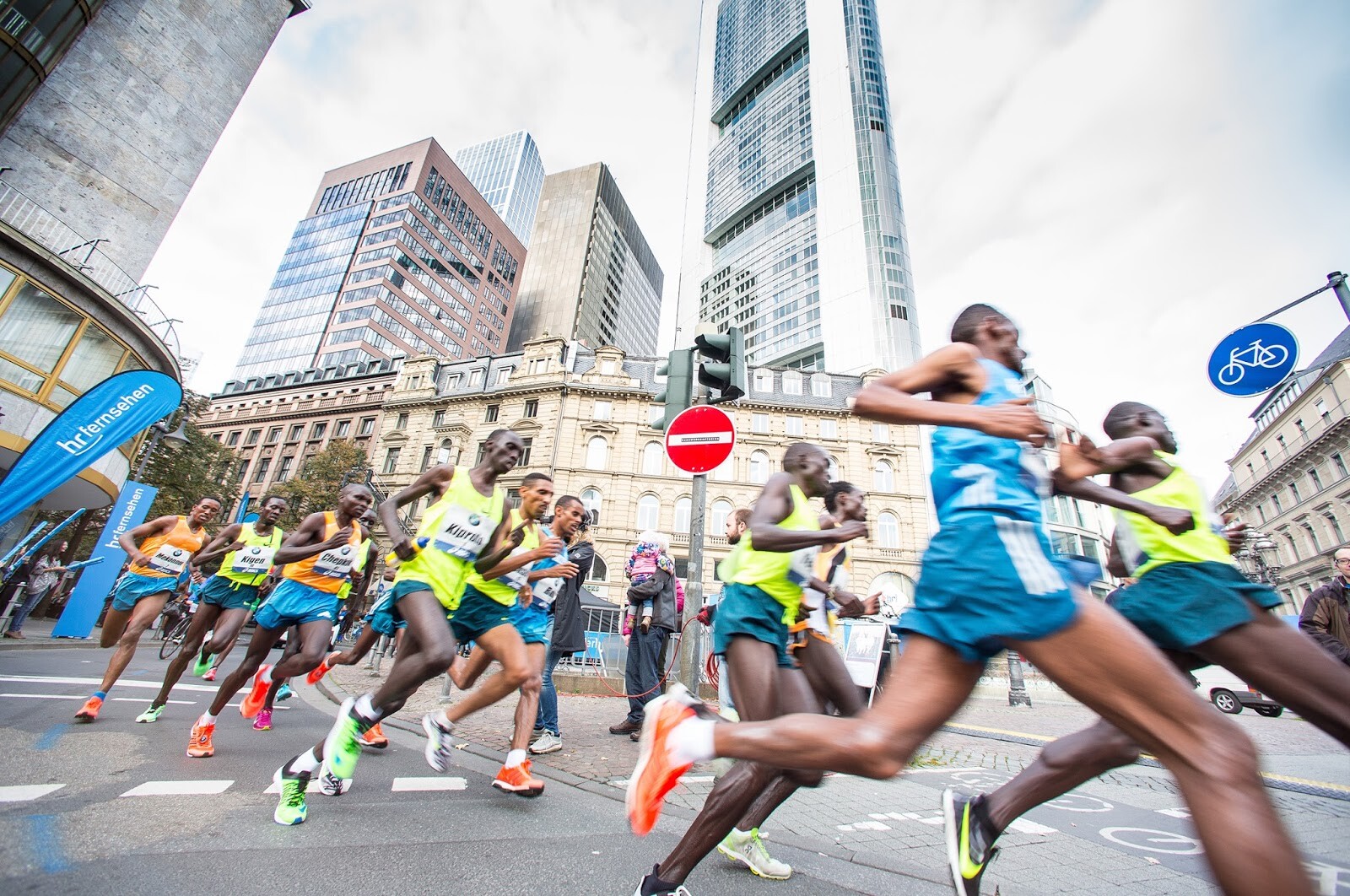
The organisers have now announced part of the men’s elite field while recruiting for the women’s race continues and the elite women’s field will be announced at a later date. An up-and-coming Ethiopian is the fastest man on the start list: Betesfa Getahun is 23 and made his marathon debut in 2019 with an impressive, high-quality performance, running 2:05:28 for fourth place in Amsterdam. The Mainova Frankfurt will be his fourth race at the distance for the runner whose pedigree includes a strong showing in sixth place at the 2018 World Half Marathon Championships in Valencia.
The other runner, who has already gone under 2:06, is also from Ethiopia and is just 21: Gebru Redahgne is a newcomer to running at international level, running outside of his homeland for the first time only last year when he finished second in the Cape Town Marathon in 2:10:17. He made a massive improvement this year in Barcelona where he ran 2:05:58 for another second place finish and only five seconds behind the winner. Gebru Redahgne wants to take full advantage of Frankfurt’s fast course to improve his personal best still further.

A runner from Kenya is making his return to the Mainova Frankfurt Marathon where he has more than once impressed with the quality of his performances. Martin Kosgey twice finished second in the Festhalle, in 2016 and 2018, as well as taking fourth place on two more occasions, 2017 and 2019. Frankfurt was where the 33-year-old set what remains his personal best of 2:06:41. The Mainova Frankfurt Marathon on October 30 will be his first race in a year when he produced a solid performance to finish runner-up in Eindhoven in 2:06:56.
Since almost every German runner at top level were involved in either the World or European Championships this summer, almost none of them will be competing in Frankfurt. An exception is Filimon Abraham of the Telis Finanz Regensburg club who has the potential to join the leading ranks of Germany’s marathoners. After failing to finish on his marathon debut in Hamburg in April, the 29-year-old, who finished 19th in the 10,000m at the European Championships in Munich in August, is renewing his marathon quest on Frankfurt’s fast course.
(09/15/2022) ⚡AMPMainova Frankfurt Marathon
Frankfurt is an unexpectedly traditional and charming city, with half-timbered buildings huddled in its quaint medieval Altstadt (old city), cosy apple wine taverns serving hearty regional food, village-like neighbourhoods filled with outdoor cafes, boutiques and street art, and beautiful parks, gardens and riverside paths. The city's cache of museums is second in Germany only to Berlin’s, and its nightlife...
more...Five reasons why you should run on vacation
When you hear the word ‘vacation,’ running usually isn’t the first thing that comes to mind. But running is the perfect form of exercise when you are travelling because it allows you to sightsee, stay in shape and get a little you-time.
Here are five reasons why you should pack a pair of trainers on your next trip.
1.- The perfect way to explore a new place
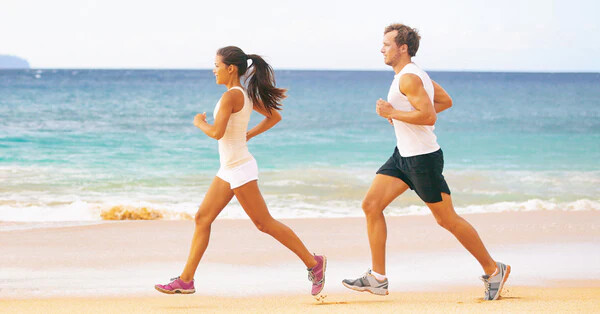
Running in a place you’ve never been lets you see a lot more than what you’d see from a bus or sauntering around (though of course, you’ll do that, too). It’s a great way of learning where to go in a new city.
You can explore a city’s history, beaches, trails and everything in between. If you are visiting a hilly city like San Francisco, Vancouver or Paris, you can get in a hill workout and see the sights at the same time. You may even catch the sunrise if you get up early enough.
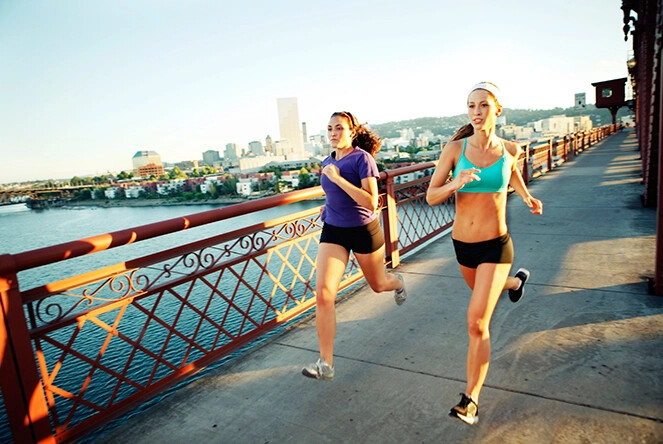
2.- It is an efficient way to get around
The more you use your legs, the less you need alternative means of transportation. One of my favourite things to do is to run to the beach, swim and run back, which is also a great way of staying cool.
3.- Great way to stay in shape
We are not asking you to do interval training, but why not stay in shape while on vacation? Your run does not have to be as intense, but at least you will not go home feeling bad that you completely neglected your training.
4.- Immerse yourself in the local running community
Run the local parkrun, or check out if there are any run clubs on Strava or at the local running store. This is a great way to meet like-minded people and immerse yourself in the culture. You may discover new places to eat or visit from the recommendations of local runners, not to mention making new friends.
A local run group will also help you find the best trails, routes, and runs in the area–allowing you to gain the full vacation experience.
5.- It looks cool on Strava
Whenever someone is in a unique place on my Strava feed, I develop a severe case of FOMO (fear of missing out) and instantly smash the kudos button.
Imagine being a local legend in Greece… or achieving a CR in Australia. Also, do not be afraid to share landscape pictures of beaches, local eats and sunsets for some extra jealousy and kudos on your post.
(09/15/2022) ⚡AMPby Marley Dickinson
Wildfire in California causes thousands to evacuate, impacts Western States course
The Mosquito wildfire, which began west of Lake Tahoe amid extreme heat on Sept. 6, is the largest fire currently burning in California. The blaze has already burned through 58,544 acres in El Dorado and Placer counties.
Western States Endurance Run (WSER), one of the most famous ultra trail races in the world, sits right in Mosquito’s path. Runners begin the annual, much-revered 100-mile race in Auburn, and finish on the track at Placer High School.

On Tuesday afternoon the fire flared up, pushing toward the community of Foresthill and arriving at the edge of Foresthill High School, blazing through structures across the street. Firefighters appear to have kept the fires away from the high school, but it’s not clear how many cars and structures were consumed in the flare-up.
We connected with Craig Thornley, race director of WSER, on Tuesday. “Lives and homes are the highest priority right now. The WSER trail and our race is a lower priority,” Thornley said.

“That said, eventually the fire will be contained and the US Forest Service will be able to go in and assess the damage to the WS trail and the bridges. Currently, the fire has affected the trail as far up as Devil’s Thumb [aid station] through El Dorado Canyon and Michigan Bluff, to the turnoff onto the single track from Chicken Hawk. That’s about 10 miles of trail. It still could burn up towards Last Chance and Dusty Corners, but it is unclear what effect the burn scar will have on fire growth,” added Thornley.
The flames have forced more than 11,200 people to flee as they encroach on homes and buildings, burning 64 structures by Wednesday including at least 25 homes, according to Cal Fire. The fire grew more than 8,000 acres overnight and is spreading through the Sierra Nevada mountains.
“It continues to push steadily to the east in heavily forested areas with extremely dry vegetation,” officials said Wednesday morning. There is some optimism, however, as firefighters have the fire now 20 per cent contained.
(09/15/2022) ⚡AMPby Keeley Milne
1,500m world record holder Genzebe Dibaba to run Amsterdam Marathon
Dibaba, 31, will follow older sisters and fellow Olympic medallists Tirunesh Dibaba and Ejegayehu Dibaba into the marathon.
On Tuesday, the TCS Amsterdam Marathon confirmed on Instagram that the women’s 1,500m world record holder, Genzebe Dibaba, will make her marathon debut on Oct. 16 in Amsterdam.
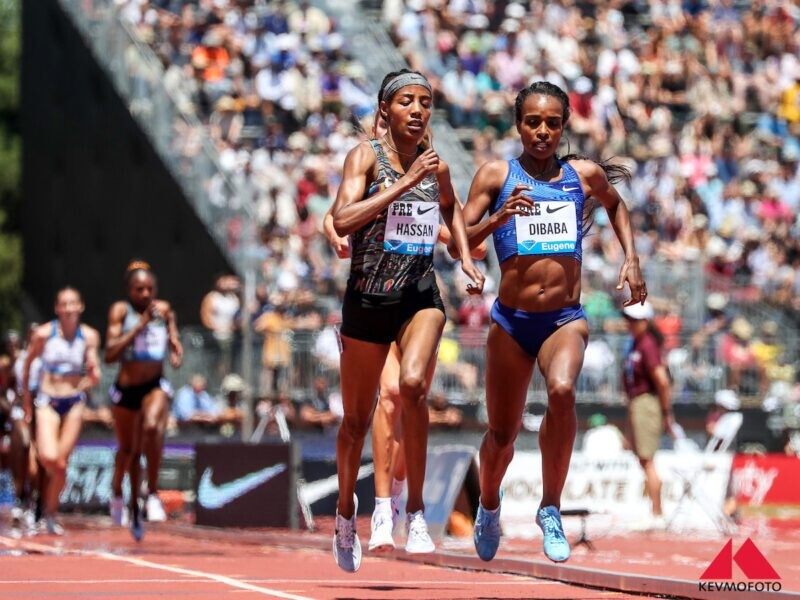
Dibaba, 31, follows older sisters and fellow Olympic medallists Tirunesh Dibaba and Ejegayehu Dibaba into the 42.2-kilometre distance. Her 1,500m personal best of 3:50.07 from the 2015 Monaco Diamond League still stands as the world record, though Faith Kipyegon of Kenya ran the second-fastest 1,500m time in history (3:50.37) on Aug. 10.
Kipyegon beat Dibaba for the 1,500m title at the 2016 Summer Olympics in Rio.

Dibaba has competed fewer than five times since she missed the 2019 World Championships and 2020 Olympics due to a foot injury. She has only raced the half-marathon distance once, at the Valencia Half Marathon in 2020, which at the time was the fastest-ever debut half marathon by a woman (65:18).
Joining Dibaba on the start line is her Ethiopian compatriot and 2016 Olympic 10,000m champion Almaz Ayana, who is also making her marathon debut. Ayana finished third at the Great North Run in Newcastle, U.K., last weekend in 67:10 and has run 29:17.45 over 10,000m.
The fastest debut marathon by a woman was 2:18:56 by Paula Radcliffe at the London Marathon in 2002.
(09/14/2022) ⚡AMPby Marley Dickinson
TCS Amsterdam Marathon
Do you want to enjoy Amsterdam in October and all that the city has to offer you? Want to feel a real athlete and start and finish in the historic Olympic stadium? Or run across the widely discussed passage under the beautiful National Museum? Then come to Amsterdam for the annual TCS Amsterdam Marathon in October! The TCS Amsterdam Marathon...
more...Hellen Obiri believes her winning the Great North Half Marathon is a huge inspiration as she prepares for her full marathon debut in New York
Olympic 5,000m silver medallist Hellen Obiri said cheers from the crowd on the streets of Newcastle and a good course propelled her to clinch the title once again.
As compared to last year’s edition, when the Covid-19 pandemic was still raging — forcing the limitations on crowds — Obiri said this year's edition was well attended and the course favourable.

“Last year, the race was a bit tough due to the pandemic. However, this year’s edition has been amazing owing to the cheerful crowd. The course was also good unlike last year,” Obiri said.
Obiri won the Great North Run in 1:07:05, bettering her 1:07:42 from last year, ahead of Olympic marathon champion Peres Jepchirchir ( 1:07:07 ). Ethiopia’s Almaz Ayana placed third in 1:07:10.
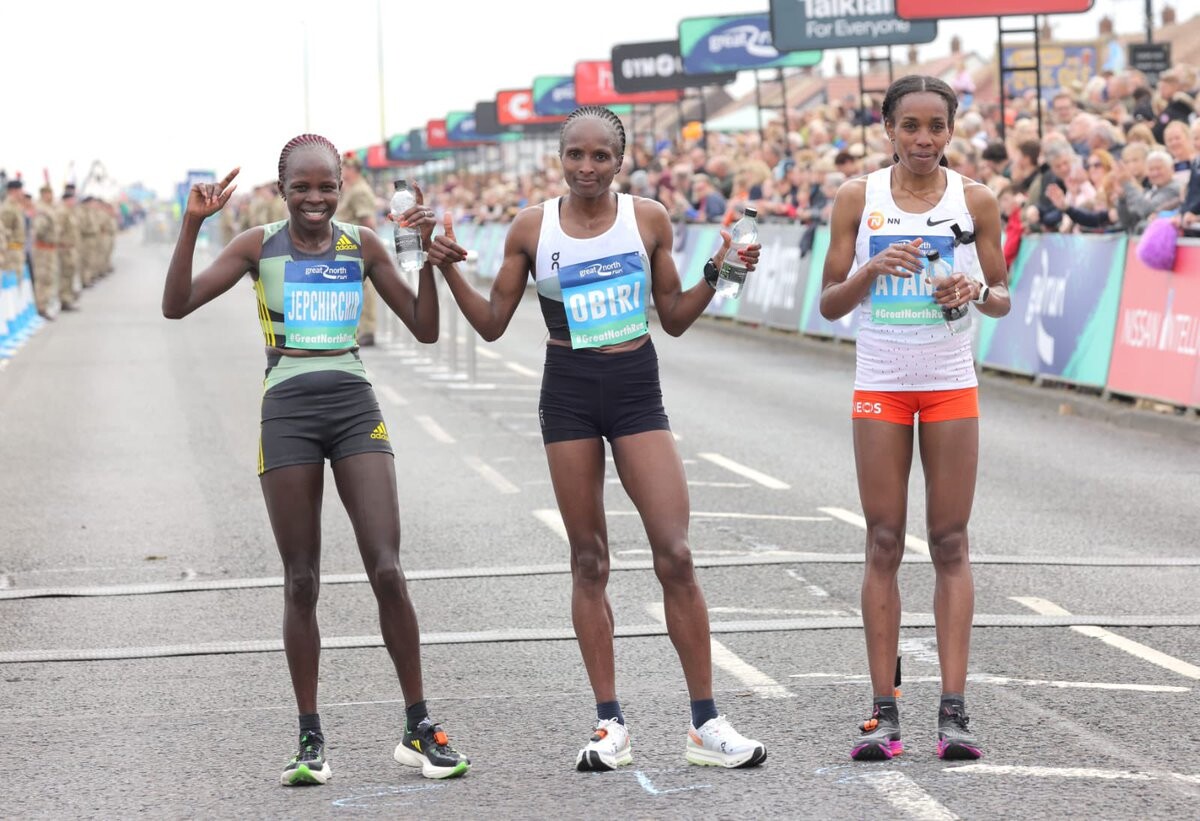
Obiri, the world 10,000m silver medallist added: “It’s a good feeling. I am happy for what I have done.”
She added that the race was not a walk in the park with the presence of Jepchirchir and Ayana, a former Olympic and world 10,000m champion.
“I knew they were there and I knew the race was going to be a tight battle. However, I told myself I am the best and I will do my best. I had a plan to kick in the last 200m and it worked out well,” she said.
“I am so excited about my marathon debut but I'm also aware of the tough competition that awaits me. Right now, I am going to prepare well and I am hoping I’ll be healthy. I just want to run well and cross the finish line,” Obiri concluded.
(09/14/2022) ⚡AMP
by Abigael Wuafula
TCS New York City Marathon
The first New York City Marathon, organized in 1970 by Fred Lebow and Vince Chiappetta, was held entirely in Central Park. Of 127 entrants, only 55 men finished; the sole female entrant dropped out due to illness. Winners were given inexpensive wristwatches and recycled baseball and bowling trophies. The entry fee was $1 and the total event budget...
more...Joseph Njoroge clocks the 4th fastest Double 15k (10k+break+5k) ever this morning in Thika Kenya
Joseph Njoroge (blue jersey) from Ngong Athletics Club was the overall winner of the Second edition of the Double 15k race held in Thika on Wednesday morning.
The 18-year-old Nyandarua-born Njoroge clocked 29:56.17 in 10Km before caping the event with 14:43.93 to emerged top in 44:40.10 in the new race that is gaining ground in Kenya.

Local ace Zakariah Kirika, 21, who trains with the host Kenyan Athletics Training Academy (KATA) in Thika, combined 45:25.31 to finish second splitting 30:28.54 in 10Km and 14:56.77 after the break.

For the women, Newcomer Caren Chepkemoi from the Thika based Training Academy won the lady’s category in 59:50.76. She timed 40:14.97 in 10km and 19:35.79 followed by training mate Susan Njeriwho fished second in combined 1:00.01.68 in the race organized by Kenyan Athletics Training Academy.
62-year-old Charles Ndirangu who trains at KATA smashed the 60-69 world best clocking 55:11 for the two legs. His splits were 37:04 for 10k and 18:07 for 5k.
“The double Race tests athletes’ endurance. They must do 15Km split into 10Km and 5Km. This is separated by 1hr 45min break from the start of the 10Km race and beginning of the 5Km leg. Times are added together for scoring. The leaders after the first leg wears the yellow jersey so everyone knows who is leading going into the second leg," explained Bob Anderson, the creator of Double Racing in 2010 and the chairman of the Double Road Race Federation based in Mountain View California USA.
This was the second Double Race after the first was held in September last year during the official opening of the KATA that now hosts 15 athletes.
The KATA 10Km monthly Time-Trial resumes on October 15th in Thika.
(09/14/2022) ⚡AMP
KATA Time Trial Series
The Kenyan Athletics Training Academy (KATA) in Thika Kenya stages a monthly time trial. Starting Sept 2021 this monthly event is open to anyone who would like to get an official time on a acurant course. Results will be published at My Best Runs so race directors and other interested people can see what kind of shape our participants are...
more...London Marathon follows Boston in adding non-binary category
The London Marathon is the latest of the World Marathon Majors to include a non-binary entry option for its 2023 race, following the lead of the Boston Marathon.
An announcement was made before the ballot opens on October 1 and the change follows a review and consultation period by London Marathon Events, which organises the London Marathon.
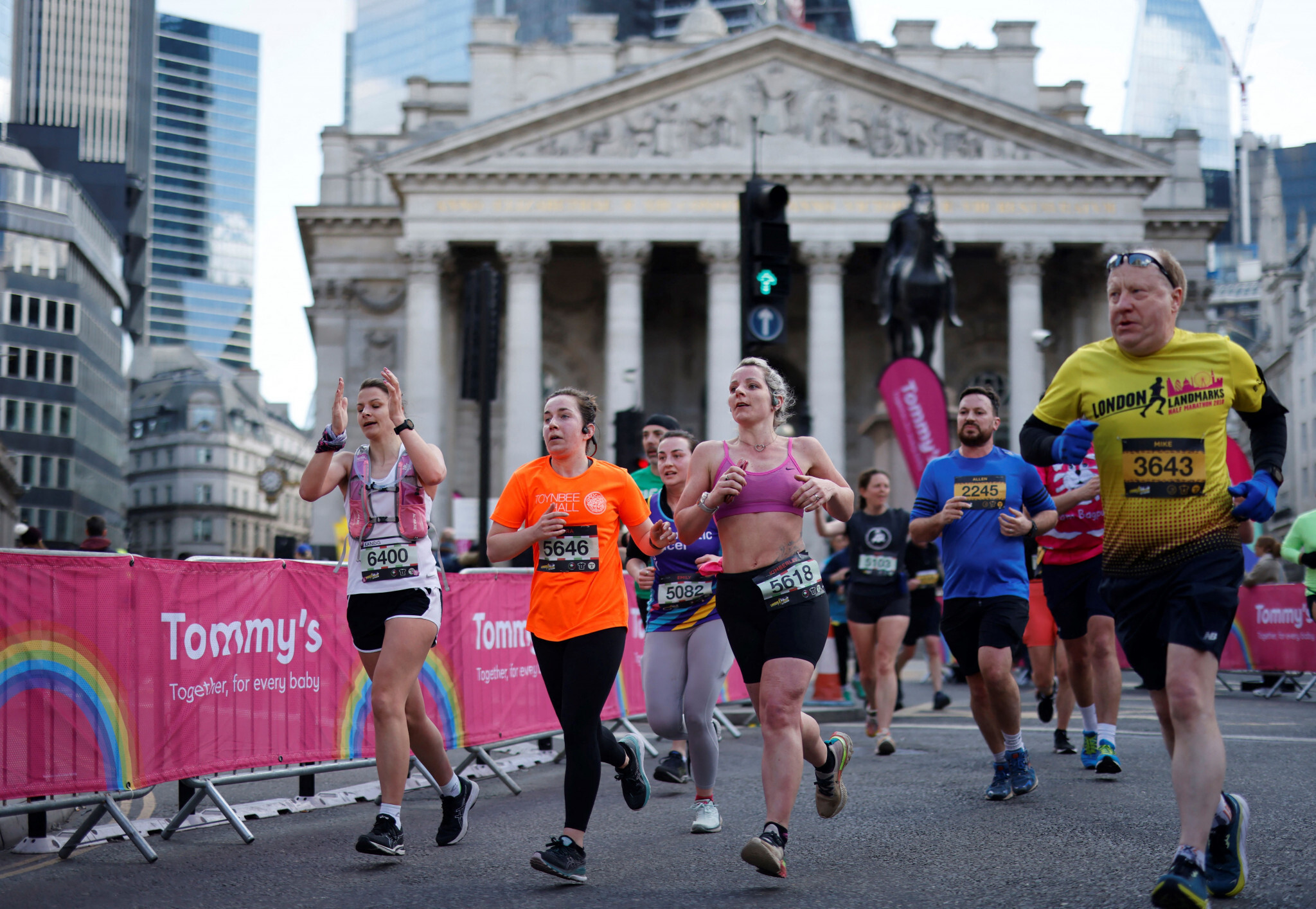
This means participants can register for the mass-participation race as a man, woman or non-binary individual.
Championship, elite and Good For Age races will not have a non-binary option for athletes.
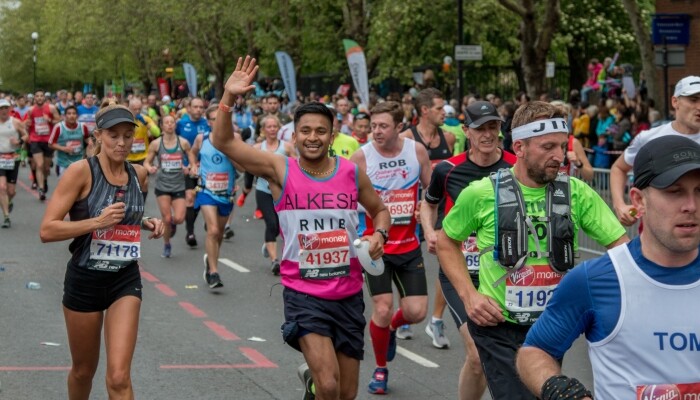
"This is a significant step forward for the London Marathon as we continue our journey to make our event truly inclusive," said event director Hugh Brasher.
"We know there is still much more to be done, but changes such as this demonstrate our commitment to making the London Marathon an event that is for everyone."
This new policy will also be rolled out across all London Marathon Events mass-participation races, including RideLondon and the Standard Chartered Great City Race.
New entry policies were also created in July which allow for assisted participants and more support for pregnant and postpartum runners.
The 2023 London Marathon is scheduled to take place on April 23.
This year's London Marathon is set to take place on October 2, having been moved from its usual position in April to allow more participants due to the threat of COVID-19 restrictions.
UK Athletics adopted non-binary guidelines from Scottish Athletics in 2018, which includes advice on the inclusion of non-binary athletes.
In 2019, Scottish Athletics went a step further by adding a non-binary entry option for athletes at its championship races.
(09/14/2022) ⚡AMPby Michael Houston
TCS London Marathon
The London Marathon was first run on March 29, 1981 and has been held in the spring of every year since 2010. It is sponsored by Virgin Money and was founded by the former Olympic champion and journalist Chris Brasher and Welsh athlete John Disley. It is organized by Hugh Brasher (son of Chris) as Race Director and Nick Bitel...
more...Canadian government requires ArriveCan app for Detroit marathon runners
If you are planning to run the Detroit Free Press Marathon on Oct. 16, you will have to download the ArriveCan app and follow Canada’s COVID protocols, or you will be forced to abandon the race.
Although the marathon starts and finishes in Detroit, all participants cross the Ambassador Bridge into Windsor, Ont., to run a small portion of the race along the riverside and then return to Detroit via a tunnel under the Detroit River.
An email was sent out to all participants of the race on Sept. 8, saying, “We have been notified by the Canadian government that ALL international race participants will be required to use ArriveCan as part of their participation at all Detriot Free Press Marathon events.

“This procedure is mandatory to complete to participate in the Detriot Free Press Marathon and failure to do so could result in being prohibited from entering Canada and a DNF.”
Race participants were also warned of another way they could be denied at the border: Canada’s current COVID isolation period.
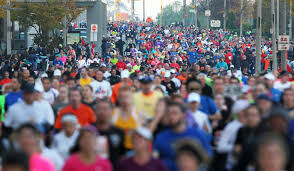
“Canada has a 10-day isolation period for those who test positive for COVID-19, meaning if you test positive for COVID-19 anytime after Oct. 5, you are not allowed to cross into Canada on race day,” the email states.
Runners taking part in the marathon and international half marathon will be required to carry three things during the race–a passport, a digital or paper copy of your proof of vaccination and a digital or paper copy of your ArriveCan receipt (including the eight-digit receipt reference code). Runners may have their hands full.
The Detriot Free Press Marathon has been a fixture on the North American running calendar since the late 1970s. The race is a USATF-certified course and is a popular race destination for many Canadians looking to qualify for the Boston Marathon.
Critics have been calling for the abolition of the app for months, due to the necessity of having to use a digital device, the level of detail required and its possible effect on airport delays.
(09/14/2022) ⚡AMPby Marley Dickinson
Detroit Free Press Marathon
Our marathon course offers international appeal, traversing both downtown Detroit and Windsor, Ontario, crossing the border at both the Ambassador Bridge and Detroit-Windsor Tunnel. You will run through historic neighborhoods, around beautiful Belle Isle, and along the spectacular RiverWalk. ...
more...Athletics Olympic champion on the start line of the TCS Amsterdam Marathon
There is a remarkable name on the starting list of the TCS Amsterdam Marathon: Almaz Ayana. The 30-year-old Ethiopian athlete, who won gold in the 10,000 meters at the 2016 Olympics, will make her marathon debut on Sunday, October 16. Another first is the current world record holder in the 1500 meters: Genzebe Dibaba. Sports organization Le Champion also reports that CyBrian Kotut, Lemi Berhanu and Titus Kipruto are the fastest men on the start line in Amsterdam's Olympic Stadium. They have all won major marathons.
Almaz Ayana is one of the greatest talents of all time in long distance running. In 2016, she was phenomenal: she won Olympic gold in Rio de Janeiro in a new world record in the 10,000 meters (29.17.45) at the time, and bronze in the 5,000 meters. In that year, she was also awarded IAAF Athlete of the Year. The 30-year-old Ethiopian athlete previously won the world championship twice and the Diamond League final ranking twice. After a few years of absence due to the arrival of her son, Ayana is ready to add to her impressive record of achievements.
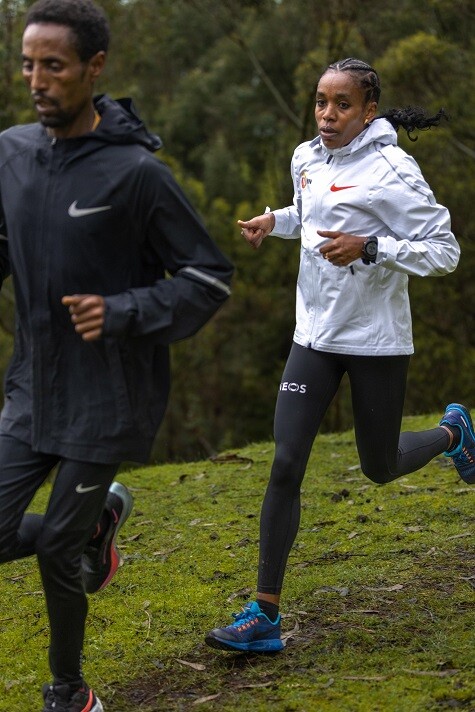
Genzebe Dibaba is the youngest sister of three-time Olympic champion Tirunesh Dibaba and Olympic silver medallist Ejegayehu Dibaba. The 31-year-old Ethiopian runner holds the world record for the 1500 metres (3:50.07, Monaco 2015). She also is an Olympic silver medal holder (2016, Rio de Janeiro). In 2015, when she became world champion in the 1500 meters, her brilliant performance was rewarded with the title of IAAF Athlete of the Year. She will be challenging for the first time over this classic distance.
These fast women are accompanied by Tsehay Gemechu, among others. Their 23-year-old compatriot has a personal best of 65.01 in the half marathon and finished fourth in the 5,000 meters at the 2019 World Athletics Championships.
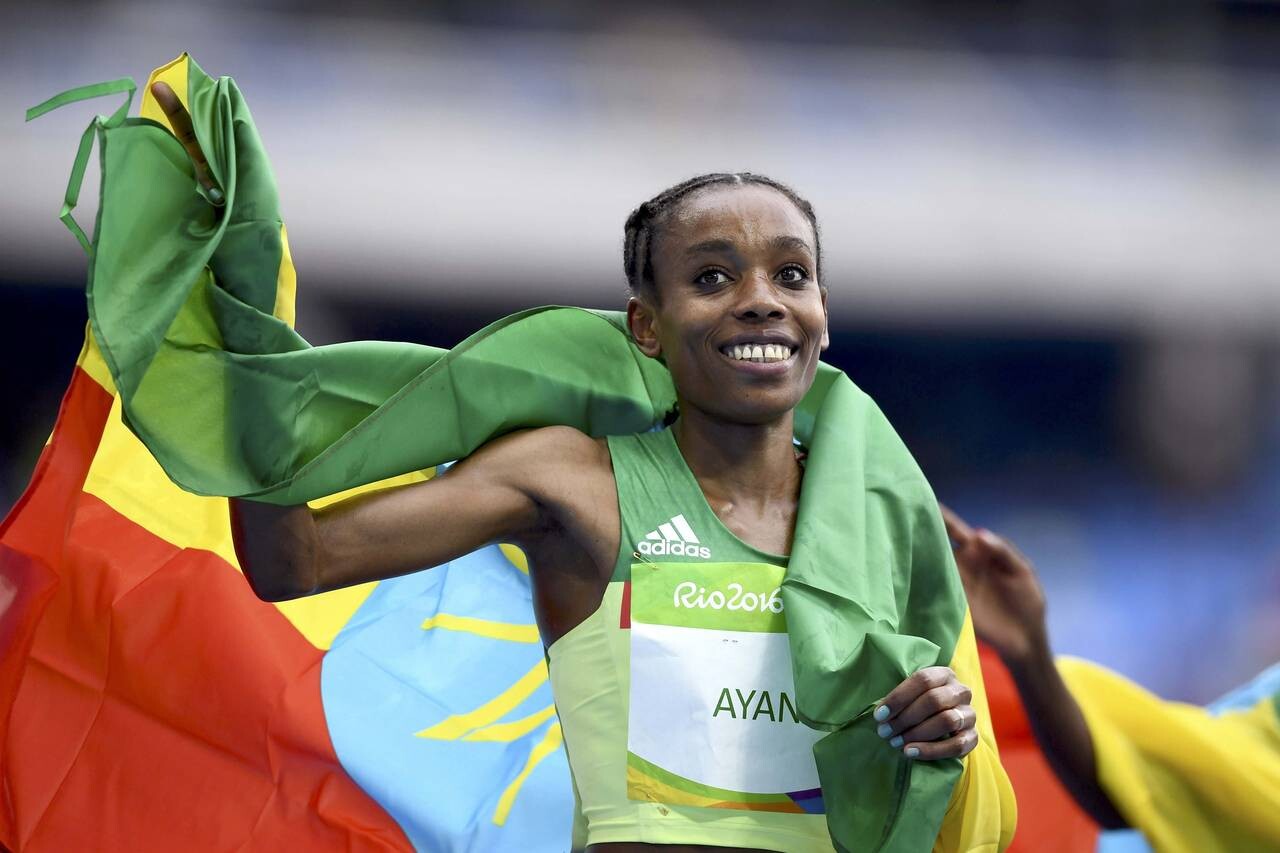
Course record of 2.03.39 in danger?
When the starting gun for the TCS Amsterdam Marathon sounds on Sunday 16 October, the eyes of the men will be on CyBrian Kotut, Lemi Berhanu and Titus Kipruto. On the ultra-fast course, they will be aiming for the course record of 2.03.39 (Tamirat Tola 2021).
CyBrian Kotut has already won a number of marathons: Hamburg, Florence and Paris. This spring, the 30-year-old Kenyan ran a personal best of 2.04.47 to win in Hamburg. Last November he was unbeatable in the 42,195 meters in Florence and in 2016 he triumphed in Paris.
Lemi Berhanu also knows all about winning. He has won the Dubai (2015), Boston (2016) and Xiamen (2017) marathons, among others. With a personal best of 2.04.33, the 27-year-old Ethiopian is in for the win.
Titus Kipruto is a revelation from Kenya. This spring, the 24-year-old marathon runner made a huge impression by winning the Milan marathon. In his second marathon, he finished in 2:05:05. Can he break his personal record again in Amsterdam? >{?Registration for NK marathon still possible
During the TCS Amsterdam Marathon, the Dutch marathon championships also take place, for which competitive athletes can register until September 26. The three main events, the full marathon, half marathon and 8K,
(09/13/2022) ⚡AMPby Runners Web
TCS Amsterdam Marathon
Do you want to enjoy Amsterdam in October and all that the city has to offer you? Want to feel a real athlete and start and finish in the historic Olympic stadium? Or run across the widely discussed passage under the beautiful National Museum? Then come to Amsterdam for the annual TCS Amsterdam Marathon in October! The TCS Amsterdam Marathon...
more...New Tech Revolutionizing Runner Apparel Market
Although running has a reputation for being an affordable sport that just about anyone can participate in, the average runner spends in the region of $1,000 a year on running kit according to a recent survey. While this may seem like a lot of money to spend on a sport that should not require any investments other than a fairly decent pair of running shoes, there are a number of things to take into consideration.
This includes the host of technological advances that have been made in recent years in terms of running clothes. The more high-tech an item is, the bigger the price tag will be. Here are just a few running gear developments that fitness enthusiasts are willing to spend good money on to ensure improved comfort and performance.
Increased Hygiene is a Priority
It is no secret that most runners simply throw their running attire in the washing machine to get it clean. Even running shoes can be cleaned this way, as long as they are manufactured from materials that can withstand a machine wash and the insoles and laces are cleaned by hand. However, it does pay to prepare your shoes for machine washing because the results will be even better. Furthermore, simply washing sweaty, dirty clothes and shoes is not always enough if you want to get rid of potentially hazardous bacteria, however. Anti-bacterial agents in active wear may not be new but the latest anti-germ fabric is not only designed to eliminate bacteria growth but to eliminate unpleasant odors as well. The latest technology gives active wear all the protection it requires by releasing antimicrobial properties whenever microbes present themselves.
Built-In Support is Very Popular
The days of having to wear bulky braces to support problem areas may be a thing of the past thanks to new tech that turns running apparel into supportive products. Stoko’s is one of the companies incorporating supportive gear into running clothes that won’t restrict natural movement and hinder performance.
Whether your running efforts are thwarted by ACL or MCL concerns, supportive tights made from a special technical knit fabric will support your knee where it is needed most. Similarly, supportive apparel is also available for the thighs, hips, and calves. If you have issues with your shoulders, biceps, or forearms, there is good news too as well-known brands have also developed vests and shirts that boast supportive technology.
Gain Lean Muscle Faster
With the demand for functional active wear increasing in leaps and bounds among both casual and serious runners, brands are pulling out all the stops to gain a competitive advantage.
Electromyography technology is particularly popular as it allows the user to track how hard their muscles are working while delivering detailed feedback via an easy-to-use application. Runners who want to get the most out of their time on the road or track can also boost their efforts by running in clothes that are made from weighted fabric. The added weight works the muscles harder during periods of activity, making it easier to increase lean muscle mass.
Running apparel has changed considerably over the last few decades. Thanks to technological advancements, clothes are not only becoming more comfortable but can provide a host of other benefits to the wearer as well.
(09/13/2022) ⚡AMPBoston Marathon creates nonbinary division for 2023 race
Nonbinary athletes will be able to run in next year's Boston Marathon without having to register as members of the men's or women's divisions, race organizers announced Monday.
The Boston Athletic Association, which administers the prestigious marathon, said it's been working to expand opportunities for nonbinary people — not just for the marathon but for the BAA's other races, which include a 5K, a 10K and a half marathon.
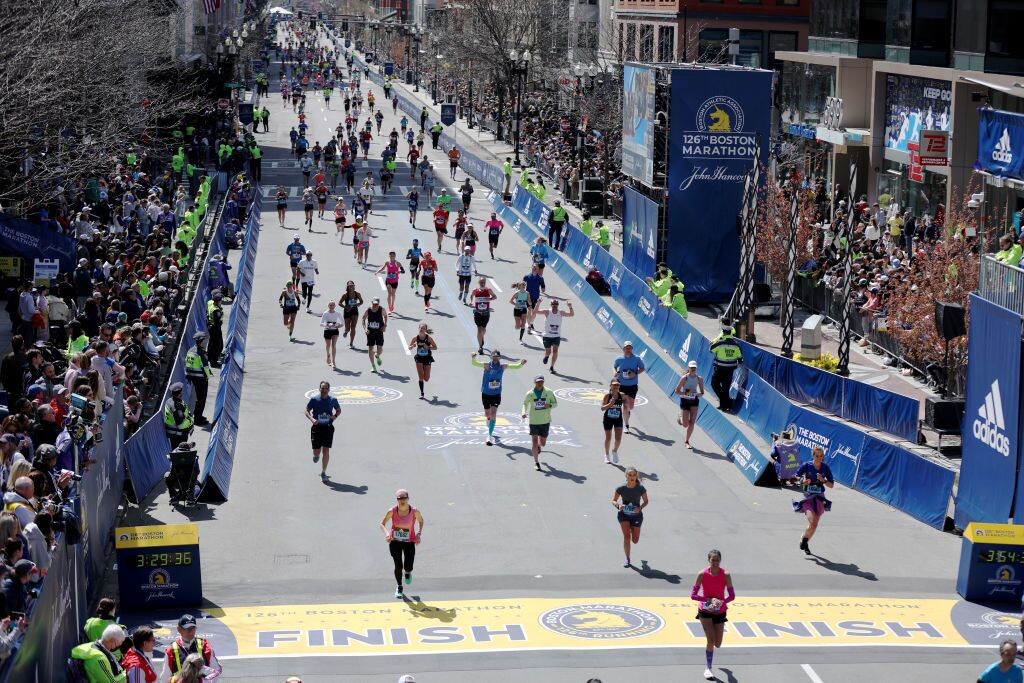
Organizers confirmed the change as registration opened Monday for the 127th running of the marathon on April 17, 2023. A field of about 30,000 is expected for next spring's edition of the storied race.
Nonbinary athletes can submit entry applications if they've completed a marathon as a nonbinary participant during the current qualifying window, the BAA said. It said it's still working to establish qualifying standards for nonbinary participants, but that its online applications will include 'nonbinary' as a gender option.

"Discussions are ongoing with nonbinary athletes in an effort to further promote inclusion at all BAA events,' the organization said, adding, 'We view this first year as an opportunity to learn and grow together.'
Nonbinary pro miler and 1,500 runner Nikki Hiltz, who came out as transgender last year and narrowly missed a spot on the US team for the Tokyo Olympics, lauded the move.
'There's still so much work to be done but I'm thrilled that nonbinary runners are being acknowledged by the Boston Marathon and BAA,' Hiltz tweeted.
One Twitter user wrote that he saw the decision as a 'good compromise' on the issue of gender divisions in sports, but others disagreed with the move.
'I'm sure no one will abuse this,' another Twitter user remarked sarcastically. 'Especially for a race that is notoriously tough to get qualified for.'
The Boston Marathon is the latest major marathon to begin adding nonbinary divisions.
Last year's Philadelphia Distance Run, a premier event offering a half marathon and a 5K, became the first large race in the US to establish a nonbinary division and offer equal prize money.
The Brooklyn Marathon and Half Marathon followed in April. Eighty-two competitors who had registered as nonbinary participants were among the finishers, including Jacob Caswell, a middle-distance runner for Columbia University.
'Being able to not even win but just compete as yourself, it's just been freeing,' Caswell, who won the nonbinary division in Brooklyn, told The New York Times.
(09/13/2022) ⚡AMPby Alex Raskin
Boston Marathon
Among the nation’s oldest athletic clubs, the B.A.A. was established in 1887, and, in 1896, more than half of the U.S. Olympic Team at the first modern games was composed of B.A.A. club members. The Olympic Games provided the inspiration for the first Boston Marathon, which culminated the B.A.A. Games on April 19, 1897. John J. McDermott emerged from a...
more...World 10,000m bronze medalist Margaret Chelimo sets eyes on the Dam tot Damloop road race
Margaret Chelimo will compete in the Dam tot Damloop road race on September 18 in Zaandam, Netherlands.
Chelimo said her main goal in the race is to run well. “My track season is now over and I am going to Dam tot Damloop for the road race. I just want to run well,” Chelimo said.
At her recent outing in Zurich for the Diamond League final, Chelimo placed second in 14:31.52.
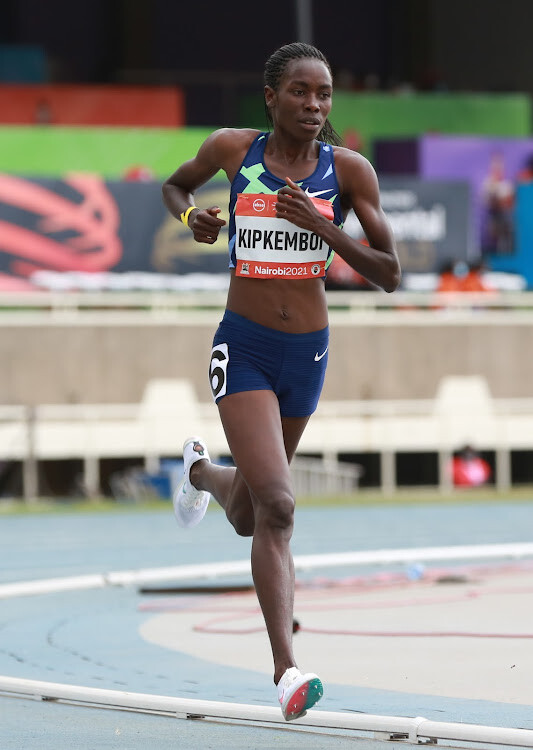
She revealed that her win at the 2015 All-Africa Games in Brazzaville, Congo marked her breakthrough in athletics and made her believe in herself. She posted 15:30.15 to win the 5000m race.
“I vividly remember winning that race in 2015…It was a defining moment for me. That’s when I became popular. That win made me realize that I could actually run well and inspired me to venture into athletics seriously,” Chelimo said.
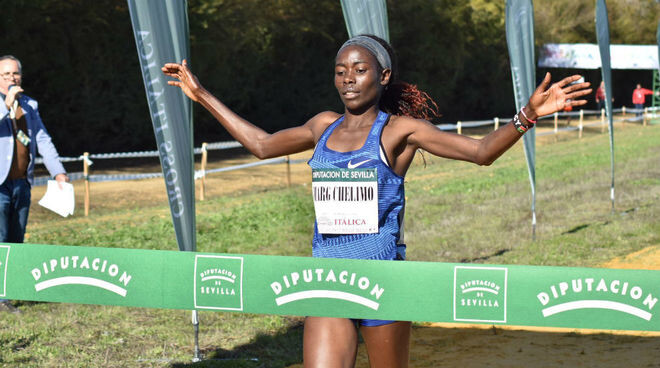
The 2016 Africa 5000m silver medallist said she looks up to former world 5000m champion Hellen Obiri and former Olympic 5000m champion Vivian Cheruiyot. “They are true role models and I draw my inspiration from them,” she said.
Chelimo said she is anticipating a good show at next year’s World Championships in Budapest.
“I will be there and I am planning for something good. I am building up well and staying focused on training,” she said. She added that athletics is not a walk in the park as there are many challenges.
“Athletics is not easy! There are both financial and injury challenges. Focus, self-discipline and sacrifice are the virtues that keep me going,” Chelimo said.
In the next three years, Chelimo believes she will be at a higher position in as far as athletics is concerned with major titles.
She described her first outing at the 2009 Bressanone World Youth Championships as a thrilling experience.
"That was the first time I traveled out of the country. I was happy to meet new people from different countries. At that time, I was also very young," she said.
When Chelimo is not training, she revealed she loves spending time on her small farm or watching television.
“I have a small farm where I plant vegetables. I also have some chicken that I look after. Sometimes, I just watch television like right now,” she concluded.
(09/13/2022) ⚡AMPby Abigael Wuafula
Dam tot Damloop
On Sunday, 50,000 runners can join the Dam tot Damloop. The unparalleled atmosphere, the tunnel, one of the world's largest business streets and the fact that starting and finishing in two different cities make this event so special. The distance is 10 English Mile, which also includes a number of world top runners each year. In addition, the Mini Dam...
more...Three easy ways to fix running form, body awareness is the first step to effortless, flowing running form
Running form can be simple to finesse, but first you need to know what needs fixing. Anyone who has seen the GOAT of marathoning, Eliud Kipchoge, run knows what beautiful running form looks like, but it can be challenging to figure out how to fix your own form. Here are three easy ways to gain a better understanding of how you are running and what you can do to run more efficiently.
Run fast at the track
In his book Run Fast, renowned marathoner and trainer Hal Higdon suggests finding a 400-metre track to try this running form awareness drill. Begin running at the 300-metre starting line (the start of the back straightaway) and pick up your pace through the straight until you are running near 5K race pace. Accelerate as you come into the home stretch so that you’re running full-out when you reach the finish line.

Notice what happens to your form as you accelerate, and see if you can pinpoint where you become more or less efficient as you pick up your pace. Pay attention to knee lift, stride length, posture, arm carry, and head angle.
Run barefoot in sand or grass
Head to the beach or a safe grassy area and find a smooth stretch to run on. Higdon suggests running at a comfortable pace for 100 metres, and paying particular attention to where your foot contacts the ground.

Notice where you naturally land to develop awareness, even if you don’t need to adjust anything. Running on slightly damp sand and then looking back at your footprints can also be helpful when trying to analyze how your feet are striking.
Run straight on the road
Pick a stretch of road or sidewalk where you can follow a straight line (taking care to choose somewhere safe). Look for a painted stripe on the road to follow, a crack in the pavement, or the separation between the pavement and the shoulder of the road.
“Focus your attention on that line and think of yourself as a machine moving along it, like a train on a rail,” says Higdon. “Can you run straight along the line without wavering back and forth? Is your head straight, are your eyes level?” Notice how your arms are moving, and see if your legs are moving straight forward and kicking straight back.
While running form is very individual, all runners follow the same basic principles. Body awareness is the first step to fixing your running form– and then working on any oddities or challenges you notice when practicing these drills.
(09/13/2022) ⚡AMPby Keeley Milne
Niels Laros the 17-year-old Dutch runner who’s quietly breaking Jakob Ingebrigtsen’s junior records
If you are not familiar with the name Niels Laros, it’s OK. This 17-year-old rising middle-distance star from the Netherlands will be a household name in the sport soon enough.
Laros pulled off the 1,500m/3,000m double gold at the European Athletics U18 Championships earlier this summer, breaking both the U18 European 1,500m and 3,000m records, previously held by Olympic champion Jakob Ingebrigtsen.
On Sunday evening at a small World Athletics Continental Tour meeting in Zagreb, Croatia, Laros ran a 16-second personal best in the 3,000m, breaking the previous record of 7:56.40 held by East Germany’s Hansjörg Kunze, which stood for 47 years.

Two years ago, Laros’s personal bests were fast but earth-shaking (4:00-flat over 1,500m and 8:51 in the 3,000m), but he has since shattered his records, bringing his 1,500m time down to 3:39.46 and 7:48.25 over 3,000m.
Laros already has a faster 800m PB than Ingebrigtsen, which he recently clocked at 1:46.30, plus he has beaten Ingebrigtsen’s previous U18 times in the 1,500m and 3,000m. Ingebrigtsen had U18 bests of 3:39.92 for 1,500m, 8:00.01 for 3,000m and 13:35.84 over 5,000m.

As of next April, Laros will move up into the U20 ranks, and looks poised to be one of the biggest stars in the sport of athletics in years to come. He’s even already signed a professional contract with Nike.
Although Ingebrigtsen and Laros have never raced each other, track fans will relish this matchup in the 1,500m at the Paris 2024 Olympics, when Laros is 19 and Ingebrigtsen is 23.
(09/12/2022) ⚡AMPby Marley Dickinson
Running injuries don’t happen for the reasons you think
Running is one of the most popular forms of physical activity worldwide. But though it requires little expertise or equipment – and can be very beneficial for our health – it unfortunately also comes with a relatively high risk of injury. In fact, one survey found nearly half of all runners experience injury or pain. Another study even estimated that runners experience nearly 18 injuries for every 1,000 hours of running.
Novice runners have the highest likelihood of sustaining an injury. The most common injuries they experience are in their lower body (such as in the Achilles tendon, shins or knees) and are often the result of overuse – an injury that happens in a muscle or joint due to repetitive trauma, usually as a result of doing more than you’re capable of, or not training with proper technique.
But that doesn’t mean injuries are inevitable. There are many ways you can protect yourself from an injury – so long as you ignore some long held ideas about the best way to do this.

Injury prevention myths
One common belief in the running community is that static stretching as part of a warm-up or cool-down can reduce risk of injury. But recent evidence suggests that stretching does little to prevent injuries. It may even reduce running performance in races less than 60 minutes long.

The belief that footwear is a significant factor in whether or not a person gets injured may also be untrue. While comfortable, properly fitting shoes are important for preventing minor issues such as blisters and can help with running performance, there’s little evidence suggesting that footwear alone reduces injury risk.
There’s also little evidence that shoes prescribed based on foot posture reduce injury. A study using army recruits during basic training even showed there was little difference in injury risk regardless of the type of support a person’s shoe had.
Evidenced-based tips
If you want to run injury free, here are the best, evidence-based ways:
1. Build strength
A recent study of Brazilian runners found that performing an eight-week training programme that focused on foot and ankle strength reduced injury risk by nearly 60% compared to a group who didn’t strength-train.
While exercising to prevent injury in runners is a relatively new concept, such programmes have also shown promise in other running-based sports such as football and volleyball where overuse injuries are also common. In general, strength training should be done three to five times a week for at least 15 minutes each session. Exercises should focus on building muscular endurance, coordination and balance – such as lunges and squats.
2. Not recovering between training sessions
Failing to recover between training sessions is shown to lead to chronic fatigue or over training – which can cause performance decline, low mood and muscle aches. These increase risk of overuse injuries as the body’s muscles and tissues aren’t able to repair and adapt between runs. The amount of time a person’s body needs to recover between runs will vary, though 36-48 hours is typical.
Not getting enough or not getting good quality sleep can also lead to overuse injuries, as sleep is important for helping the body to recover and restore itself. This is why it’s important to get around seven to nine hours of sleep each night – alongside adequate nutrition.
3. Avoid doing too much too soon
Runners are often also advised to follow the “10% rule” when training to avoid injury, meaning they shouldn’t increase their training load (the volume and intensity of their running) by more than 10% each week. Yet research shows that the 10% rule is no better at reducing injury risk than increasing your training load by a greater degree: increasing by up to 24% each week has no greater risk of injury for novice runners.
On the other hand, increasing running volume by around 30% each week is linked to greater risk of injury in novice runners. In practical terms, this would mean increasing your running load from 10km per week to 28.5km per week over a four-week period.
Given that injuries are typically the result of a combination of factors – including age, gender, experience and injury history – growing evidence suggests that the best way for runners to avoid injury is to learn how to listen to their bodies. A recent study showed that having an obsessive passion for running was associated with an increased risk of injury – this is likely due to runners ignoring their bodies and avoiding the early warning signs of injury.
Being able to listen to your body improves with experience. But two studies have shown that people suffering from both knee and Achilles injuries were still able to run without significantly worsening their pain or injury so long as they listened to their body and modified their running style slightly.
It’s unlikely a person can avoid getting injured altogether – though following these strategies may help reduce the risk and severity of injuries somewhat. If you do get injured, the best thing to do is consult a professional. But pain permitting, you may still be able to do other types of exercises in the meantime (such as cycling or using an elliptical or even strength training) to help as you recover. And, as you become more experienced as a runner, you may actually suffer fewer injuries than you did at the start.
(09/12/2022) ⚡AMPby Jo Adetunji
Prefontaine Memorial Run is this weekend
The annual Prefontaine Memorial Run is this weekend, and it has a national flavor this year after the two previous events were canceled due to the ongoing COVID-19 pandemic.
The event that honors the late Marshfield graduate and running legend Steve Prefontaine starts at 10 a.m. on Saturday, Sept. 16. It is the 42nd year for the race, which begins in downtown Coos Bay and finishes on Steve Prefontaine Track at Marshfield High School’s Pete Susick Stadium.
Pre set his last American record on that track and 50 years ago competed in the summer Olympics, finishing fourth in an epic 5,000-meter final.
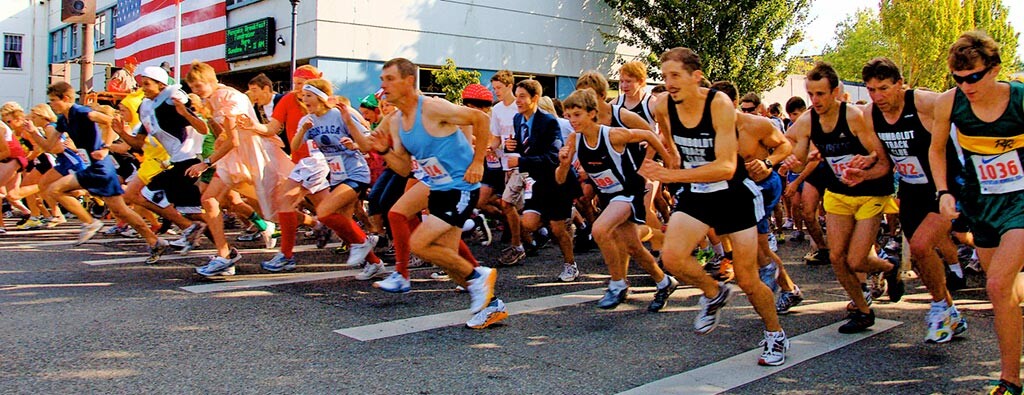
For the third time, the run has been named the national championship 10-kilometer race for the Road Runners Club of America.
The race previously was designated the championship 10K in both 2020 and 2021 and subsequently canceled each year because of the ongoing COVID-19 pandemic.
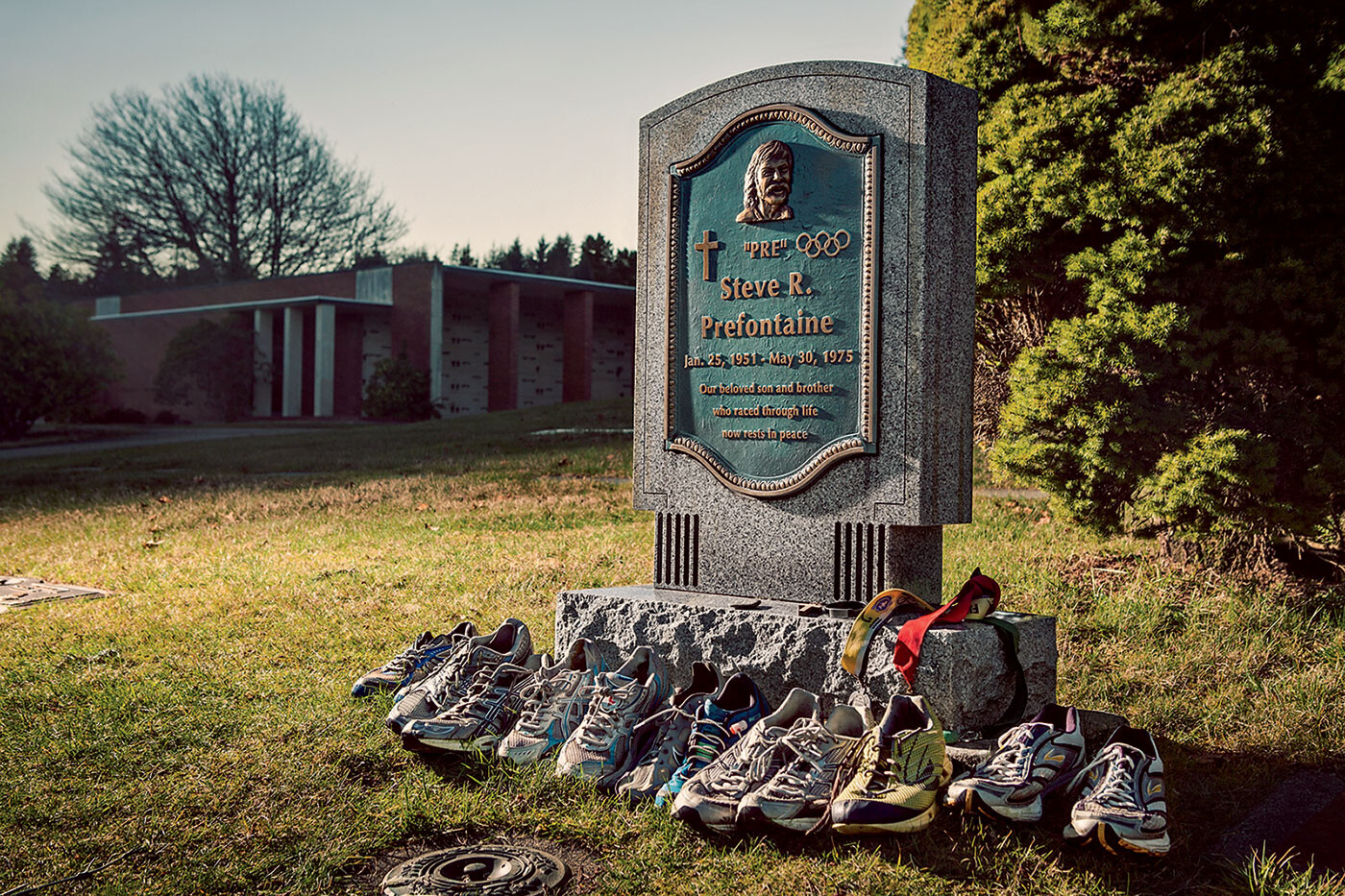
The RRCA Championship Event Series is one of the oldest distance running traditions in the United States, dating back to 1958, race organizers said. The goal of the series is to shine a spotlight on well-run community-based events, and to promote the sport by recognizing the top performing runners in the open, 40+, 50+ and 60+ age group categories for both men and women.
The Prefontaine Memorial Run begins with a stand-alone high school 5-kilometer cross country race followed by the 10-kilometer community run and a 2-mile fun run/walk. Entrants can register online by logging on to the Prefontaine website at www.prefontainerun.com.
Proceeds from the run help the Prefontaine Foundation accomplish its mission of supporting track and field and cross country athletes through grants to local high schools and scholarships to deserving athletes. The Foundation also sponsors and provides financial support to the Prefontaine Track Club. Several club members competed at the recent Junior Olympics national meet in California.
The Prefontaine Memorial Run is held under the direction of the Prefontaine Foundation with community-based support provided by sponsorships from Tower Ford, Pacific Properties, Banner Bank, Advanced Health, Farr’s Hardware, North Bend Medical Center, Wild Coast Running Company, Vend West Services, Nasburg Huggins Insurance and Nike.
(09/12/2022) ⚡AMPPrefontaine Memorial Run
During his brief 24-year lifespan, Steve Prefontaine grew from hometown hero, to record-setting college phenomenon, to internationally acclaimed track star. In a similar span of years since his death in 1975, Pre has become the stuff of enduring legend. His rare combination of talent, discipline, determination, and star-quality with a human touch made Pre the idol of those he called...
more...World marathon silver medalist Judith Korir to compete at the Copenhagen half marathon
Judith Korir will compete in the women’s elite race during the September 18 Copenhagen Half Marathon.
Korir will enjoy the company of Kenyan compatriots including former NCAA 10K champion Sharon Lokedi, Irene Jepchumba, Agnes Keino, Fancy Chemutai, Chumba Chebichii, Vicoty Chepngeno and Beatrice Chepkemoi.
Korir has a personal best time of 1:05:28 which she ran at the Ras Al Khaimah Half Marathon in February. She is also the winner of the Paris Schneider Electric Marathon. She is the third fastest in the field.
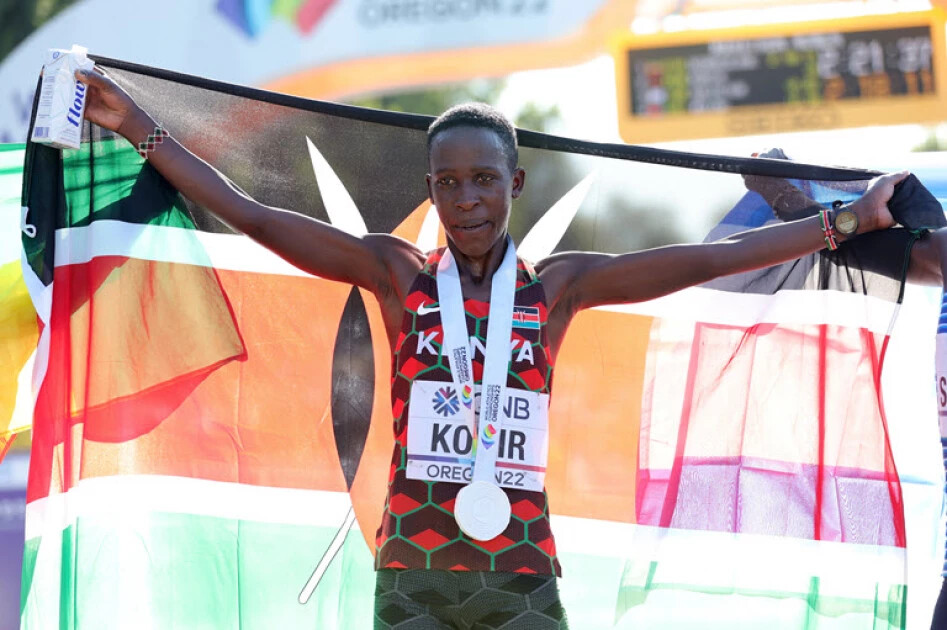
Chemutai is, however, the fastest in the field with a personal best time of 1:04:52, which she ran at the 2018 Ras Al Khaimah Half Marathon while Chepngeno is the second fastest in the field with a personal best of 1:05:03 posted at the Aramco Half Marathon in January.
Lokedi has a personal best time of 1:08:14 which she ran at this year’s United Airlines NYC Half Marathon to place fourth.
The rest of the Kenyans have personal bests as follows Keino (1:15:04), Chebichii (1:06:11), Jepchumba (1:06:03), and Chepkemoi ( 1:07:29).

The Kenyan representatives will face stiff competition from the Ethiopians who will be seeking to shake off their rivals.
The 2019 All-Africa Games silver medallist Feysa Hawi with a personal best of 1:05:41 will also be in the line-up. During last year’s edition, she placed second in her PB and she is the fourth fastest runner in the field.
Bosena Mulatie (1:05:46) will also be seeking top honours. Other Ethiopians in the race will be Betelihem Afenigus (01:07:47), debutant Tsigie Gebreselama, Gete Alemayehu (01:06:37), Tiruye Mesfin (01:08:25), Tadu Teshome (01:07:55), debutant Sintayehu Tilahun and Alemaddis Eyayu (01:08:04).
In the men’s field, Matthew Kimeli is the second fastest in the field with a PB of 58:43 posted at the 2021 Valencia Half Marathon. He is also the winner of the 2022 Adizero Road to Records Half Marathon (59:30) and placed third at the 2022 Prague Half Marathon (59:46).
Other Kenyans in the field will be Felix Kipkoech (58:57), Vincent Kipkemoi (1:00:00), Josphat Kemei (59:32), Ronald Kirui (59:38), Edmund Kipngetich (59:41), Alfred Kipchirchir (59:43), Ed Cheserek (1:00:37), Boniface Kibiwott (1:00:52), Titus Kimutai (1:00:56), Mathew Kibiwott (1:02:19) and Jonathan Maiyo (59:02).
Ethiopia’s Amedework Walalegn is the fastest in the field with a personal best time of 58:40.
(09/12/2022) ⚡AMPby Abigael Wuafula
Copenhagen Half Marathon
The Copenhagen Half Marathon was the first road race in Scandinavia and is one of the fastest half marathons in the world. The Copenhagen Half Marathon has been awarded with the International Association of Athletics Federation's (IAAF) most distinguished recognition - the IAAF Road Race Gold Label. Copenhagen Half Marathon was awarded the IAAF Road Race Bronze Label in January...
more...Emma Coburn’s maple turmeric chicken thighs: make them in minutes tonight
These chicken thighs come together in minutes and taste like you spent hours in the kitchen. American track superstar and Olympian Emma Coburn, author of the cookbook The Runner’s Kitchen, says she often adds turmeric, with its anti-inflammatory properties, to her recipes–it adds the perfect kick to this one.
Whip up the sauce this morning, stick your chicken thighs in to marinate for a little while (optional), and watch Coburn run the NYRR New Balance 5th Avenue Mile this afternoon.

Emma Coburn’s Maple Turmeric Chicken Thighs
Ingredients
1 kg boneless, skinless chicken thighs (this marinade works well with tofu or tempeh for vegetarian options)
1 Tbsp ground turmeric

1/2 cup maple syrup
1/4 cup olive oil
2 tsp salt
2 tsp freshly ground black pepper
1/2 shallot, minced
3 cloves garlic, minced
Juice of 1/2 lemon
Cooked rice (optional) to serve (I use brown basmati)
Pea shoots or microgreens (to garnish)
Directions
Preheat the oven to 425 F (220 C). In a large bowl, combine the chicken, turmeric, maple syrup, olive oil, salt, pepper, shallot, garlic and lemon juice. Toss the chicken until thoroughly coated.
Transfer the chicken and all contents of the bowl to a nine by 13-inch glass baking dish. Bake for 35 minutes, or until the chicken reaches an internal temperature of 165 F (75 C). Serve over rice, topped with a spoonful of the sauce and garnished with pea shoots or microgreens, if using.
(09/12/2022) ⚡AMPby Keeley Milne
Laura Muir and Jake Wightman are the winners of the 2022 NYRR Fifth Avenue Mile
The world’s top middle-distance runners took to the streets of New York City on Sunday morning for the Fifth Avenue Mile, one of the final races of the summer racing season. For the second year in a row, two Scottish runners took the win, with Laura Muir winning the women’s race in a course record time of 4:14.8 and Jake Wightman winning the men’s race for the second consecutive year.
The Olympic 1,500m silver medallist, Muir, won the women’s race by three seconds over American Nikki Hiltz, becoming the fastest female in the 41-year history of the race. Eleanor Fulton of the U.S. finished third in 4:18.0.
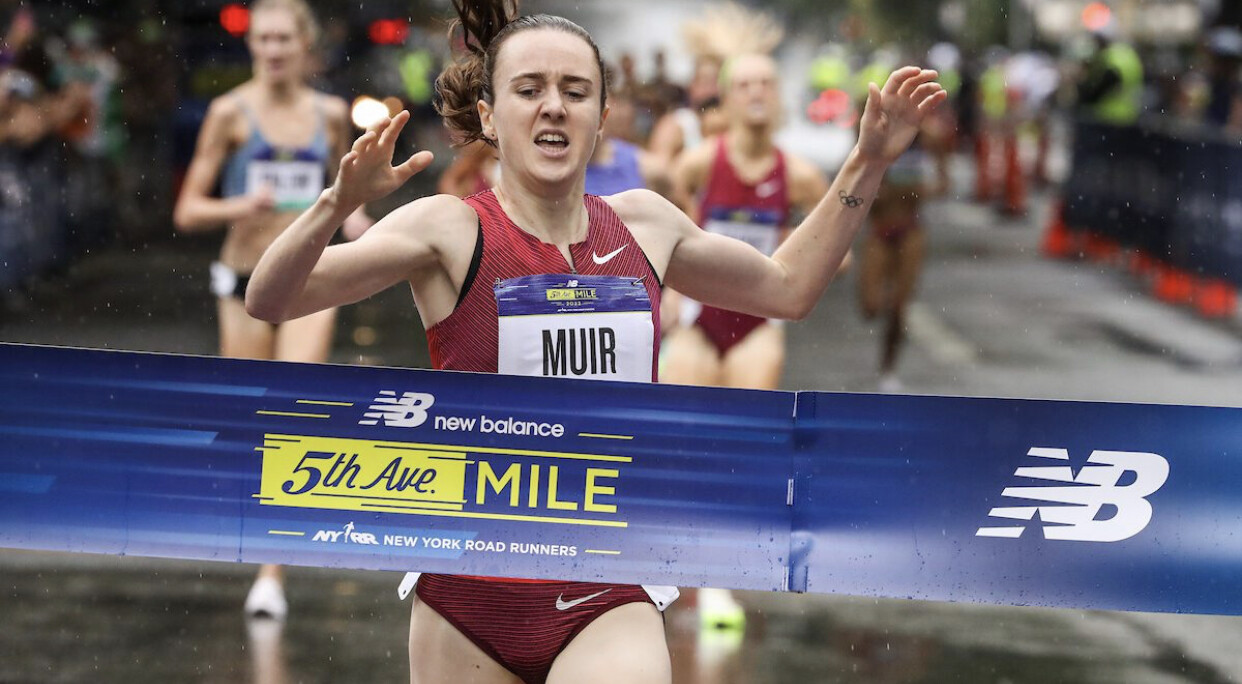
Muir had the fastest seed time heading into the race and led the race from the gun to tape. The previous mile record was set by Jenny Simpsonin 2019 (4:16.2)
Moments later, the world 1,500m champion, Wightman, successfully defended his 2021 title in 3:50.0 ahead of his British compatriot Jake Heyward. Wightman has now won the Fifth Ave. Mile in three of the last four years. American Sam Prakel finished third in 3:51.0, ahead of Canada’s William Paulson, who was fourth in 3:51.3.
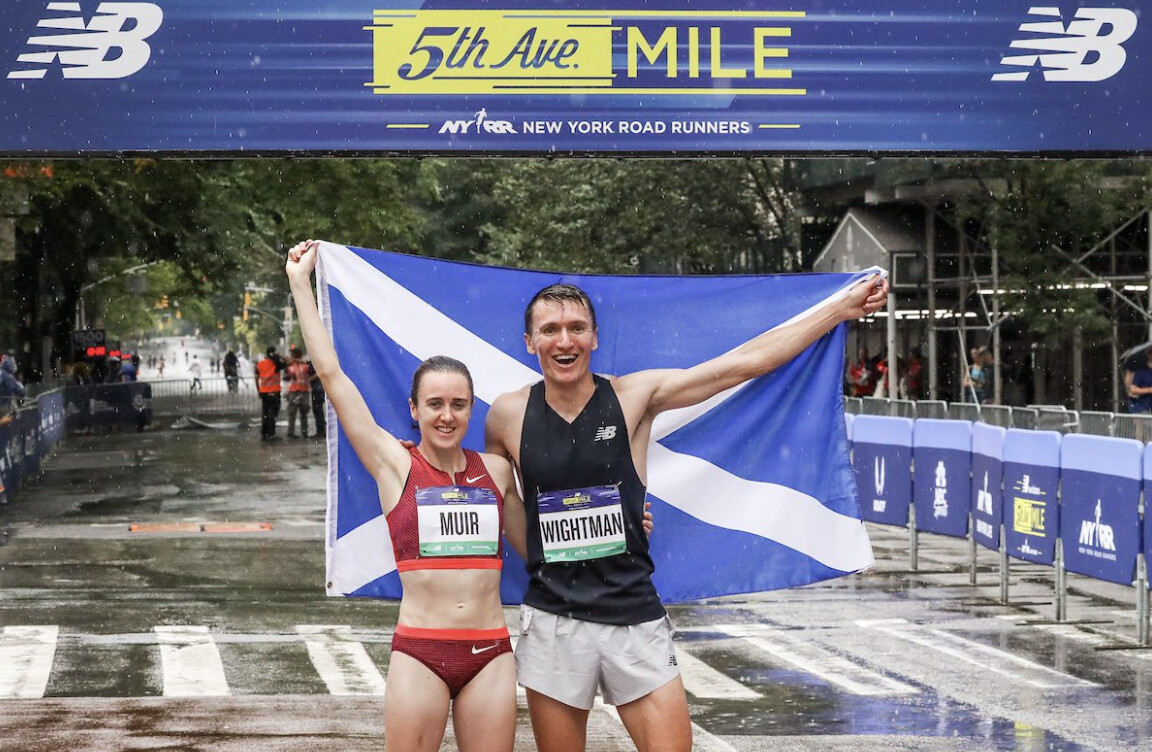
Muir and Wightman took wins today despite both competing and earning medals at the Diamond League Finals in Zurich on Thursday night.
(09/11/2022) ⚡AMPby Running Magazine
New Balance 5th Avenue Mile
The New Balance 5th Avenue Mile opens a beautiful 20-block stretch of 5th Avenue to runners of all ages and abilities who want to run their best mile in New York City. Special races include a youth mile, the George Sheehan Memorial Mile for runners age 60 and over, the NYRR Road Mile Championships, and Olympic-caliber professional men's and women's...
more...Hellen Obiri wins back to back Great North Runs as the world’s most iconic half marathon
Hellen Obiri continued Kenya’s dominance of the famous race, repeating her victory of 12 months ago as the event took place in its rightful home following an altered course in 2021 while the world recovered from the coronavirus pandemic. The race this year returned to its traditional course.
Uganda’s Jacob Kiplimo won the men’s race following a thrilling three-way battle for much of the race distance.
The race took on a suitably subdued mood as runners paid tribute to Queen Elizabeth II, who died on Thursday, and it was perhaps fitting that in Kenya and Uganda, the winners of the women’s and men’s races were members of the Commonwealth, of which the Queen was head.

Obiri was given close attention by Britain’s Eilish McColgan in the 2021 staging of the 13.1-mile race, but while McColgan was not involved in the race today – she was on official starter duties – the Kenyan was instead given a tough test by Peres Jepchirchir and Almaz Ayana, the three crossing the line with only five seconds separating them.
Obiri crossed the line in 67.05, with Jepchirchir two seconds behind in 67.07, and Ayana in 67.10. First Brit over the line was Charlotte Purdue, who ran a largely solo race to finish in fifth with a time of 70.11.
Winner Obiri said: “I’m very happy to win again, although of course this route was different to last year. The crowds were so good, I am very pleased to win here.”
In the men’s race, Kiplimo quietly and confidently picked off his opponents, with 2013 winner Kenenisa Bekele, who finished an eventual third, dropping first, followed by second-place Selemon Barega with about four miles to go, leaving Kiplimo with clear air to finish in 59.33, Barega in 60.39 and Bekele in 61.01.
Kiplimo said: “The race was good – it was a great feeling to win. It was a strange feeling to run the last few kilometres on my own. From 10KM it was four or five of us, then three, then two, then just me.
“This is a wonderful crowd. Around 18-19KM the crowds were amazing. Everyone was cheering and smiling.
“When I heard the news (about the Queen) I thought the race was going to be cancelled – I was so happy to hear it was still going ahead. It is very sad news but it was good for us all to come together.”
2022 winner Marc Scott was first British runner home in sixth with a time of 62.28.
It was a very different kind of race due to the events of the last few days but it’s a great event as always. They know how to put an event on here in the North East. I’m just grateful to be part of it again, especially with a great field assembled.”
(09/11/2022) ⚡AMPGreat North Run
Great North Run founder Brendan Foster believes Britain is ready to welcome the world with open arms after the launch of the event's most ambitious plan to date. The Great World Run campaign seeks to recruit one runner from every country in the United Nations – 193 in total – to take part in the iconic half marathon in...
more...Jacob Kiplimo wins the Great North Run after fantastic tributes were paid to the Queen
World record holder Jacob Kiplimo became the first Ugandan man to win the Great North Run after tributes were paid to Queen Elizabeth II before Sunday' race.
Kiplimo powered to victory in his first appearance at the event in north-east England.


The 21-year-old had a 32-second lead as he hit the 12-mile mark on the 13.1-mile course from Newcastle to South Shields.
Kiplimo, the reigning world half-marathon champion, crossed the line in 59.33, 66 seconds ahead of Olympic 10,000m champion Selemon Barega, with Ethiopia's Kenenisa Bekele third in 1.01.01.
"I enjoyed the race, it was nice. I came here to win it," Kiplimo said.
In the women's race, Kenya's Hellen Obiri retained the title after holding off strong challenges from Peres Jepchirchir.
The trio broke away from the field early in the race and contested a tense finale.
Obiri made the decisive kick in sight of the finish line as she clocked 1:07.05, 37 seconds faster than last year, with her compatriot Jepchirchir, the Olympic marathon champion, two seconds behind and Ethiopia's Almaz Ayana a further three seconds adrift.
"It's a great opportunity to do a faster one than last time, so I'm so happy," Obiri said.
(09/11/2022) ⚡AMPGreat North Run
Great North Run founder Brendan Foster believes Britain is ready to welcome the world with open arms after the launch of the event's most ambitious plan to date. The Great World Run campaign seeks to recruit one runner from every country in the United Nations – 193 in total – to take part in the iconic half marathon in...
more...Make the Most of Difficult Long Runs
IF YOU’VE EVER found yourself mid–long run debating whether you should cut it short, you’re not alone. Fatigue has a way of inducing an internal discussion about the fate of your miles.
Making the decision that’s right for you can be tricky. On the one hand, you’re already really tired, and you have several miles to go. Won’t mindlessly sticking it out put you in a hole and compromise your upcoming training and racing? On the other hand, isn’t one of the main points of long runs to get used to “keep on keeping on” when the desire to stop strikes?
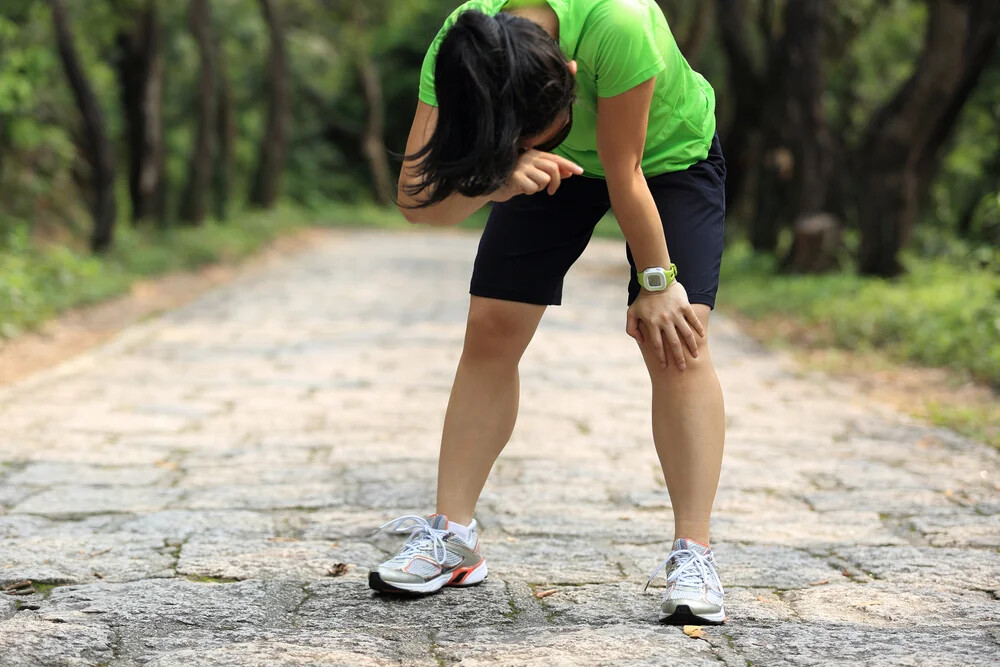
The best answer is “it depends.” Here are five things to consider to help you decide what to do.
• Do you have a specific bodily pain?
Discomfort—mild muscular fatigue or tightness, stomach distress, hot spots on your feet—is typical when you’re going long. These unpleasant sensations seldom merit changing your plan.
A specific bodily pain is another matter. Sara Hall, the second-fastest half-marathoner in U.S. history, says she cuts long runs short under only one condition—if she’s worried about an acute pain or tight spot becoming an injury.
A good rule of thumb: Assess whether your troublesome spot is making you alter your running form. If so, being disciplined in this instance means ending the run. Continuing with compromised form can lead to injury and cause problems elsewhere.
• Why do you want to stop?
Many runners consider stopping their long run because it’s a mental struggle or they’re just more tired than usual. We’re humans, not machines, after all, so this is common.
“People only have so much willpower,” says Mark Coogan, a member of the 1996 U.S. Olympic Marathon team who coaches the elite group New Balance Boston. Life circumstances are a part of training, so account for them, he says.
If your family or work life has been stressful lately, a long run can help you mentally reboot. But it can also seem like an obligation, and slogging away to hit an arbitrary mileage goal can further drain you psychologically. If the run isn’t crucial to your training, it’s probably not worth spending precious mental capital on it. So, cut the run short, and don’t beat yourself up for it.
If you feel okay mentally, but physically worn down from the start, you’re also probably best off cutting the run short, especially if you have an important race in the next week or two. If you don’t have a race soon, first try slowing your pace. If doing so doesn’t help—and the run isn’t super important—then go shorter.
• What is your long run goal?
Long runs for marathoners have two main goals: putting in time on your feet at an easy to moderate effort, and harder outings that incorporate stretches at goal marathon pace or a little faster. If you’re struggling on the first kind, see if backing off the pace helps. “I will adjust the pace if I’m not feeling like I should sustain the pace I’m at and prioritize hitting the distance,” Hall says. “In my mind, the point of a long run is to go the full distance or time, so I would rather finish the full duration and slow the pace down or cut the next day short if I need more recovery.”
Sara Slattery, retired elite runner, former college coach, and coauthor of How She Did It, says that seeing long runs through is an important part of marathon prep. “That run often gives athletes confidence,” she says. That’s especially true if covering the 26.2 miles of the marathon, without regard to pace, is the main challenge of the event. Knowing that you repeatedly stuck it out in training despite the urge to call it a day is a powerful psychological tool.
If you’re struggling on a long run that calls for segments at marathon race pace, consider doing a standard long run instead. Focus on hitting the distance, emphasize recovery, and try your race pace on the next long run instead.
• What are you training for?
Long runs have a place in all training programs. But prioritizing them depends on what you’re training to accomplish. If you’re getting ready for a marathon, they’re arguably the most important part of your buildup. If your focus is a 5K PR, not so much. Slattery and Coogan agree that if you’re not training for 13.1 or longer, the cut-it-short threshold is lower. Gutting out a two-hour run when you’re overly tired will likely detract from the harder sessions, like intervals, that specifically prepare you for shorter distances.
That’s not to say that marathoners should do all long runs as planned regardless of how they feel. “Almost all marathoners already know how to persevere,” Coogan points out. You don’t need to always prove to yourself you’re not a quitter.
• Is this bad run part of a pattern?
“If you are feeling that rundown and like you need to cut your runs short more than half the time, you may be overdoing it in training,” Slattery says. Adjust your distance or pace so you recover better and can train consistently.
Coogan suggests also looking outside your running. “Your takeaway is that you are overdoing it somewhere else in your life, and you don’t have the willpower right now,” he says. Figure out what’s making you mentally tired and what you can adjust.
WHAT TO DO IF YOU STOP YOUR LONG RUN SHORT
1. Maximize recovery.
Eat carbs and protein within an hour of finishing, hydrate, and do some gentle stretching or walking.
2. Take an additional easy day.
Even if it’s not on your training plan, doing a recovery run before your next challenging workout is smart.
3. Review your training.
Have you upped your mileage/intensity lately? Do you need more recovery time built into your plan? Are you not adjusting your training to meet the stressors of everyday life?
4. Make changes.
Your plan should be in pencil, and based on your answers to the questions laid out here, you might need to switch things up. Maybe you need three easy days before a tough session instead of one, an extra rest day per week, or long runs on more than one day a week. Every athlete is different, so your plan just might need a tweak to work for you.
(09/11/2022) ⚡AMPWhat It Means to Overfuel on the Run and How to Avoid It
It’s possible to take in too many carbs, especially if you have a late start, it’s super hot, or you feel like you need more energy.
Whether you’re training to cross your first finish line, building on your training experience in order to PR, or fine-tuning race practices to win, every runner out there strives for continuously improved performance. The definition of “prime performance,” and what you need to get there may vary. But one thing that’s not up for debate: the need for optimal fuel to get from start to finish.
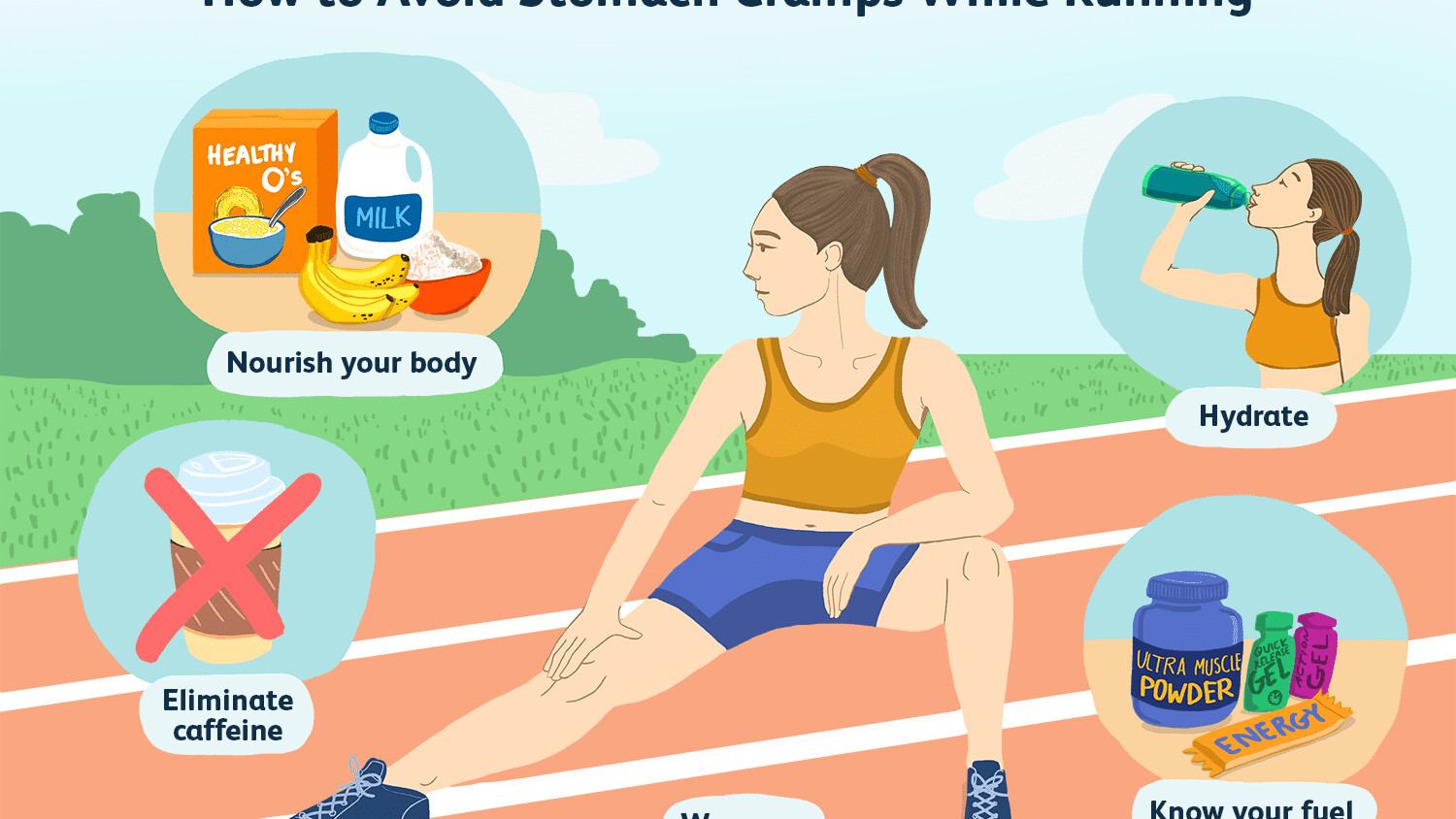

So what happens when this keystone of performance moves beyond optimal and into excess? What are the signs of too much fuel being added to the tank? While you’ve likely heard of the dangers of underfueling, it’s time to explore the other side of the equation—a.k.a. the surprisingly common misstep known as overfueling.
What does it mean to overfuel?
When it comes to fueling, there are typically three types of practices. Underfueling results in hitting wall after wall along the race course, causing you to miss a PR. Usually, a bit of knowledge coupled with some practice, and it’s pretty straightforward to move from underfueled to optimal.
The next approach is a bit of a unicorn: perfectly fueled, without distress or concern, mile after mile. Sometimes this happens by accident, but more than likely, steady energy is a result of research, as well as trial and error. The optimally fueled runner crosses the finish line with ego intact and wearing a smile (fingers crossed this look applies to you!).
Then, there are the runners who take gels, sports drinks, chews, and bars to the next level. This includes those who would rather let fuel runneth over before they’d let the tank get anywhere close to empty.
Overfueling is essentially more fuel than the gut can handle, and it takes many forms. It might look like you’re nailing down nutrition during training but come race day, your need to quiet the hunger that arises between prerace breakfast and a race that starts late forces you to eat more than planned. This additional energy and volume from multiple, larger servings of the meals and snacks that once worked on your before-dawn training runs won’t sit well on race day.
Here’s the thing, it’s pretty easy to move from optimal fueling to a member of the overfueling club (and vice versa if you have a change in your training schedule or race start or distance).
When it comes to under-, over-, and optimal fueling, the research is quite clear. Optimal fueling results from an intake of 30 to 60 grams of carbohydrate per hour of training or racing, ultimately providing steady energy from sources that agree with your gut. Because there’s a limit to the rate of absorption of a single type of fuel, additional carbohydrates from multiple sources such as glucose and fructose and therefore, reaching 90 to 100 grams of carbs per hour can also work for some people, as long as your body tolerates it. This extra fuel serves to drive the potential to go further and faster, but the “if tolerated” disclaimer is key. Sometimes additional fuel can derail the gut and therefore, derail performance.
What causes some runners to overfuel?
The gut—like any muscle—needs to be trained. Introducing fuel during long training sessions introduces the GI system to the task of digesting and absorbing fuel while under exertion. When fuel is consistently introduced and the gut then adapts, the GI system becomes primed to send fuel to working muscles without causing concern. But sometimes, runners adopt the mindset of “if some fuel can help performance, then more must be even better.”
Practice and experience hint at several common scenarios that lead runners to suffer from overfueling. For example, proactive runners might attempt to halt the dehydration and fatigue that’s certain to accompany an uptick in heat and humidity and in doing so, overestimate their needs, leading to GI distress at best and hyponatremia (which can occur when you drink too much and your body’s sodium drops) at worst.
Worn down runners might add in copious amounts of fuel during a run, all in hopes of preventing fatigue-driven performance detriments. To a degree, they’re on the right path as adding in midrun fuel is essential to keep moving forward. But more fuel can’t undo overtraining (or undertraining, for that matter). And insulting the gut with too many concentrated gels or in a volume exceeding the 1-gram-per-minute peak carbohydrate oxidation rate is unlikely to result in a burst of energy. Instead, the untrained gut will balk at the additional work needed to digest and absorb the load.
How do you recognize you’re fueling correctly versus too much?
You’ll know you’ve nailed optimal fueling once you find a source and volume that agrees with your gut. Your fuel will also allow you to hit a steady pace and maintain it, as well as find a rate of perceived exertion that correlates with the demands of the task at hand. And of course, with the right fueling, you’ll be able to finish your run feeling strong.
Conversely, you’ll know you’re underfueled when you experience low energy reserves, an inability to handle the task at hand, and an increased rate of perceived exertion particularly for work that tends to feel easier. Put more simply, you’ll feel your workout is more arduous than it should be, and likely hit the wall and fall off pace.
On the other side of the spectrum, overfueling brings about its own risk to performance. The primary concern is GI distress. If the carbohydrate consumed is highly concentrated, or the amount of grams per hour consumed exceeds the rate of absorption, gastrointestinal discomfort is highly likely. These signs and symptoms can range from upper GI issues such as nausea, vomiting, belching, heartburn, and chest pain, to lower GI issues such as bloating, cramping, and diarrhea.
How do you avoid overfueling?
Put a plan in place
Determine the start time of your goal race and then train to that time. If you have a late start, say 10 a.m., noon, or even sometime in the evening, experiment until you find a prerun meal that sits well and also keeps you full during the hours between eating and racing. (That means doing your long runs at the same time as your race, btw!)
Later starts may require you to have a prerun meal and then a snack a couple hours later so you don’t head to your starting corral with a growling stomach. That being said, you don’t want to head to your corral with a full stomach that’s still working to digest either. Practice timing and experiment with types and amounts of foods during training so you’ll know which meals and snack sit well, ad if the practice of a full meal plus topping off your tank with a snack is a practice that works for you.
Not sure of the what and when of a prerun meal? Keep in mind you need a moderate intake of protein, a low intake of fat, and a high intake of carb. Aim for an intake of 1 gram of carb per pound of body weight and give yourself two to three hours to digest before go time.
Get familiar with your fuel
You need to train your gut to tolerate adequate fuel and experiment to find a source that sits well. Start slow, adding in 30 grams of carbohydrate each hour during training runs which exceed 75 to 90 minutes. Add a gel, chew, or alternate source of fuel, starting 45 minutes into a run. Your prerun meal should carry you to this time marker and exogenous fuel can take it from there.
Whenever energy levels dip, add more fuel—but slowly! Start with an additional 10 grams of carbs each hour. Keep adding until you’re the runner who can finish the run with a smile on your face. And if your gut hints at discomfort, back off the fuel, divide it into smaller doses across the hour, or find an alternate source such as a different brand, a different form, or even a different mix of ingredients (such as glucose without fructose) the next time out.
Pair fuel with water
Remember: No matter the source of carb, you’ll need to dilute it with water. This practice reduces the concentration of carbohydrate to a level that allows it to be more readily absorbed. That means you want to always chase your gels, chews, or bars with water, not a sports drink.
It may take some trial and error, but you can uncover optimal fueling. You can find the amount of carbohydrate that balances performance with comfort—a balance struck when you increase carbohydrate availability during exercise from the right sources and in the right amounts, ultimately minimizing gastrointestinal distress and improving performance.
(09/11/2022) ⚡AMPby Runner’s World
Running Communities Across the Country ‘Finish Liza’s Run’
Runners took the streets in predawn hours to show women should be able to safely run at any time of day.Eliza “Liza” Fletcher regularly ran early in the morning in Memphis, Tennessee. But last Friday, the 34-year-old teacher and mother of two was violently abducted during her predawn workout and forced into an SUV. After a frantic search for her last weekend, her body was found on Monday in a vacant area 7.5 miles from where her run tragically ended.
A week after Fletcher started her run, running communities across the country decided to finish it in her honor.Starting in Memphis, hundreds of runners gathered Friday morning—at 4 a.m., a start time typical for Fletcher—to run her route around the University of Memphis in an event dubbed “Let’s Finish Liza’s Run” on Facebook.

According to the Commercial Appeal in Memphis, there were spectators along the 8.2 mile course with candles and signs. Memphis Police also controlled traffic for the duration of the run.
Runners completed a route that went past the spot where Fletcher was abducted last Friday. The Commercial Appeal caught the scene as runners stopped to leave a flower, message, candle, or prayer at the memorial.
“I’m so impressed with the turnout. It’s very emotional,” resident Margaret Craddock told CNN affiliate WHBQ at the run. “I’ve known Eliza slightly a long time ago. It’s a real tribute to her and just the fact that women should be able to get out early in the morning or whenever and do this. It’s so good for our city at this time to have everyone pull together.”
Around the country, other running groups did their part to “Finish Liza’s Run” as a way to show all runners deserve to run safely. Major cities like Philadelphia and Pittsburgh, and closer communities to Memphis such as Chattanooga and Mobile all gathered to get their morning miles in, in Eliza’s honor.
Fletcher’s funeral is set for Saturday at 10 a.m., according to her obituary. She was the granddaughter of the late Joseph “Joe” Orgill III, a Memphis hardware businessman and philanthropist, the Associated Press reports.
“A born athlete, Liza’s passion for sports extended from childhood teams to collegiate competition to excellence in marathons in adulthood. She found great joy in her morning runs with friends. She channeled her competitive nature into enthusiastic participation in all that she undertook,” the obituary reads.
Cleotha Abston, 38, is the man accused of abducting Fletcher last Friday and later killing her. He currently faces a charge of first-degree murder, plus the charges of kidnapping and tampering with evidence. He was detained near his home Saturday after investigators were able to track his vehicle with video surveillance that put him near the area of the abduction, and they received witness testimony that he was acting strangely. Abston’s DNA was also found on a pair of sandals near the scene where Fletcher was abducted, the AP reports.
Abston pleaded guilty to a kidnapping charge in 2000 and was released in 2020.
(09/11/2022) ⚡AMPby Runner’s World
Faith Chepng'etich asserted her supremacy as the world's best in 1,500m
World and Olympic 1500m champion Faith Kipyegon admits she never expected to go around the last bend alone on her way to victory on Day Two of the Zurich Diamond League on Thursday.
Kipyegon clocked 4:00.44 to win the women’s 1500m and rack up her third Diamond League title on the final day of this year’s League.
Ireland’s Ciara Mageean (4:01.68) and Ethiopian Freweyni Hailu (4:01.73) came second and third respectively.
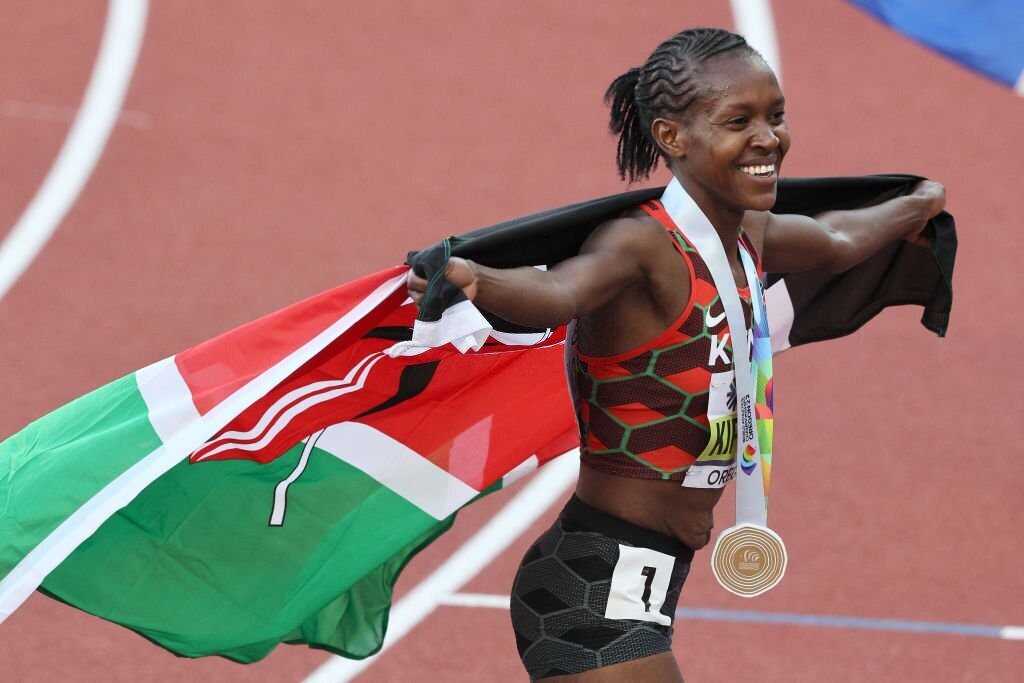
“I was hoping that when I pushed, they would come with me and it would be a tough race. I enjoyed it anyway, but it was really funny because I honestly believed they were coming with me so it almost felt that I was running on my own towards the end,” the double Olympic champion said.
She added: “I tried to follow the pacer and do my own thing. It is really special to race here, this is Zurich, and you can really hear it out there.”
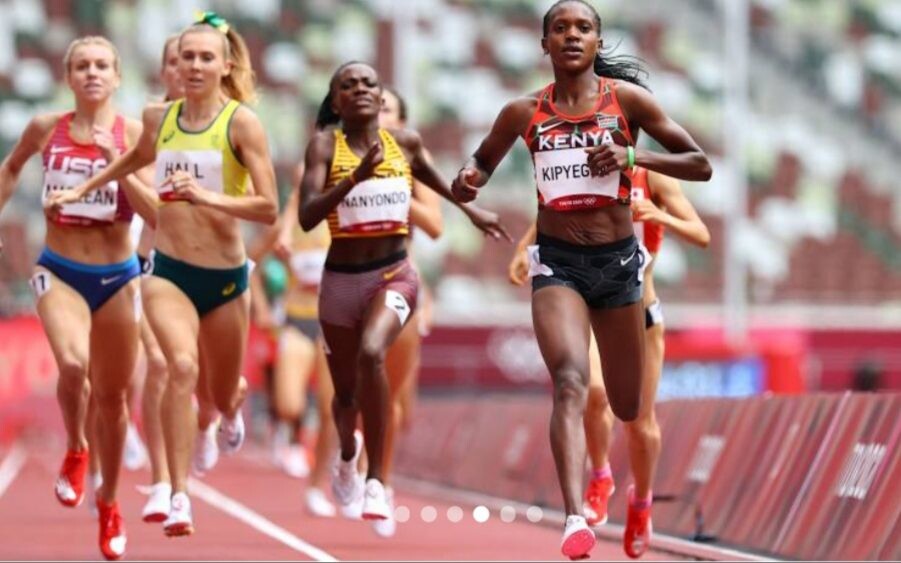
During this year’s edition of the prestigious track and field one-day meet, Kipyegon emerged victorious in the Prefontaine, Monaco and Zurich legs of the competition.
Last time out, in Monaco, she fell 0.3 seconds of setting a new world record, timing 3:50.37 on her way to victory.
Despite running slower this time, Kipyegon was still happy to finish off her season with a win and looked back to what has been business as usual for the two-time world champion.
“This was a really strong field, but then I kept thinking this was the last race of the season, and I took the opportunity to end it in a nice way. It has been a long season, and, indeed, my legs are tired, but I think I still managed to run a good time all things considered – like I said, it was a strong field,” she said.
Having cemented her status as the queen of the three-and-a-quarter lap race, Kipyegon will be keen on enhancing this reputation when she returns to Budapest next year to defend the world title she snatched from Dutchwoman Sifan Hassan in Oregon in July.
(09/10/2022) ⚡AMPby Omondi Onyatta
Experts Explain EPOC—the Body’s Ability to Burn Calories After You’re Done Exercising
It’s all about that after burn effect.
You probably know that during a tough workout—whether you’re running intervals or clocking long steady miles—you’re also torching calories. But the cool part? Even after you’re done with your run, your body continues to burn more energy. This process is called excess post-exercise oxygen consumption (EPOC), and it’s what people generally refer to as the “afterburn effect.” (If you’ve ever been to Orangetheory Fitness, it’s also what the brand’s programming is based on and why a main goal of class is to hit that orange heart rate zone—so you experience EPOC.)
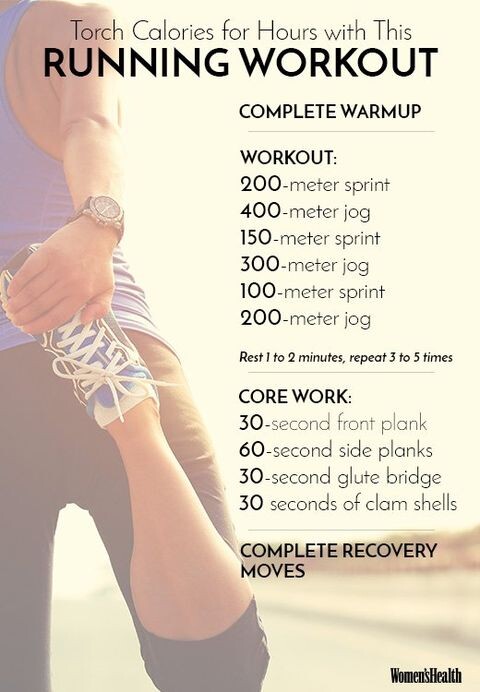

We spoke with two certified strength and conditioning specialists to get the basics on what EPOC actually is and what it means for runners. Here’s what to know.
What Is EPOC?
EPOC is simply your body’s way of cooling down after exercise. Our bodies use oxygen to produce energy while we’re exercising, and exercise that uses more oxygen—anything that’s more intense, such as an interval workout—burns more calories.
After exercise, your body needs to rebalance its hormones, restock its fuel stores, and repair damaged muscle tissue and cells to help it return to its normal state, according to Janet Hamilton, C.S.C.S., owner of Atlanta-based Running Strong, which offers coaching and rehabilitation services to runners. It expends energy to help accomplish this. As a result, your body continues to burn calories even after your workout is completed.
To make EPOC easier to understand, Pete McCall, M.S., C.S.C.S., likens it to driving a car.
“If you do a long drive and you turn your car off, your car isn’t going to become cool automatically,” he says. “It’s still going to be warm for—depending on the length of the drive—anywhere from one to five hours afterward.”
How EPOC Affects Runners
The more intense your workout is, the more EPOC you’ll likely experience. That’s because in order for EPOC to occur, your muscles have to work to a point of fatigue. So if you’re doing something like speedwork or strength training, you should theoretically deplete your muscles’ energy by the end of your session, according to McCall.
That being said, the amount of calories the average person will burn with EPOC isn’t as much as you’d think.
“If you do a moderate to hard workout, you’re going to have an EPOC effect of maybe two to 10 hours. But it’s not significant—it might be anywhere from 150 to 200 calories in the course of that time, which is only about 20 calories an hour, maximum,” McCall says. In fact, according to research published in Applied Physiology Nutrition and Metabolism in 2014, cyclists and runners who participated in speed interval training burned between 45 to 65 calories within the first two hours following their workout.
The EPOC effect from a longer, slower run—particularly those easy day runs—isn’t as big because you never deplete your muscles’ energy all the way.
What EPOC Means for Your Workouts and Fueling
As a runner, it’s definitely a good idea to incorporate high-intensity workout sessions, such as speedwork and lifting, into your routine. Not only will doing so allow EPOC to occur, but strength training on a regular basis can help boost your endurance, strength, and speed when it comes to running.
While you probably won’t burn an insane amount of calories postworkout, it’s still something. That means there still is some extra calorie burn, so you don’t want to risk under-fueling, Hamilton cautions. You need to be consuming enough to account for the number of calories you’re burning both during and after your workout.
“If you’re already giving your body the least amount of fuel it can possibly get away with, [muscle] tissue repair and regeneration [after a hard workout] is probably going to get shortchanged, and that’s when you run into injuries,” she says.
McCall agrees, saying it’s a good idea to stagger your workouts, so that if you do high-intensity one day, you should do something with a lower-intensity the next. That’s because the day after a high-intensity workout, your muscles may not have recovered 100 percent, so you don’t want to make them work as hard as they did previously—you want your body to be able to sustain itself going forward.
(09/10/2022) ⚡AMPby Runner’s World
The New Apple Watch Ultra Might Replace Your Garmin, Sleep-Tracker, and Drive Computer All at Once
The Ultra gets a titanium case, sapphire face, significantly better battery life, and better GPS and off-grid route-tracking features, making it a much more robust backcountry tool
I’ve switched between my Apple Watch and a Garmin Fenix watch for several years, depending on the day. The Apple Watch has been my go-to for daily life because it’s great at motivating me to get out for a run, keeps me up to date on notifications, stores a ton of music, and works seamlessly with my iPhone and AirPods.
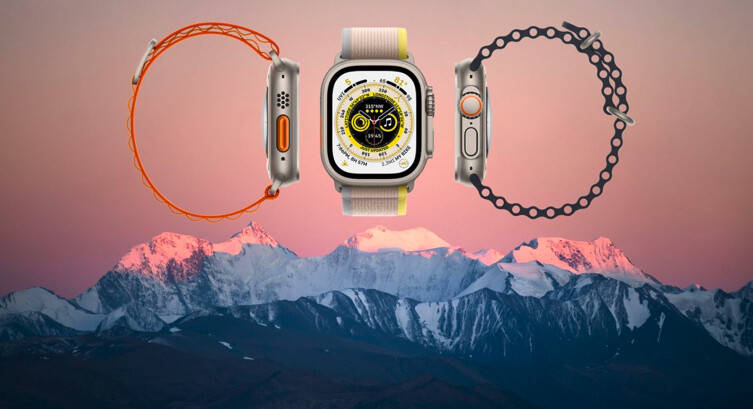
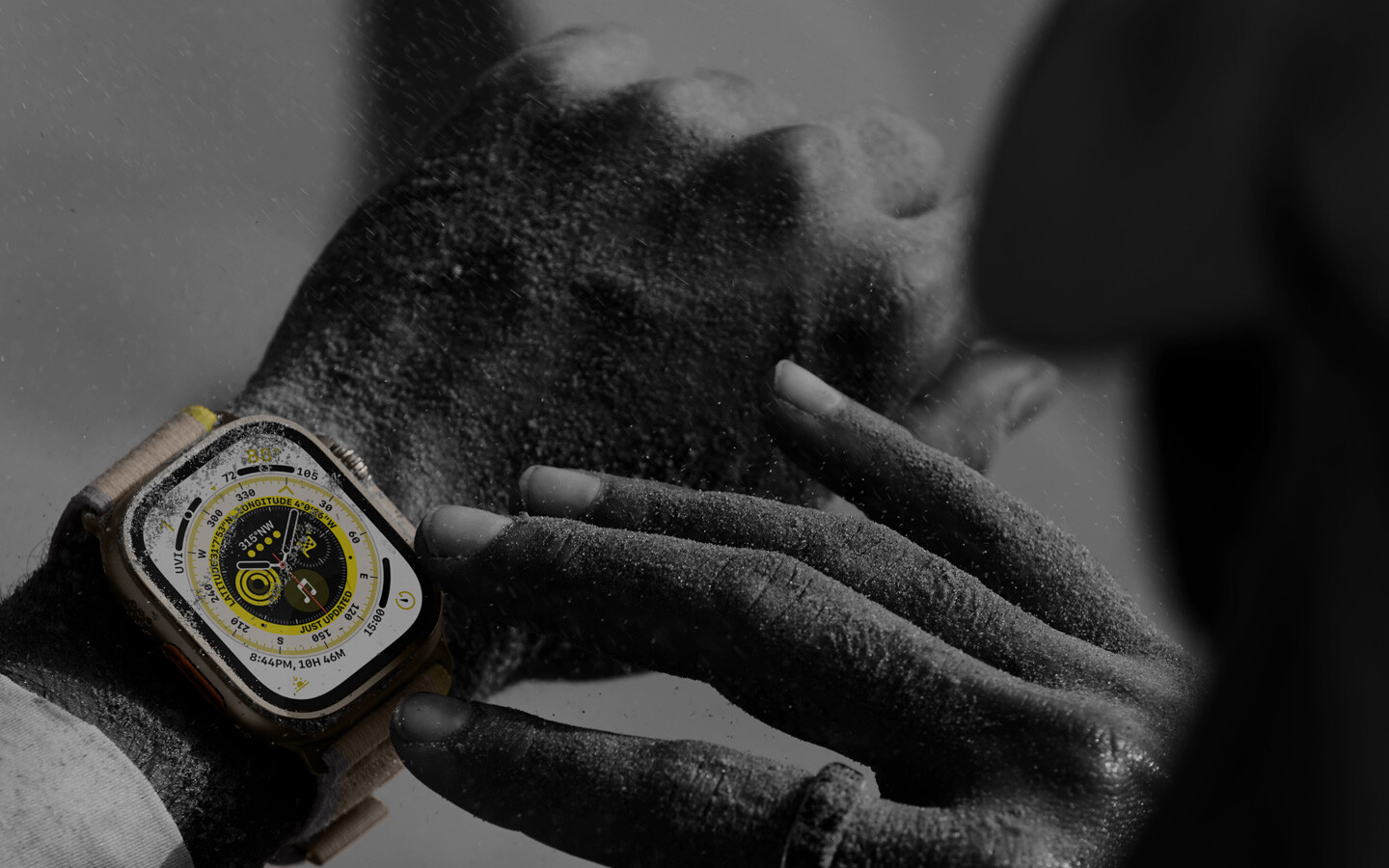
Out in the backcountry, I needed the Fenix because the battery lasts for weeks, it comes with a genuinely robust GPS and great tracking features, and you’d need a hammer to break the thing. On days when I was adventuring—backpacking, skiing, out on a bikepacking trip—I would always swap the Apple Watch for my Garmin because we all know that the regular Apple Watch isn’t very robust. The battery lasts a day at most, and the face tends to shatter if you bang the watch around.
This announcement from Apple, however, changes everything. I was in the Steve Jobs Theater at Apple Headquarters in Cupertino, California, today to hear that the brand will be launching the Apple Watch Ultra ($800) for those of us who need more than just a daily driver.
The Ultra is a significant upgrade because it goes a long way toward solving all three problems I mentioned above. The battery now lasts up to 36 hours, so you’ll be able to take it on multi-day adventures and not worry about dying. The outside is made of lightweight and robust titanium, and the watch face is made from sapphire (similar to what you’d find on some other high-end adventure watches), so if you go over the handlebars on your bike or yard sale on your skis, the watch should be fine. The Ultra now has an enhanced GPS feature where you can use the Compass app to leave waypoints while you’re out, and the watch can guide you back along them if you get lost—something that’s extremely useful while exploring any new backcountry area. Apple says their GPS is also optimized to connect even when next to tall trees and high-rise buildings.
Other adventure features I’m excited to test include:
Based on these stats, the Apple Watch Ultra is still not as robust as a top-end adventure watch like the Garmin Fenix 7X Solar (which I’ve been testing for the past year), so there will still be core users out there that prefer their Garmin, Suunto, or Coros watch. But for those who adventure and love the usability of the Apple Watch and other Apple Products, the Ultra finds an excellent middle ground. Watch this space for further testing of the Apple Watch Ultra, available to order now and arrives on Sept. 23.
(09/10/2022) ⚡AMPby Outside
I'm A Sports Nutritionist And These Are By Far The Three Most-Common Issues I See With My Athletes.
Question: "You've been seeing clients for many years and you're an accomplished elite mountain athlete. What are three themes you see folks getting wrong in their approach to endurance nutrition?"
As a sports nutritionist who works with athletes on a daily basis, I can tell you that I've seen it all. And that should not be surprising - our world is flooded with (mis)information on a daily basis. Eat this! Don't eat that! This food is healthy! This food group is unhealthy! This diet is the key to performance! Take this supplement, promise it will make you run as fast as Killian!

Humans are faced with making over 200 decisions about food every day, and yet most of us can't even decide what to make for dinner tonight. Combing through the hefty amount of food information thrown in our faces everyday through social media, the news, athletes we admire, and our peers can be overwhelming and stressful, even for a trained nutritionist.
As a general consumer of media and an athlete myself, I totally get it. Because of that, I have the utmost amount of empathy for my athletes who come to me feeling totally lost about what they should and shouldn't eat, and what they can do to improve their performance through nutrition.
That's why I started taking close notes on some of the most common questions from my endurance athlete clients. Here are three of the most common nutrition issues I see:
Issue #1: Not Eating Enough
The biggest issue I see is athletes not eating enough. Training and life are huge stressors, and even though most of my athletes have really good intentions of eating enough, they are often unaware just how much they really do need to eat to account for these stressors.
There are so many things that can complicate this, such as a change of appetite post-run, underfueling during runs, or just the sheer amount of hours spent on your feet, which can take away from time spent eating. It can be really hard to eat enough, so athletes need to devote as much time, effort, and attention into eating as they do to training, or to comparing the specific details of how the Hoka Speedgoat 5 is different from the Speedgoat 4.
Chronic undereating, whether purposeful or accidental, can lead to a variety of hormonal changes that can negatively affect your immune system, put you at higher risk for injury, and negatively affect your performance.
I've said it before, and I'll say it until the day I die - a real food diet full of nutrients and moderation, and one that brings us both physical and emotional satisfaction, is the secret to performance.
I always tell my athletes that, when in doubt, eat more! It's rare that an athlete will eat too much, even if they really try. Double up your servings, add extra snacks, eat more food before, during, and after runs, always eat dessert, and keep fun foods around the house - these things can help an athlete reach their daily calorie intake.
Personally, I'm a huge fan of adding avocado to anything and everything I can - tacos, toast, crackers, rice bowls, even smoothies. There's not an easier and more delicious way to boost calories, micronutrients, and healthy fats. Or my personal favorite: "pint of ice cream a night" tradition, which is by far the most fun and tasty way to get an extra 1,000 calories!
Issue #2: Believing in a Silver Bullet.
Just like you cannot outrun a bad diet, you cannot take a bunch of supplements to override poor food choices. I've seen athletes with a supplement list longer than my weekly grocery list.
While it might seem like the easy route, it will not always replace the benefits that come from eating real, nutrient-dense foods. While there are some exceptions for athletes on restrictive diets, and those with health issues, it can be possible for a person to get all of the nutrients they need from a balanced, nutrient-rich diet. For example, vegans might increase their dietary iron intake by making chili, which combines iron-rich beans with tomatoes. The vitamin C found in tomatoes can boost iron absorption in these non-heme, iron-rich food sources.
Supplements like fancy green powders, mega doses of multivitamins, and meal replacement powders are attractive due to their ease, but they are often just a short-term solution with short term benefits. Nutrient-dense, real foods will be much better absorbed and tolerated since real foods contain an array of things like vitamins, minerals, fiber, and antioxidants. These work synergistically to provide your body with what it needs to function well and efficiently.
More isn't always better, either. When we take certain types of supplements, we run into the risk of toxicity, especially in terms of fat-soluble vitamins (A, D, E, and K) and iron. This can harm internal organs and lead to severe, long-term damage.
If we take high levels of water-soluble vitamins (B vitamins and vitamin C), we're really just making some really expensive urine, as we pee out everything that our body doesn't need. Either way, we're probably just throwing money down the toilet (literally) or setting ourselves up for potential future health problems. We are much less likely to reach these toxic levels when we are able to consume these nutrients through food, and your body will utilize them a lot better.
Issue #3: Following a Specific Diet in Hopes to Achieve Better Performance.
You name it, I've seen it. I've seen athletes follow restrictive diets like keto, paleo, and gluten-free, even diets as outrageous as the grapefruit-and-bacon diet, in hopes that this "magical" diet will easily help them achieve their 50K PR with the snap of their fingers.
Most often, an athlete has been influenced by a pro athlete following that same type of diet, or maybe someone in their run group has found success while following one of them. And while I'm sure that there are some individuals out there who have found success following a specific, restrictive diet, it is by no means the secret to unlocking your potential or improving your performance.
Food plays many roles for us - physical, emotional, social - and its role on our physical and mental health is multifaceted. If we restrict foods (and therefore happiness!) with the hope of increasing our performance, our performance will undoubtedly suffer in the long term. If mental stress impacts our body the same way physical stress does on the cellular level, then stress related to restriction and dieting will negatively contribute to our overall health, affecting our performance and longevity in the sport.
I've said it before, and I'll say it until the day I die - a real food diet full of nutrients and moderation, and one that brings us both physical and emotional satisfaction, is the secret to performance.
Alex Borsuk Hasenohr, M.S., is sports nutritionist and professional trail runner for Dynafit. She is passionate about helping athletes reach their full potential through the use of practical nutrition, and she can be contacted through her website.
(09/10/2022) ⚡AMPby Trail Runner Magazine
Olympic sprinter shot dead during nightclub brawl in Bahamas
Bahamian sprinter and 2016 World Indoor silver medallist Shavez Hart was shot dead at a nightclub on Saturday morning in the Bahamas.
The police reported that the incident occurred after a fight in the parking lot of a local nightclub on Saturday at 2 a.m. Hart, a former sprinter for Texas A&M University, was shot in the chest while trying to break up the altercation.
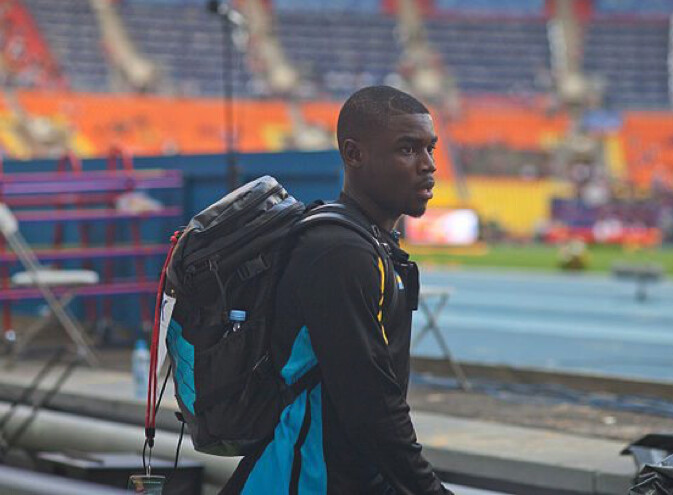
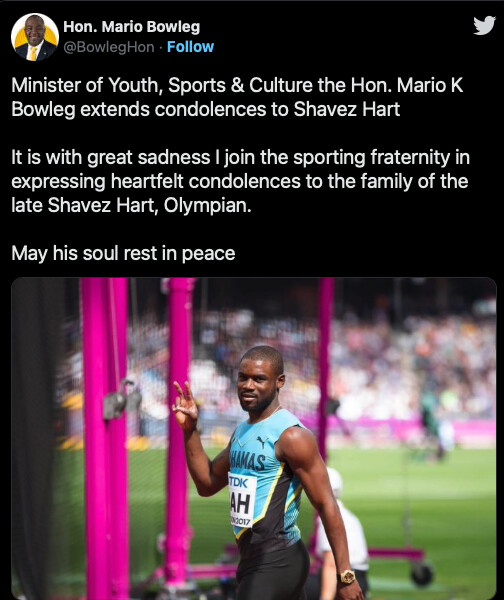
He was rushed to a local clinic, but was pronounced dead upon arrival. The suspect was arrested and taken into police custody; an investigation is ongoing.
Hart was celebrating his 30th birthday.
The 400m Olympic champion from the Bahamas, Steven Gardiner, tweeted, “The tears will have to dry on their own,” and highlighted several tweets commemorating his friend and compatriot.
Hart was the second former Texas A&M track star to die this year. Deon Lendore, his former Texas A&M 4x400m teammate, died in an auto accident in January.
Hart was an eight-time national sprint champion over 100m and 200m from 2014 to 2019 and had a 100m personal best of 10.10 seconds, making him the second fastest Bahamian-born sprinter of all time. He earned a silver medal in the 4x400m at the 2016 World Indoor Championships in Portland, Ore.
He also ran in the 100m and 200m at the 20
(09/10/2022) ⚡AMPby Running Magazine
Want to Run Faster? Here’s How to Do It
There’s no doubt about it: Running can be hard. But it doesn’t have to be!
“The goal of running faster,” says professional marathoner Stephanie Rothstein-Bruce, “is to run more economically and use the least amount of energy that you can.”
This becomes particularly important in long-distance running. After you’ve run 20 miles, the last thing you want to do is expend any extra energy — you don’t have much of it left! With a few smart tweaks to your routine, you can run much more efficiently with the energy you have — without having to pop an extra gel.

5 Tips to Run Faster, Starting Now
1. Roll Out.

You may foam roll after your workouts, but if you’re not foam rolling before, your body may not be ready for the workload you’re about to subject it to, says Daniel Viera, USA Triathlon Full Throttle Endurance coach. “Most of the time, the muscles can handle it,” he says, “but you want to make sure the tendons, ligaments and joints are ready.” Be sure to hit the glutes, hamstrings, quads, hips, calves and IT bands, spending 30 to 60 seconds on each muscle group before launching into your dynamic warm-up.
2. Drill, baby, drill!
Running fast isn’t about just running forward in a straight line. Drills such as butt kicks, high knees and Russian kicks (resting on one leg and kicking the other) increase proprioception (one’s perception of his or her body and the strength of effort being used in movement) and coordination, says Viera. He recommends beginning the drills slowly and increasing speed and velocity as you get comfortable with them. The payoff: Your body will learn to fire the correct muscles at the proper time.
3. Mix up the pace.
Running your fastest speed at every workout isn’t the key to getting faster, says Viera. As counterintuitive as it sounds, running slower can actually help you get faster! He suggests mixing things up with a slow endurance run, a tempo run and some speed work at a track at least once a week. “Working on your heart, lungs and muscles is the key to becoming a more efficient runner.”
4. Make your form work for you.
Guilty of swinging your arms across your body when you run? “The side to side motion is wasted energy for your arms as it forces your hips to counter the motion instead of powering you in a forward motion,” says Rothstein-Bruce (who runs a 2:29 marathon, so she knows a thing or two about running efficiently). She recommends practicing seated arm drills by sitting with the legs at 90 degrees and swinging your arms back like you’re beating a drum. And when it comes to “running tall,” imagine someone is pulling you up by your hair while maintaining a slight forward lean.
5. Get new sneakers!
Often, pounding the pavement in old sneakers can lead to injury, says Viera, and injured muscles are certainly not as efficient. Make sure to get fitted for new sneakers every 300 to 500 miles. And be sure to properly break them in by walking for a few miles before lacing up for a long run.
(09/09/2022) ⚡AMPby Theodora Blanchfield
Making Sure Your Running Shoe Complements Your Style
You do not want to imagine carrying out a strenuous activity like running on a running shoe that does not fit your style. You probably have thought going with the latest fashion is all you need; unfortunately, you should consider more criteria.
After buying your running shoe from the Australian Asics Store, you can only enjoy the maximum benefits attached by considering the necessary factors. You can only get the right footing balance after using the most suitable running shoe for you.
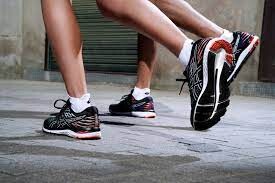
Your running shoe should fit your foot type to avoid foot injury and other complicated problems. What other thing should you know?
This guide will focus on pronation since it is a crucial consideration when choosing running shoes.What is the Meaning of Pronation?If you have come across the word "pronation" but have not figured out what it is, you are at the right place.
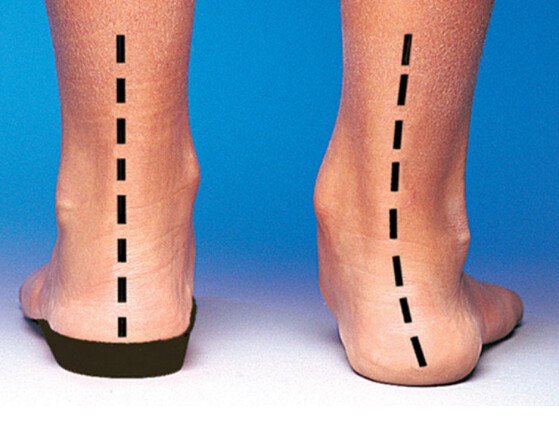
Pronation is a term used by experts to describe your feet' rotation while on movement. Usually, your feet will either roll inwardly or outwardly. Pronation is also divided into three categories. The first is normal or neutral pronation, secondly, underpronation, and lastly is the overpronation.
Normal pronation describes a person with a normal arch. That is, feet that do not rotate inwardly or outwardly in excess.Underpronation describes afoot with outward rotation, while over-pronation describes the inward process. Hence, the category you fall into will determine the best running shoe for you.
What to do After Knowing One's Pronation
People with neutral pronation are most lucky because most running shoes will be suitable for them. This is because the comfort depends on the level of activity the user engages in.
Since the feet neither rolls inward nor outward, you are good to go with almost every type of running shoe.People with underpronation will use different running shoes than neutral pronation.
Any attempt to use the same type of shoe as the neutral may lead to ankle strain and heel pain. This is because the lower leg receives more pressure anytime it comes in contact with the ground.
Therefore, apply enough pressure or cushioning to this part of your leg.Like people with underpronation, overpronation needs shoes that will apply pressure to the part of the leg with much weight, which is the inner edge of the foot.
In this case, you need support and stability from your running shoe as much as you can.In the three types of pronation, you must use reputable brands, which you will find in Asics stores in Australia. A reputable company not only understands what you need but also tailors your shoe to your need.
You can also check the company's website for reviews from past and present users. From there, you can decide if a company is reputable enough to provide the quality service you need.How to Know My PronationThe pain of wearing the wrong shoe is far greater than letting go of some time to conduct a gait analysis with AU Asics Stores.
With this analysis, you will know your foot type and the right running shoes to wear afterward. If you require it, you can carry out this analysis before making an order or purchase. Among other reasons, this is important because it prevents overspending. It also limits the stress and time in returning a shoe.
While some brands or stores would allow an exchange, some would not, nor will they refund.If you cannot carry out a gait analysis with a store, you can get it done at a health center. However you choose to discover your pronation, always remember that it is crucial to have your right shoes on.
This will help you cover a long-distance or run a competition successfully.Any Other Criteria I Should Consider?
Apart from your foot type, you should consider the quality of the material you are using. Also, the shoe should not be too tight but relatively comfortable. A shoe made with quality material provides the utmost comfort because it allows airflow and exhales excess heat and sweat from the feet.
Another criterion you should consider is price, which people barely talk about. Bear in mind that an expensive or famous shoe brand those not equate quality services. You will get these services at a high price, which you could have gotten at a lower price for the same quality elsewhere.
(09/09/2022) ⚡AMPTry fartlek training to get sneaky fit
If you are wanting to improve your times over 5K and 10K, introducing speedwork into your training program is the easiest way to get faster. But which type of speed workout is most efficient? This unique speed workout called fartlek (the Swedish word for “speed play”) is designed to get you comfortable with a variety of paces, and is one of the easiest ways to incorporate speedwork into your mileage.
Instead of doing set intervals on a track, fartleks are unstructured and can be done on any terrain.

Fartlek running is a great low-key way to get sneaky fit because of its lack of structure in comparison to an interval or track workout. Fartlek running consists of random bursts of up-tempo running lasting anywhere from 15 to 60 seconds or so.
The purpose of this style of training is continuous running, so don’t stop in the middle. If you need to stop, you might be pushing too hard; try slowing down a bit.

To begin the workout, start with 10 minutes of easy jogging, then choose an object about 200m away, and run toward it at a fast but controlled pace. (If you run with a GPS watch, you can substitute a time goal for a visual landmark). Once you reach your target, slow down to a comfortable pace, or jog until your breathing returns to normal and you are ready to make another hard effort. Aim for six to 10 efforts, then cool down with 10 minutes of easy jogging.
Here are some other fartlek workouts to try:
5K run with 5 x 30 seconds hard effort in the middle
8K run with 10 x 45 seconds hard effort in the middle
10K run with 12 x 1-minute hard effort in the middle
Once you feel comfortable with fartlek workouts, you’ll notice an improvement in your speed and endurance, which will help prepare your mind and body for faster efforts come race day.
(09/09/2022) ⚡AMPby Marley Dickinson
Dutch track star Sifan Hassan mulling marathon switch
Dutch track star Sifan Hassan, who won double Olympic gold in the 5,000 and 10,000 meters at the Tokyo Games, said Tuesday she was thinking about stepping up to the marathon.
“I’m really planning to run marathon,” said the Ethiopia-born Hassan. “I don’t know when, but I’m thinking about it, I’m thinking about it every night and every day, whenever I run.”
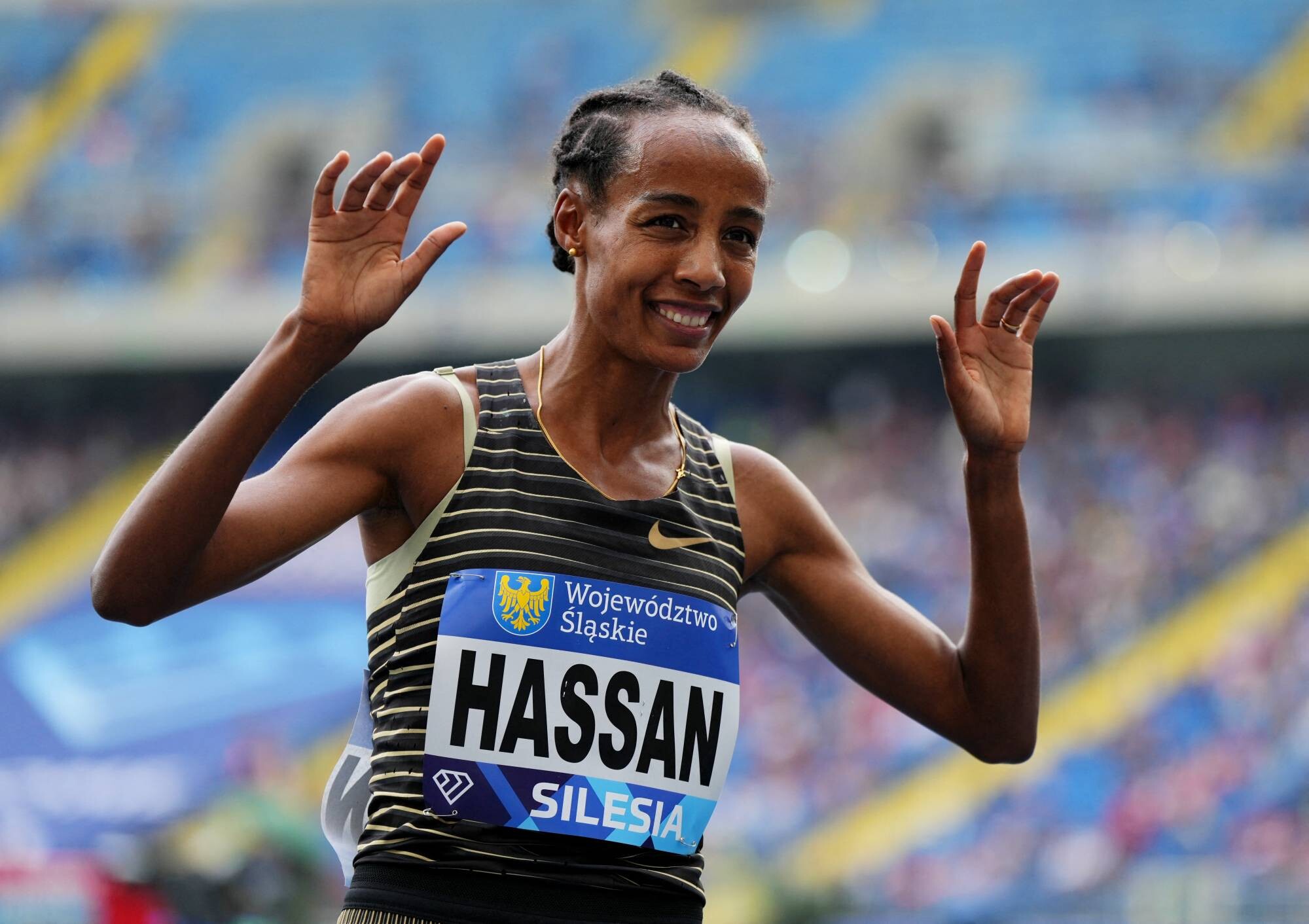
When asked whether she might have a tilt at the marathon at the 2024 Paris Olympics, she replied with a laugh: “Why not?”
Hassan, 29, also won bronze in the 1,500 in Tokyo in a remarkable bid for three titles.

That effort, however, took its toll and Hassan has enjoyed a hiatus from the sport, time she said that had been constructively spent learning about her true self.
“In Tokyo I did amazing, but it affected me a lot. This year for me is like a break of a year,” Hassan said ahead of Wednesday’s 5,000-meter race, part of the Diamond League finals in Zurich.
“I have to have a very big goal and very big challenge to go forward,” she added, describing herself as “curious” to see if she can push her limits for challenges as much mental as physical.
“I’ve lost a couple of races, which gave me a boost,” she said of this season. “I’m in great shape, I’m peaking now.”
Much was expected of Hassan at July’s world championships in Oregon, but she could only finish sixth in the 5,000 and fourth in the 10,000.
(09/09/2022) ⚡AMPParis 2024 Olympic Games
For this historic event, the City of Light is thinking big! Visitors will be able to watch events at top sporting venues in Paris and the Paris region, as well as at emblematic monuments in the capital visited by several millions of tourists each year. The promise of exceptional moments to experience in an exceptional setting! A great way to...
more...Organizers of the Great North Run have confirmed the main race will go ahead on Sunday in wake of Queen Elizabeth death
Issuing a statement on Friday, September 9, the Great Run Company confirmed a number of changes to the weekend’s planned events following the death of Her Majesty Queen Elizabeth II – but said that the main half marathon between Newcastle and South Shields will run as normal.
The Junior and Mini Great North Runs – scheduled to take place on Saturday, September 10 – have been cancelled.
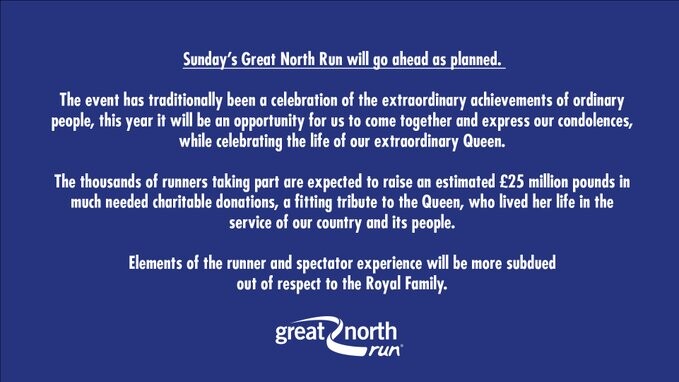
Queen Elizabeth II died on Thursday, September 8 at Balmoral Castle in Scotland. She was 96.
(09/09/2022) ⚡AMPby Debra Fox
Great North Run
Great North Run founder Brendan Foster believes Britain is ready to welcome the world with open arms after the launch of the event's most ambitious plan to date. The Great World Run campaign seeks to recruit one runner from every country in the United Nations – 193 in total – to take part in the iconic half marathon in...
more...Find your zen: fix focus and form with this running meditation
Practicing a simple running meditation on easy runs can help you tap into that much-desired flow state–where running feels effortless. Mackenzie L. Havey, author of Mindful Running, explains that adding mindfulness practice to your training has the potential to amplify the already brain-boosting effects of aerobic exercise, increase running performance, and lower anxiety and stress.
Accomplished ultrarunner Timothy Olson emphasizes how much being mindful has impacted his running.”Bringing mindfulness into anything you’re passionate about ignites your overall enjoyment of the whole experience. You become more skilled by becoming engaged in and focused on what you’re doing in the moment. The more you enjoy running, the better you are.”

Having the ability to calm your mind in a physically challenging or pressure-laden time is an enviable skill. Read through this simple meditation several times, and then try it while on your next few easy runs. You’ll find it gets easier over time, and you’ll have one more tool to pull out during your next hard race.
Basic running meditation

Choose something as an anchor for your attention–this could be your breath or your footfall.
Start an easy run, ideally on a trail or somewhere where there isn’t a lot of traffic. Make sure to be aware of your surroundings at all times.
Give yourself five to ten minutes to relax and settle into your run.
If you chose your breath as an anchor, follow each inhale to the end and then follow each exhale. If you chose your footfall, count each step up to ten and repeat. Pay attention to where your foot lands and how it feels when it pushes off.
When you notice your mind wandering, gently redirect it back to your anchor. Continually bringing your attention back to your breath or footfall will strengthen new neural pathways over time, enhancing your ability to concentrate.
With practice and when things line up, you will find that refocusing your attention on your breath or footfall can eventually lead you to flow state.
(09/08/2022) ⚡AMPby Running Magazine
Six tips for maintaining your running motivation over time
So, you’ve decided to give running a try - congratulations! Running is one of the most simple, and rewarding ways to work out. The running community is often enthusiastic in their love of the sport, and hopefully you are starting to understand why. Maybe you’ve already experienced your first runner’s high, or you might be wondering what all the fuss is about. The truth is, no matter how long you’ve been a runner, running can be challenging. It takes grit to get your run in on a chilly day or at the end of a long week. Don’t worry, running will get easier as long as you stick with it. Here are six ways for new runners to stay motivated.
1. Define your goals
One of the biggest challenges runners face is simply getting out the door. Having a goal to work toward can help give you the extra nudge you need on days when motivation is low. Think about what pushed you to start running in the first place. Maybe you want to finish your first 5K, are trying to spend more time outside, or are looking for a new social group.

Try to come up with a specific, measurable goal that relates backs to what initially inspired you to run. Having a specific goal not only gives you an incentive to get out the door, it reminds you to celebrate your progress and commitment to running. Although COVID has placed limitations on connecting in-person, there are still plenty of ways to work towards your goals! Look for a virtual challenge on Strava or look for virtual or in-person training programs through your local Fleet Feet. Every runner struggles with motivation sometimes. Reflect back to your goals as additional inspiration to keep you moving on the rough days.
2. Set a schedule
One of these easiest ways to lose motivation is to get out of the habit of running. Even for the most experienced runners, it can be challenging to get back into the rhythm of running after a long break. A simple way to stay motivated to run is to add running to your weekly schedule. Decide how many runs you want to accomplish weekly, and get in the habit of scheduling them for the same day and time every week.
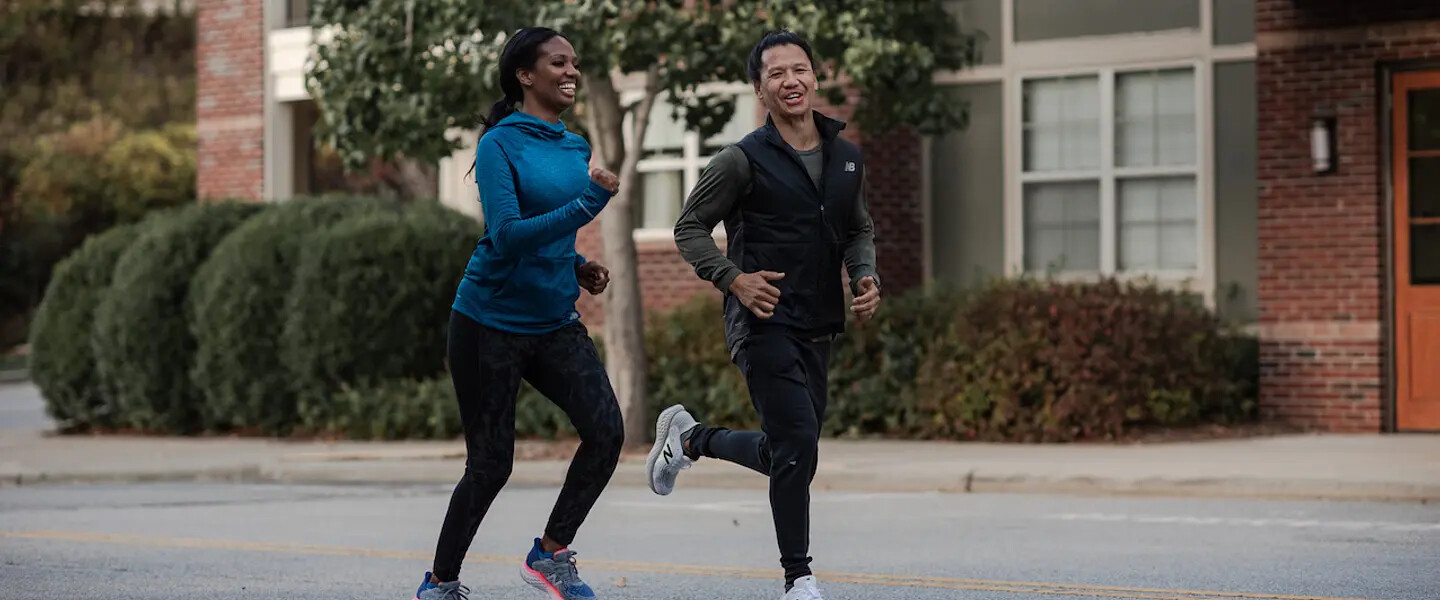
Try starting with three runs a week in your training plan. Find one hour each day that you can consistently block off for your run, and stick to that time as often as possible. If 6:30-7:30 is free every Monday, Wednesday, and Friday, designate that as your official running time. Make sure partners, friends, and anyone else you interact with day-to-day also know that this is your running hour to help avoid scheduling conflicts. Not only will this help you avoid the stress of squeezing in a jog when you feel short on time, it will also help prevent you from using lack of time as an excuse on days when you’re feeling low on motivation.
3. Aim for consistency over quantity
Let’s be honest - there will always be days when going on a run sounds like the last thing you want to do. There are times when it is the smart decision to skip a run, like during injury or illness. But in general, the most important runs to complete are the ones that we dread starting. On these days it can be helpful to shift your focus from finishing your scheduled number of miles, to simply putting on your running shoes, getting out the door and finishing something.
If you planned to run three miles, start with running a mile, or walking for 20 minutes. Maybe you’ll find you are actually capable of finishing your scheduled workout, or maybe one mile is plenty for that day. Even if you don’t finish the workout you had planned, having the grit to put a little work in on those tough days is an accomplishment worth celebrating.
4. Join a group
Many runners find that going on a jog alone is not quite as enjoyable as cruising around town with your closest friends. Running with a group is a great way to stay motivated and keep running a fun experience. Having a regular meet-up of people who are also working toward their goals can make it easier for running to become part of your routine.
Believe it or not, COVID has not completely cancelled run clubs. The popularity of running groups (in-person and virtual) is on the rise, and it’s not hard to see why. Running groups turn an everyday workout into a high-energy social experience.
Check your local Fleet Feet for a training group or social run in your area. It’s tough to make new connections during a pandemic. While it’s not quite the same as meeting in-person, virtual running groups still provide a great opportunity to form new bonds with fellow runners.
Members of virtual groups on Strava for example, are able to share maps of their runs, update group members on their progress, and cheer other groups member on from a distance. Seeing group members putting in the work (even if it’s from your phone) is a great reminder that you’re not tackling your running journey alone. To find a virtual group, head over to Strava.com and checkout their thousands of clubs.
5. Sign-up for a race
For new runners, the idea of signing up for a race can be intimidating. Yes, some people use racing as a way to experience competition, but in reality, road racing is a way for the running community to come together and celebrate each other's hard work. If you are interested in finding people to run with, a local road race is the perfect place to make connections and get to know your fellow runners. Although the afternoons of live music, food, drinks, and raffles will be toned down, some cities are slowly beginning to allow in-person races to take place again. Look for appropriate COVID precautions before attending an event. If the idea of running with other people is too far outside your comfort zone, sign up for a virtual race!
The beauty of virtual races is that they can be completed on your own time, at a location that’s convenient for you, and are still a great way to celebrate the work you’ve put in. It’s disappointing when an in-person race is cancelled, but there are ways to make a virtual option rewarding.
Check to see if your race is sending out bib numbers and t-shirts to wear while you race from afar. Plan out your route ahead of time, and have members of your household support you along the way - from the car! Having roommates or family members to be your mobile water station and cheer squad can keep some of that race day excitement alive. Make sure to snap a few pictures to share with the event organizers after you’ve crushed your solo run! Check out Running in The USA or your local Fleet Feet to find in-person and virtual races close to you. Signing up for a race is the perfect way to remind yourself of the progress you’ve made during your running journey.
6. Treat yourself
You may not fall in love with running right away - and that is okay! Regardless of where you are in your running journey, make sure to find ways to reward yourself for the work you have put in. Hopefully going on a run will become something that you begin to look forward to, but while you adjust to becoming a runner, don’t forget to reflect on the progress you are making.
It takes time for your body to become comfortable with moving for an extended period, so it’s crucial to allow yourself time to progress. Swap one of your runs for a relaxed walk, check out a new trail, or take an extra day off! If you are running with a group, make time to celebrate with your fellow runners even if it’s from afar. Share your progress in your virtual group, and cheer on other members.
Splurge on a massage to relax while you recover, or run a hot bath before a laidback movie night. Find a way to thank yourself and your body for the work you are putting in. Running is hard work - but it will get easier.
(09/08/2022) ⚡AMPby Claire Green
Kenya’s Barselius Kipyego Seeks TCS Toronto Waterfront Marathon Title
Kenya’s Barselius Kipyego will line up at the start of the TCS Toronto Waterfront Marathon on October 16 with the fastest personal best time of the elite field. But the 29-year-old wants more. Last year, he ran 2:04:48 to finish fourth at the Paris Marathon, which, like the TCS Toronto Waterfront Marathon, has earned a World Elite Marathon label. That’s twelve seconds under the Canadian All Comer’s record (2:05:00) held by his countryman, Philemon Rono, who will return to Toronto in search of a fourth victory in Canada’s biggest city.
Rono set that mark in winning the 2019 Toronto Waterfront Marathon—the last time this race was held in person. While it is foolish to compare times run on different courses and under different conditions, it is clear that Kipyego is bent on a sublime performance.
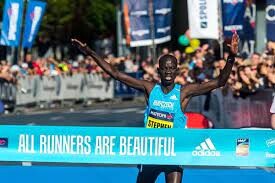
“I am coming to win the race. Then, I want to break the course record,” the affable Kipyego reveals during a WhatsApp video call. “That is why I sacrifice by staying in the camp so I can give my best to this race, so I can come fully [fit].”
Barselius is part of a 24-member group known as ‘2 Running Club,’ trained by noted Italian coach, Claudio Berardelli, in Kapsabet. He founded the club in 2016 with the aim of having a group of elite athletes bond as a supportive group despite marathon running being an individual sport.
“The idea to call the club with the number two was a sort of provocation,” Berardelli explains, “because, despite the fact that we train to be winners [number ones], the number two reminds us that a champion’s attitude goes beyond winning and being a number one.
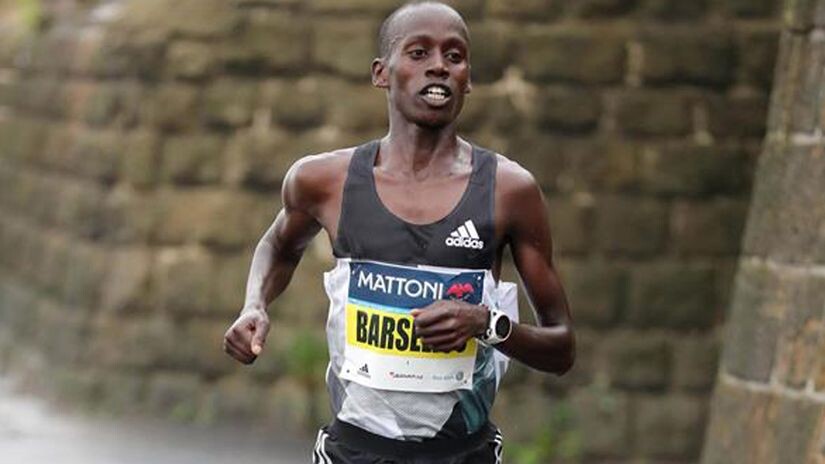
“Full commitment, perseverance, and self-esteem are some of the traits that might characterize an athlete who has really worked hard despite, in the end, not being a number one. In his own way he is a champion anyway.”
The camp is about 2,000m above sea level in the Great Rift Valley. Sharing household chores, they normally run twice a day, rising early in the morning to have coffee before setting out for their first run. Their post-run breakfast menu often includes tea, bread, fruit, and eggs. Normally runners will stay Monday to Friday at the camp for convenience and to minimize distractions. There is a television in the camp and Kipyego says he enjoys watching Nigerian movies in his spare time. They would spend weekends with their families but Barselius is taking a different approach with a Toronto victory in his sights.
“My home is about three kilometres from the camp,” he explains. “I have two children, boys, The first boy is called Dayton Kigen and the second, Dalton Kipkemboi. I used to go home sometimes but nowadays, because I am focusing on Toronto, I am staying in the camp. “I miss them but I call them and speak through video calls. My wife knows I am focused on the race [the TCS Toronto Waterfront Marathon] for some time and then I will go home after the race.”
In his absence, his wife Nahum Jelagat not only looks after the children but also takes care of the small farm Kipyego is investing his money in. “Yes, I have a farm. I am a farmer,” he says with a smile. “My wife now is looking after the farm because I am focusing on this race. She is the full manager. I have a tea plantation I grow maize and vegetables. And cows. We have cows.”
Amongst the elite training group are several athletes training for a fall marathon including Benson Kipruto who won the 2018 Toronto Waterfront Marathon and then finished fourth the following year in a personal best of 2:05:13. While Kipruto will run in Chicago, he has been encouraging to his training partner about what to expect in Toronto. The intel he has provided to Kipyego is evidently very positive.
“I just heard that it is a flat course and is a good race,” Kipyego responds when asked what he knows about the Toronto event. “I asked Benson when he won the race. I am training with him now.
“Yes, it is possible [to beat the record]. If the pacemakers set a good pace, we will run well and beat the course record.”
It is presently part of the rainy season in East Africa and heavy rain can sometimes complicate training. The dirt roads can become muddy quagmires causing the group to switch training venues. In this case, they will run later in the morning to avoid the worst of it. Still, it’s business as usual for the group.
“Training is good,” Kipyego reports confidently. “Every week we run 180km with some speed work and some long runs. Last week, I ran 40km for my long run. But every day I run 24 or 25km. I am feeling confident. My body is responding well now. I am ready to run that race in Toronto very well.”
Kipyego has never raced in Canada before nor has he faced his countryman, Philemon Rono.This matchup promises an intriguing chapter of the 2022 TCS Toronto Waterfront Marathon.
About the TCS Toronto Waterfront Marathon
One of only two World Athletics Elite Label races in Canada, the TCS Toronto Waterfront Marathon is Canada’s premier running event and the grand finale of the Canada Running Series (CRS). Since 2017, the race has served as the Athletics Canada Canadian Marathon Championship and has doubled as the Olympic trials. During the 2021 event, participants raised over $3.08 million for 151 community charities. Using innovation and organization as guiding principles, Canada Running Series stages great experiences for runners of all levels, from Canadian Olympians to recreational and charity runners. With a mission of “building community through the sport of running,” CRS is committed to making sport part of sustainable communities and the city-building process.
(09/08/2022) ⚡AMPby Paul Gains
TCS Toronto Waterfront Marathon
The Scotiabank Toronto Waterfront Marathon, Half-Marathon & 5k Run / Walk is organized by Canada Running Series Inc., organizers of the Canada Running Series, "A selection of Canada's best runs!" Canada Running Series annually organizes eight events in Montreal, Toronto and Vancouver that vary in distance from the 5k to the marathon. The Scotiabank Toronto Waterfront Marathon and Half-Marathon are...
more...Wall yoga for runners: Try these simple stretches to gain mobility and ease tight muscles
Wall yoga is perfect for those times you need to loosen up tight or achy muscles, but don’t have the motivation to leave the house (or the floor). Having even a very basic yoga practice can be complementary to your running program, and will help alleviate muscle pain and improve mobility–and the wall can be the ideal free tool.
While you still get the benefit of a deep stretch, the wall does most of the work for you. Here are three stretches you can take to the wall this evening, and modifications to help you adjust each pose to work for your body.
Legs up the wall

Legs up the wall is the go-to pose for athletes. This inverted pose helps with your overall recovery by increasing blood circulation and draining any fluids that are pooling in your legs, while also stretching your hamstrings and giving lower-body relief.
While you’re giving that lower body both some care and increasing mobility, you’ll also be soothing your mind–studies show that legs up the wall pose has a calming effect on the central and peripheral nervous systems.
How to do it

Sit with your right side against the wall, with bent knees and your feet drawn in toward your hips. Swing your legs up against the wall as you turn to lie flat on your back.
Place your hips against the wall or slightly away, and place your arms in any comfortable position–stay here, adjusting as needed, for up to 20 minutes.
Modifications: place a pillow or rolled-up blanket beneath your hips if that feels more accessible, feel free to keep knees bent and feet planted, or straighten one leg at a time.
After you’ve spent some time in each pose, release slowly by gently pushing yourself away from the wall. Relax on your back for a few moments before hugging your knees into your chest and rolling onto your side, and taking your time to eventually find your way upright.
Wall butterfly
Butterfly pose targets the low back, hip, and thigh muscles, and helps reduce soreness, encourage flexibility, and increase range of motion.
How to do it
If you aren’t already in legs up the wall pose, find your way back there, bringing hips close to the wall and sending legs upwards.
Bring the soles of your feet together, creating a diamond or butterfly shape. Bend your knees and allow your feet to come toward your hips. Try holding for five minutes, but feel free to stay in longer if you’d like.
Modifications: to deepen the stretch, gently press your hands into your thighs.
Figure four stretch
Figure four stretch, sometimes called ‘thread-the-needle’ stretch, targets two notoriously tight areas for runners–glutes and hips. The stretch you feel very deep in your glutes is a muscle called the piriformis, which runs from the base of the spine to the top of the femur and helps with hip rotation and stability.
How to do it
Lie on your back with your feet flat on the floor. Bend your right knee and place your outer ankle at the bottom of your left thigh, just above the left knee. Slowly bend your left knee and press your foot into the wall, and then lower your left foot until your shin is parallel to the floor (or however close to parallel you need to bring your foot to feel a stretch).
You’ll feel a stretch in your right hip and thigh. Hold this position for five minutes, and repeat on the opposite side.
Modifications: adjust the placement of your foot against the wall, bringing your heel towards your hips to deepen the stretch.
Yoga studios can be intimidating, particularly for those new or returning to yoga. I’ve taught yoga for years and I still find it disconcerting to practice in a new place.
I love wall yoga because I can move gently through a relaxing routine in my pajamas, listen to my own tunes or practice in silence, and feel calm and re-energized post-session. Add some regular yoga breaks to your running training, and you’ll start to notice both physical and mental benefits.
(09/08/2022) ⚡AMPby Keeley Milne
John Hancock dropping Boston Marathon sponsorship after 2023 race
Insurance company John Hancock is saying goodbye to its role as sponsor of the Boston Marathon after nearly four decades.
It's a relationship that the company said helped to raise $426 million for charity over 37 years. The contract will end after the 127th running of the iconic marathon, which is scheduled for April 17.

"Our contract with the Boston Athletic Association (B.A.A.) was expiring in 2023 and after careful review we have chosen not to renew our principal sponsorship of the Boston Marathon after next year’s race," a John Hancock spokesperson said in a statement. "We are honored to have served as a steward for this historic race and thank the B.A.A. for their continued partnership over the years. We are looking forward to the 2023 race as principal sponsor and will work with the B.A.A. to ensure a smooth transition to its next partner."
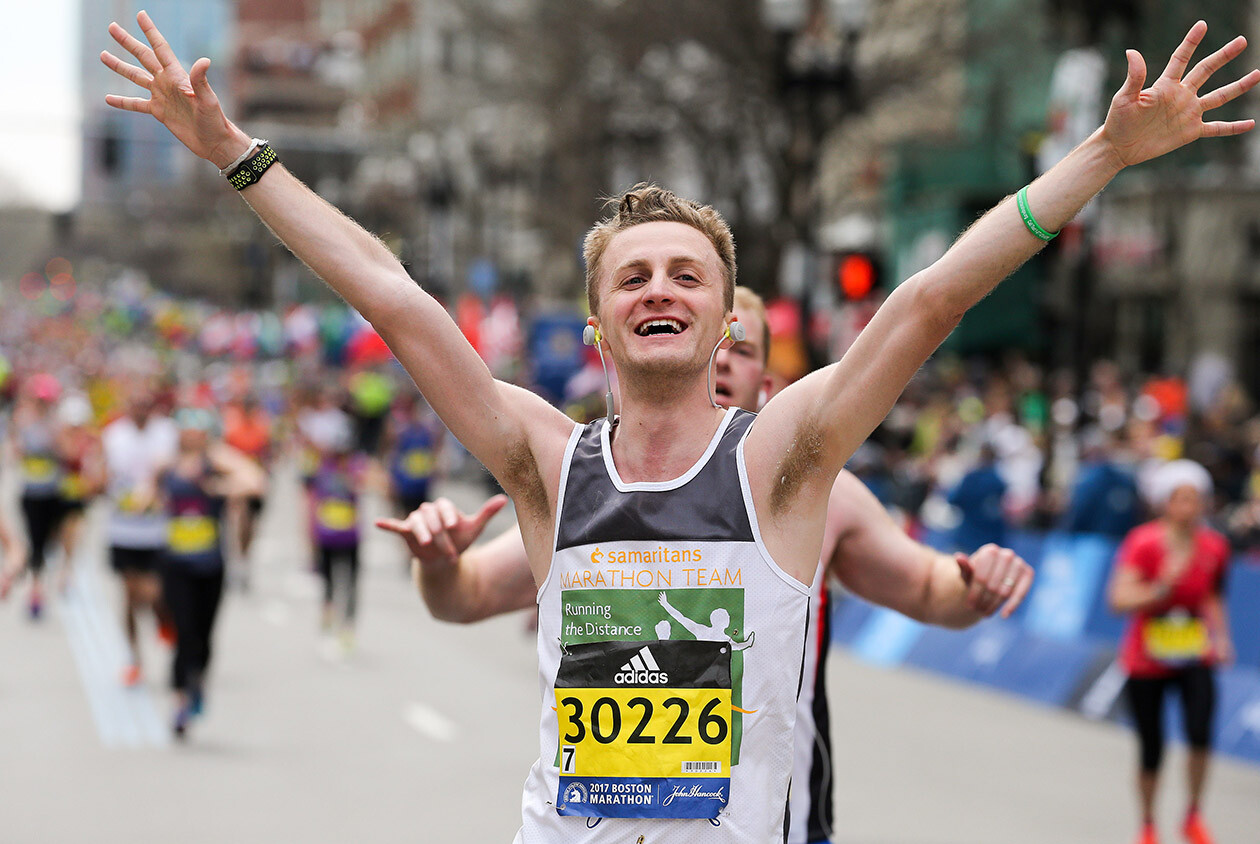
"The B.A.A. thanks John Hancock for 37 years of partnership, and we continue to work hand in hand in advance of next April’s 127th Boston Marathon," BAA officials said in a written statement. "We're excited to find our next Boston Marathon principal sponsor, and look forward to partnering with an organization who shares our passion for athletic excellence, community engagement, and growing the Boston Marathon to new heights."
John Hancock is also on the verge of ending another decades-long partnership with an iconic Boston institution. The company's lighted sign over the Fenway Park outfield will be coming down at the end of this season, as that 30-year partnership comes to an end.
Starting in 2023, coverage of the annual Massachusetts Patriots' Day race from Hopkinton to Boylston Street will be handled locally by WCVB Channel 5 and nationally by ESPN.
Full statement from the BAA:
"John Hancock has served as principal sponsor of the Boston Marathon for nearly four decades, helping to make the Boston Marathon the global and iconic race it is today. Together with the B.A.A., John Hancock has helped elevate all aspects of our event, from world-class professional athletes to fundraising for hundreds of non-profit programs. The B.A.A. thanks John Hancock for 37 years of partnership, and we continue to work hand in hand in advance of next April’s 127th Boston Marathon.
"At the B.A.A., our commitment to expanding events and creating more running opportunities has never been greater. We're excited to find our next Boston Marathon principal sponsor, and look forward to partnering with an organization who shares our passion for athletic excellence, community engagement, and growing the Boston Marathon to new heights. For 126 years, the Boston Marathon has been the world’s preeminent and most historic marathon. We're enthusiastically eager to embark on the next generation of Boston Marathon partnership."
(09/07/2022) ⚡AMPBoston Marathon
Among the nation’s oldest athletic clubs, the B.A.A. was established in 1887, and, in 1896, more than half of the U.S. Olympic Team at the first modern games was composed of B.A.A. club members. The Olympic Games provided the inspiration for the first Boston Marathon, which culminated the B.A.A. Games on April 19, 1897. John J. McDermott emerged from a...
more...Five Activities to Boost Your Post-Run Recovery
Runners have become accustomed to incorporating a warmup routine into their training. After all, warming up is an easy way to ward off injuries and a necessity for getting the most out of higher intensity workouts. For these and other reasons, many of us have developed our own unique warmup ritual that we customarily implement at the beginning of our runs. These warm up activities become such an integral part of our routine that we often perform them without thinking twice about it. But how many of us do the same after a workout?
In this article, I want to make the case for developing a post-run recovery ritual to help you transition out of workout mode. Time-crunched athletes often find themselves rushing from a workout to one of life’s other commitments. This leaves us moving from one activity to another with little time to relax in between. But for the yang of every workout or activity, we need those complementary moments of yin to absorb the training and destress. Going through the day feeling high strung all the time is a recipe for poor health and less than optimal fitness.
Make it a Ritual

The best way to incorporate some post-run recovery time into your workout routine is to ritualize it. By that I mean find a habitual practice that works well for you and becomes more or less automatic. It does not need not be long, even a few minutes will do. The point is to make that a time to relax and begin the recovery process.
As a high school runner and later as a high school track coach, I came to realize how important that post-practice de-stressing time could be. After the end of a workout, runners might find a grassy spot on the track infield to relax and socialize. In those moments, some athletes stretch, some grab a water bottle or snack, others get out the foam roller or massage stick, and others simply lie on their backs and watch the clouds drift by. Different individuals have different rituals, but the overall effect is to provide a valuable transition out of workout mode.
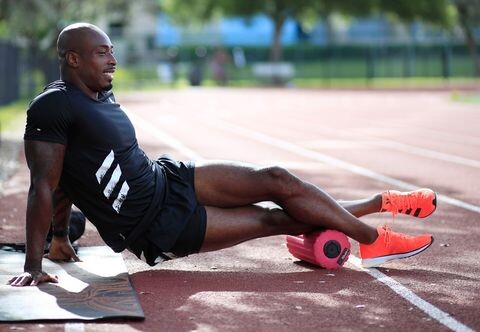
As adults, whether we do solo or group workouts, we can still tap into that same post-track practice mood. Before rushing off to the next commitment, take a few minutes to relax, socialize or simply reflect upon the workout. To ritualize that time, it is helpful to find some sort of activity to perform. Consider developing longer and shorter versions of your ritual. On days when time is of the essence, at least perform the shorter version. On days when you have more time to spare, do the longer version.
Recovery Activities
1. Stretching
Choose a set of stretches specific to your needs. Post-run, a short ritual might involve stretching the calves and quads; a longer ritual might also include the adductors ( the butterfly stretch) and psoas. Aim to hold each stretch for at least 30 seconds and up to three minutes.
2. Yoga poses
Complement your stretching with yoga poses. The warrior I pose (virabhadrasana I) benefits runners by targeting the hip flexors. From there, you can move into the warrior II pose (virabhadrasana II). The standing forward bend (uttanasana) is a good way to gently stretch the hamstrings and loosen the lower back. The squat pose (malasana) is essential for keeping the ankles, hips, and back flexible. The legs-up-the-wall pose (viparita karani) aids the movement of blood from the legs after a run. For a more meditative pose or to simply take some time to watch the clouds drift by, try the corpse pose (savasana).
3. Foam roller and massage stick
If you have these tools with you, take some time to roll out your lower back, iliotibial band, quads, hamstrings, and calves. In addition to a foam roller and massage stick, use a lacrosse ball to target trigger points (e.g. in the back or hips) and a golf ball to target the plantar fascia on the bottom of the feet. If you don’t have these tools handy, you can simply use your thumb or hands for some light self-massage to target areas like the calves, hips, and lower back.
4. Water and/or snack
Rehydrating and refueling are, of course, important to include in your post-run ritual. This could simply involve grabbing a water bottle to sip from while doing some of the activities listed above.
5. Revisiting your warmup routine
If you use drills or dynamic stretches as part of your warmup routine, you can also revisit those in your post-run ritual.
Even the busiest of runners needs to add a post run recovery ritual to their training. Doing so will help all runners recover faster and stay injury free so you can stay on track to meet your goals.
(09/07/2022) ⚡AMPby Adam Hoges
Jakob Ingebrigtsen wants to run a marathon
On Wednesday at the Diamond League Final press conference in Zurich, the Olympic 1,500m champion, Norway’s Jakob Ingebrigtsen, expressed interest in seeing what he could do in the marathon in the next three to five years.
Ingebrigtsen told British running legend and interviewer Steve Cram that he wants to run a fast marathon. Immediately, Cram laughed and said, “Why on earth do you want to do that?”
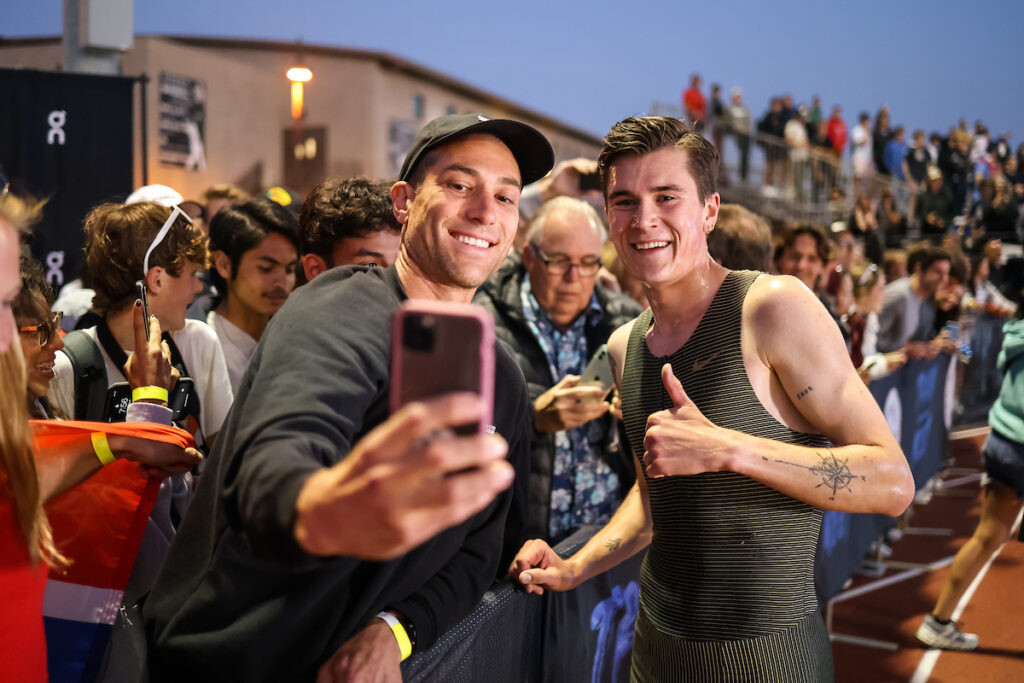
“I love the sport and running,” Ingebrigtsen replied. “I see people running well in the marathon, which inspires me to be able to see what I can do. Training for the marathon doesn’t seem fun, but I’ll have to try it.”
Earlier this summer, Ingebrigtsen chatted about doing the triple (1,500m, 5,000m and 10,000m) at the 2023 World Championships and 2024 Olympic Games. When the question arose, Ingebrigtsen said he’s always thinking and planning three to four years ahead.
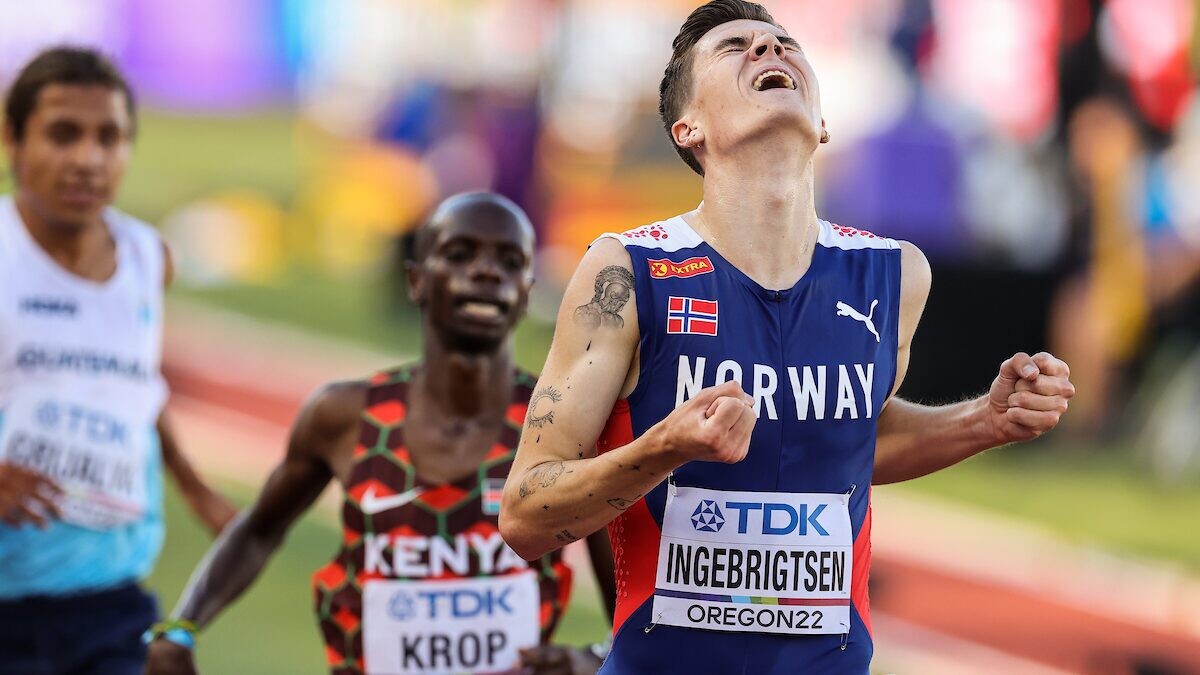
The 21-year-old gave no exact time or future race plans, but said he’s enjoying the 1,500m right now. “One thing I like about the 1,500m is that it’s only a three-and-a-half-minute race.”
Ingebrigtsen will look to win his first Diamond League title in the men’s 1,500m on Thursday afternoon. Last year, he finished second to Kenya’s Timothy Cheruiyot.
(09/07/2022) ⚡AMPby Marley Dickinson
Ten Running Excuses and How to Beat Them
Sometimes we have the best intentions to run, but something gets in the way: Our busy schedules, the weather, or even that we just we can't muster the motivation to get out there. Here's how to talk yourself back into your running shoes when you have plenty of excuses to not run.
1.- No Time to Run
Lack of time is one of the most popular excuses for skipping runs. Work, commuting, family obligations, maintaining a home, even just getting enough sleep: They all take time.
What to Do

When you block out time on your calendar for a run, it almost always happens. Just like you schedule a meeting for work or a doctor's appointment, schedule your runs. Prepare for them by changing into your running clothes beforehand and making sure you have everything you need.
Analyze your schedule and figure out what you're doing that's not contributing to a good quality of life. Look for things that you can cut out without regret. For example, are you spending time at night surfing the Web, social media, or TV? Use that time to run (you can even multitask by catching your favorite shows while you're on the treadmill) or go to bed earlier and run in the morning. You may be surprised at how gaps in time for running appear once you start weeding out the time-wasters or undesirable to-dos in your life.
2.- Too Tired to Run

When you're feeling sluggish, it's hard to get motivated to get up off the couch and out the door. But going for a run will energize you and make you feel better.
What to Do
You may be tired because you have low blood sugar, so eat a snack or light meal at least an hour before running. If you find yourself feeling really tired as you start your run, start off by walking and then pick it up slowly. Commit to a short run (just 10 or 15 minutes). You will likely find that once you've done that much, you feel good enough to continue. Try to remember this next time.
Extreme tiredness with a normal sleep schedule may be a sign of a nutritional deficiency, such as low iron, so talk to your doctor if you find yourself frequently feeling tired even though you're sleeping well at night.
3.- Too Sore to Run
This one is tricky, because running with an injury could make it worse. But it depends on where the injury is and how severe it is. Sometimes you can provide additional support but still keep running. If your breasts are sore, for example, a good sports bra should help. For sore feet, the right pair of shoes is often. but not always, the answer. For muscle soreness, say as the result of an especially strenuous run or workout, movement will help, so try to walk or stretch. Sore joints? Be cautious.
What to Do
If you have knee pain, in many cases you will need to take some time off from running. You can treat some injuries yourself, but often you will need to see a doctor or physical therapist. If you have hip pain, you may also need to avoid running until you are treated.
4.- Bad Weather
Unless you're lucky enough to live somewhere with a perfect climate, you will face bad-weather days that can make running harder: Too cold, too hot, too wet, too icy.
What to Do
Remember the saying: "There's no such thing as bad weather—just bad clothes." If you're dressed properly and prepared to deal with less-than-ideal running weather, you can still go for a run, and even enjoy it. But do take precautions for running in the cold, heat, and rain.
5.- Too Unmotivated to Run
Although we'd like to say that our busy schedule or lack of energy is our excuse for not running, sometimes the culprit is just not feeling like doing anything. Don't be scared to reach out to your friends and family members who also run and ask them for help. Chances are they've also struggled with bouts of lack of motivation. If your paces and schedules match up, make plans to run together so you can push each other to your potential.
What to Do
Even if your friends or family members don't run, you can still tell them about your running plans. Knowing that someone may be asking you, "How was your run?" can prompt you to get up off the couch.
Another trick to beat the "running blahs" is to redefine your run. Instead of thinking, "Ugh, I have to run today," turn that around and say, "I'm so lucky that I get to take a break from my crazy work and family life and go for a run today."
6.- Bored with Running
It's easy to get stuck in a running rut. We get comfortable running the same routes or decide it's easier to just jump on the treadmill.
What to Do
Shake up your running routine by mapping out some new routes using tools such as MapMyRun. Give trail running a try. Run with a local running group or convince a friend to join you on a run. Or, sign up for some local races—this will force you to run someplace different and will help get you motivated.
7.- Afraid of Injury
Yes, running injuries do happen, so this is definitely a valid concern. But most physical activities carry some risk of injury, and everyone still needs to make exercise a part of their life.
What to Do
There are many preventive steps that runners can take to reduce their risk of injury. Getting the right running shoes for your feet and your gait is important. Regular strength-training is another excellent way to protect yourself against common running injuries.
8.- Not Motivated to Run
All runners go through some periods when they're lacking motivation. Maybe you feel like you aren't making much progress. Or you're coming off an injury and feeling tentative. Or you've just met a big goal, and haven't settled on a new one yet.
What to Do
One way to get inspired is to find a running group. When you know other people are counting on you to be at a workout, you're more likely to show up. Tthe social interaction and competition that comes with group training also help boost your motivation.
You may also want to consider signing up for a local road race. Having a race on your calendar is great motivation to stick to your running schedule.
Try planning rewards for your running progress, too. It helps to have small rewards, such as an iced coffee after a long run, and big ones, like a new running outfit after a race, to keep you going.
9.- Too Busy With Kids
It can be very tough to fit in a run when you're busy caring for your family. But it's important for you—and your kids—to do something you enjoy that makes you feel good. Remember that you're a role model for healthy behaviors. Make running a priority in your life and remember the importance of self-care and staying healthy.
What to Do
Schedule your runs and get your spouse on board to help with child-care responsibilities. And get creative and take advantage of opportunities to run. For example, if you're watching your kid's soccer game, run some laps around the field before or even during the game. Seek out fitness classes or running groups that are stroller-friendly so you can bring your little one along during your workout. Invest in a treadmill so you can fit in runs early in the morning, before kids wake, or in the evenings after they go to bed.
10.- Too Crampy to Run
Having your period (or PMS) can put a literal cramp in your running style. Or maybe you have other symptoms, like sore breasts, fatigue, or bloating.
What to Do
Try to push through and lace up your shoes. Remember that 12 weeks out of the year is a lot of time to miss out on all the benefits of running. Some exercise may very well relieve your symptoms. Be sure you have a supportive sports bra, drink plenty of water, and consider taking an over-the-counter pain reliever for cramps.
Another option: Try a running challenge, whether it's a run streak, a new race, or adding intervals to your regular route. You might just find your mojo again.
(09/07/2022) ⚡AMPby Christine Luff
Boost recovery time to become a stronger runner
Paying attention to rest and recovery now will help you build strength and stay injury-free.
If you prioritize rest and recovery all of the time, you won’t need so much of it: or so research suggests. Some runners have a strict off-season, where they only cross-train or go on easy runs during the late fall and winter months. Others run straight through the winter, interspersing their diverse training with dialed-in recovery and rest throughout the year. Here are a few tips on how to maximize rest and recovery throughout racing season, so that you don’t have to take a prolonged break from your sport.

Always take one rest day (minimum) per week
All runners are different, and your rest and recovery needs will vary depending on how much general life stress you have going on. Our bodies don’t log mileage or care about our Strava data–they accumulate stress. This includes mental and emotional stress, so if you have a lot going on in your life, you may need more recovery time. Coach and ultrarunner David Roche advocates for a minimum of one rest day per week, two for athletes with stressful life situations.

Rest for three days at the sign of a potential injury
“It’s better to be 99 per cent too overprotective than one per cent too underprotective,” says Roche. When in doubt, rest. If the signs of potential injury persist after three days, seek a medical opinion. Inserting three days in a row of rest at any point in your training when you’re feeling over-taxed in life or well-being can be an efficient, simple training boost.
You won’t lose fitness in such a short period, and three days is often enough time to catch up on rest or deal with other life issues. By the third day, you’ll probably be itching to pull on your shoes.
Lots of rest after hard efforts and big races
In a tough race, we push our bodies into supercompensation mode. This can be a fantastic way to reach the higher echelons of fitness, but an extraordinary effort involves appropriately matched recovery.
When we run much harder than usual, our bodies get a bit of a shock: supercompensation training is the act of dramatically increasing your training load for a short period of time and then compensating by going very easy and maximizing recovery. Make sure to take full days off, eat a lot of nutritious food (your body needs fuel to recover), and to ease back into training with gentle activities or easy runs.
(09/07/2022) ⚡AMPby Keeley Milne
Kidnapped runner Eliza Fletcher’s body found in Tennessee
Memphis police released a statement via Twitter on Tuesday morning reporting that they had found the body of Eliza Fletcher, the 34-year-old woman who was abducted while running near the University of Memphis campus on Sept. 2. Her body was found in the rear of a vacant duplex apartment building 10 km from where she was abducted, but the cause and location of her death have not been determined.
According to a police affidavit, Fletcher went jogging at around 4 a.m. on Friday. At 7 a.m., when she had not returned home, her husband reported her missing. A male civilian walking by found her cellphone and a pair of Champion-brand sandals on the street in the area. He turned the items over to Fletcher’s family, who gave them to police.

Fletcher was seen last on local surveillance footage on Friday morning. Surveillance footage also showed a black GMC passing and then waiting for the victim to run by, according to the affidavit. A man exited the car and aggressively ran toward the victim, forcing her into the passenger’s side of the vehicle. The car then sat in a parking lot for around four minutes before driving away.
Cleotha Abston, a 38-year-old previously convicted kidnapper, who was released from prison in 2020 after serving 19 years, was arrested on Saturday and charged with aggravated kidnapping and tampering with evidence, according to Memphis police.

The DNA found on the Champion sandals left at the crime scene was a match for Abston, and surveillance footage also showed him wearing the same sandals the day before the abduction.
After the body was identified as Fletcher’s, Abston was charged with first-degree murder and first-degree murder in perpetration of kidnapping.
Fletcher was a mother of two and a preschool teacher in the Memphis area.
(09/06/2022) ⚡AMPby Marley Dickinson
Snapchat teases new augmented-reality running glasses
These glasses will allow you to see and train with virtual training partners, plus experience light-based pacing technology.
Snapchat has released a video teasing a few new updates on their augmented-reality (AR) glasses called “Spectacles,” with images and a video of users wearing the glasses on the track and while running.
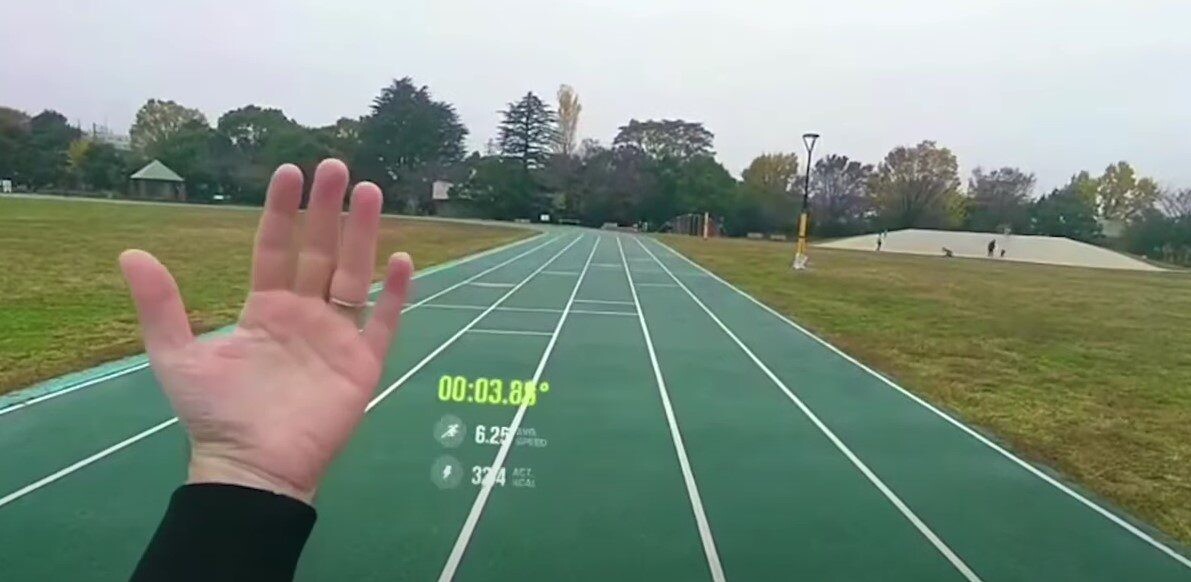
According to tech website UploadVR, these glasses will allow you to see and train with virtual training partners and experience light-based pacing technologies. The lights will help runners control and follow the speed that they are running. The glasses are also equipped with the standard pace, speed and distance information.
In case you are unfamiliar with augmented reality, it is a technology that superimposes computer-generated images into a user’s view of the real world. Snapchat is known for its AR lenses on phones, which overlay art on users’ selfies.

Currently, the glasses are only available for beta testers and creators. The multi-billion dollar social media company has not announced when these glasses will hit the open market, but UploadVR predicts within five to 10 years.
The Spectacles are a bit heavier than the usual pair of running glasses, coming in at 134 grams, approximately half the weight of a running shoe. While wearing these glasses, you can easily share your experiences with all your friends using the Snapchat app.
There is no doubt that these glasses will be a practical training tool for those looking to run with a virtual friend or hit the right pace in their next race.
We can’t wait for the debates about whether these performance-enhancing glasses will be allowed in your local 5K.
(09/06/2022) ⚡AMPby Running Magazine





